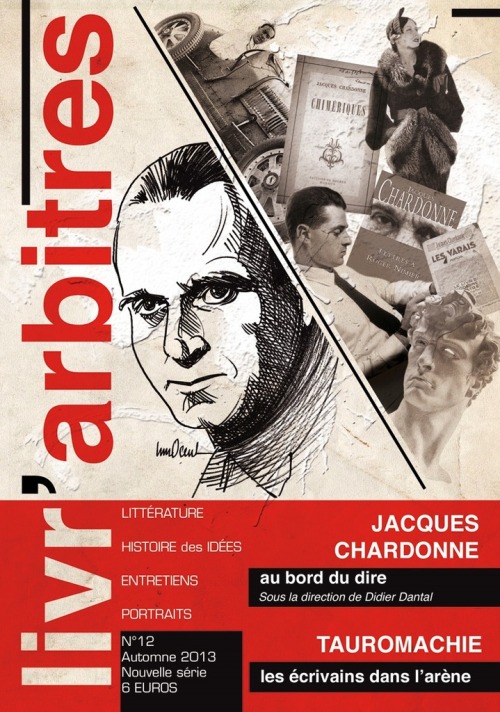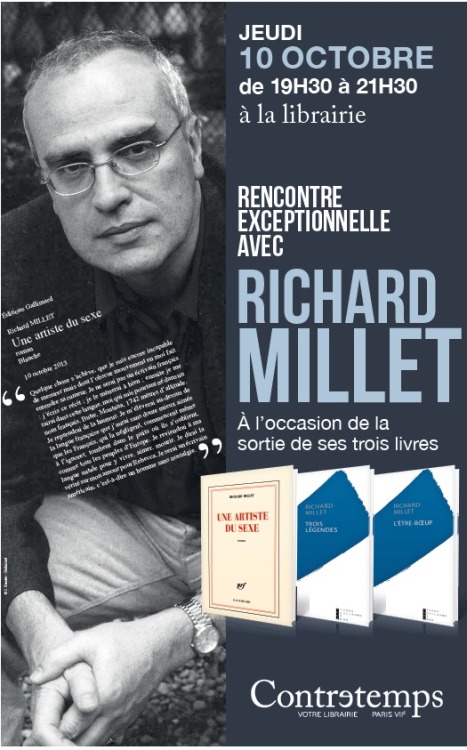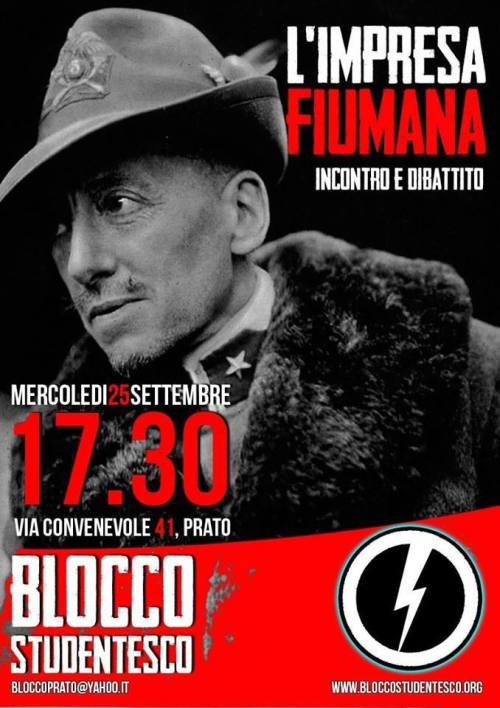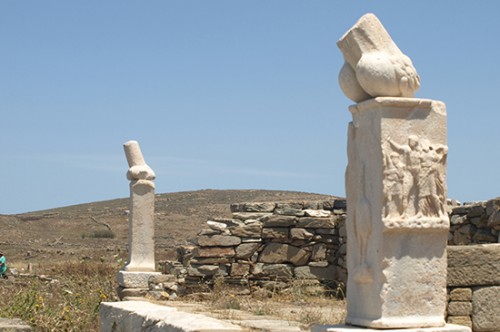samedi, 19 octobre 2013
Sixth Annual H.L. Mencken Club Conference
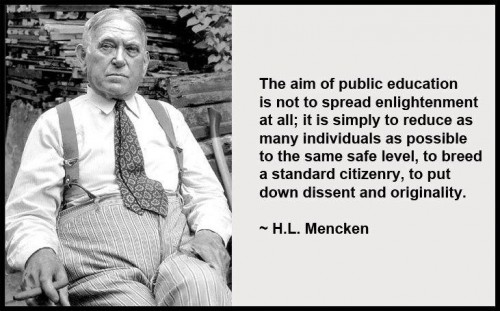
The Sixth Annual H.L. Mencken Club Conference
Decadence
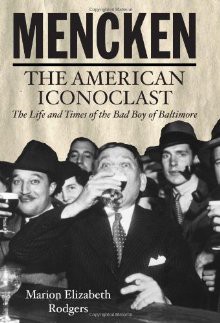 November 1-3, 2013
November 1-3, 2013
Friday, November 1
5:00-7:00 PM - Registration
7:00-10:00 PM - Banquet
Introduction - Richard Spencer
Presidential Address - Paul Gottfried
Life on the Traditionalist Fringe - Tito Perdue
Saturday, November 2nd
9:00-10:15 AM - Panel 1: Decadence and the Family
Moderator: Byron Roth
Dysgenics and Genetic Decline - Henry Harpending
The War on Masculinity and the Traditional Family - Steven Baskerville
10:45 AM – 12:00 PM - Panel 2: Social Decadence
Moderator: Keith Preston
The “Inclusion” Obsession - James Kalb
In Defense of Decadence - Richard Spencer
An Introduction to Decadence - Thomas Bertonneau
 12:30-2:00 PM - Lunch
12:30-2:00 PM - Lunch
The Normalization of Perversity - Special Guest
2:30-4:00 PM - Panel 3: Political Decadence
Moderator: Robert Weissberg
Decadence and Democracy - Michael Hart
The End of Citizenship - Carl Horowitz
Politics and Intelligence - John Derbyshire
7:00-10:00 PM - Banquet: Thrown off the Bus
William Regnery, John Derbyshire, Paul Gottfried, Robert Weissberg
Saturday, November 3rd
9:00-11:00 AM - Breakfast for H.L. Mencken Club Members Only
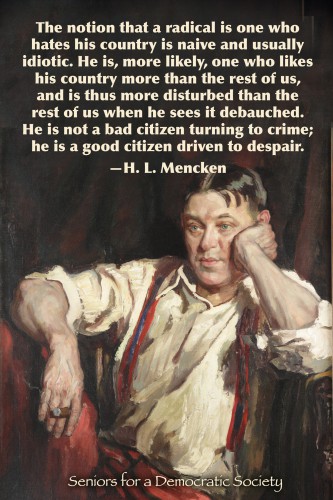
Speaker Biographies

Steven Baskerville
Stephen Baskerville is Associate Professor of Government at Patrick Henry College and Research Fellow at the Howard Center for Family, Religion, and Society, the Independent Institute, and the Inter-American Institute. He holds a PhD from the London School of Economics and has taught political science and international affairs at Howard University, Palacky University in the Czech Republic, and most recently as a visiting Fulbright scholar at the Russian National University for the Humanities. More recently, he has turned his full attention to the politics of the family in global perspective, and his most recenty book is Taken Into Custody: The War against Fathers, Marriage, and the Family (Cumberland House, 2007).
Thomas Bertonneau, visiting Professor of English at the State University of New York College, Oswego, New York. He holds a Ph.D. in Comparative Literature from UCLA. He has contributed to numerous journals and websites including Alternative Right, and is co-author of The Truth Is Out There: Christian Faith and the Classics of TV Science Fiction.

Thomas Bertonneau

John Derbyshire
John Derbyshire is a mathematician and cultural commentator. He is the author of several other books including Prime Obsession: Bernhard Riemann and the Greatest Unsolved Problem in Mathematics (2003). He writes for VDare.com and TakiMag.com.
Paul Gottfried is the President and Co-founder of the H.L. Mencken Club, and the author of nine books including Leo Strauss and the Conservative Movement in America (2012)

Paul Gottfried

Henry Harpending
Henry Harpending is distinguished professor of anthropology and Thomas Chair at the University of Utah, and co-author of the book The 10,000 Year Explosion (2009). Together with Gregory Cochran, he contributes to the blog “West Hunter“.
Michael Hart is the author of three books on history, various scientific papers, and controversial articles on various other subjects. His best known book is The 100: A Ranking of the Most Influential Persons in History. His most recent book is The Newon Awards: A History of Genius in Science and Technology , published this year by Washington Summit Publishers.

Michael Hart

Carl Horowitz
Carl F. Horowitz is affiliated with the National Legal and Policy Center, a nonprofit organization dedicated to promoting ethics and accountability in public life. He holds a Ph.D. in urban planning, and specializes in labor, immigration and housing policy issues. Previously, he had been Washington correspondent with Investor’s Business Daily, housing and urban affairs policy analyst with The Heritage Foundation, and assistant professor of urban and regional planning at Virginia Polytechnic Institute.
Jim Kalb is a lawyer (J.D., Yale Law School) and author, The Tyranny of Liberalism: Understanding and Overcoming Administered Freedom, Inquisatorial Tolerance, and Equality by Command (2008). His latest book is Against Inclusiveness: How the Diversity Regime Is Flattening America and the West and What to Do about It .

James Kalb
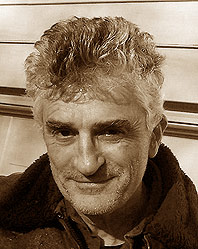
Tito Perdue
Tito Perdue is the author of several works of fiction. He has been dubbed “one of the most important contemporary Southern writers” by the New York Press, and his iconic character Lee Pefley has been called “a reactionary snob” by Publisher’s Weekly.
Keith Preston is the chief editor of AttacktheSystem.com. He was awarded the 2008 Chris R. Tame Memorial Prize by the United Kingdom’s Libertarian Alliance for his essay, “Free Enterprise: The Antidote to Corporate Plutocracy.”
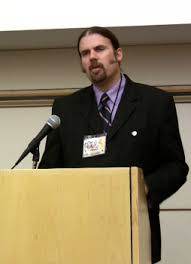
Keith Preston
William Regnery is the founder of the Charles Martel society, publisher of The Occidental Quarterly and a past chairman of the National Policy Institute, which he co-founded with Sam Francis.
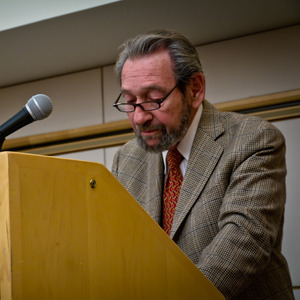
Byron Roth is Professor Emeritus of Psychology, Dowling College and is author, most recently, of The Perils of Diversity: Immigration and Human Nature. His work has appeared in The Journal of Conflict Resolution, The Public Interest, Academic Questions, and Encounter. His books include, Decision Making: Its Logic and Practice, co-authored with John D. Mullen and Prescription for Failure: Race Relations in the Age of Social Science.
Richard Spencer is a former assistant editor at The American Conservative and Executive Editor at Taki’s Magazine (takimag.com); he was the founder and Editor of AlternativeRight.com (2010-2012). Currently, he is President and Director of the National Policy Institute and Washington Summit Publishing and Editor of Radix Journal.
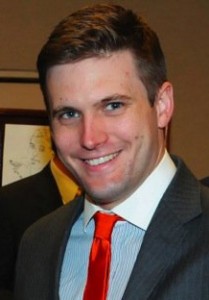
Richard Spencer
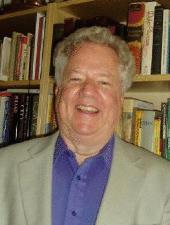
Robert Weissberg
Robert Weissberg is author of Pernicious Tolerance and other books including Bad Students, not Bad Schools (2012). He is a Professor Emeritus of Political Science, University of Illinois
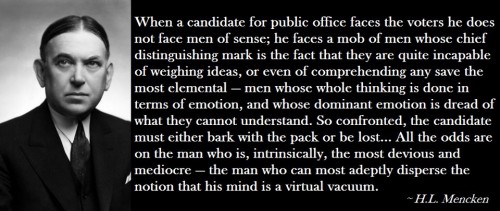
00:05 Publié dans Evénement, Littérature | Lien permanent | Commentaires (0) | Tags : littérature, philosophie, lettres, lettres américaines, littérature américaine, h. l. mencken, événement, états-unis |  |
|  del.icio.us |
del.icio.us |  |
|  Digg |
Digg | ![]() Facebook
Facebook
Michel Déon ou le bonheur malgré tout
Michel Déon ou le bonheur malgré tout
par Pierre Lafarge
Ex: http://aucoeurdunationalisme.blogspot.com
Après soixante années de vie littéraire, Michel Déon a eu la bonne idée de rassembler ses romans essentiels et deux récents livres de souvenirs (La Chambre de ton père et Cavalier passe ton chemin). Il a souhaité y ajouter certains de ses textes écrits pour des livres d’’art, et sa fille Alice y a adjoint une Vie et œœuvres chronologique et abondamment illustrée.
De Monaco à l’’Irlande
 Michel Déon est né en août 1919 à Paris. Il grandit à Monaco où son père, royaliste maurrassien, est directeur de la Sûreté. Ce dernier meurt alors que Déon n’’a que treize ans. Il retourne vivre à Paris avec sa mère et adhère à l’’Action française au lendemain du 6 février 1934. C’’est son condisciple François Perier, le futur acteur, qui lui a vendu la carte. Son bac en poche, Déon s’’inscrit à la faculté de droit et commence à travailler en parallèle à l’’imprimerie de l’AF.
Michel Déon est né en août 1919 à Paris. Il grandit à Monaco où son père, royaliste maurrassien, est directeur de la Sûreté. Ce dernier meurt alors que Déon n’’a que treize ans. Il retourne vivre à Paris avec sa mère et adhère à l’’Action française au lendemain du 6 février 1934. C’’est son condisciple François Perier, le futur acteur, qui lui a vendu la carte. Son bac en poche, Déon s’’inscrit à la faculté de droit et commence à travailler en parallèle à l’’imprimerie de l’AF.Mobilisé en 1940 il se bat dans les Ardennes et échappe de justesse à la captivité. En novembre 1942, il intègre comme secrétaire de rédaction l’’équipe de l’’A.F. repliée à Lyon. Il y restera jusqu’’en août 1944 aux côtés de Maurras, « vieillard de fer et de feu » qu’’il considérera toujours comme son maître en politique. Dans la capitale des Gaules, il sympathise avec Kléber Haedens qui assure la chronique sportive du quotidien royaliste. L’’arrêt forcé du journal coïncide avec la sortie du premier roman de Déon, Adieux à Sheila, chez Robert Laffont.
Le succès viendra plus tard et Déon, revenu à Paris trouve un emploi dans un magazine d’’actualité radiophonique. Il collabore également à divers autres journaux dont Aspects de la France. Entre deux voyages aux États-Unis ou dans les pays méditerranéens, Michel Déon, promeneur stendhalien, se lie au romancier André Fraigneau, auteur trop oublié de L’’Amour vagabond et des Étonnements de Guillaume Francœur.
Ce sont les années “Saint-Germain-des-Prés”, passées en compagnie de Fraigneau, Antoine Blondin et quelques autres, qu’’il immortalisera dans Les Gens de la nuit : « Cette soirée-là finit dans un restaurant des Halles devant des pieds de cochon grillés et une bouteille de Brouilly, en compagnie de deux filles épuisées de fatigue auxquelles nous ne disions plus un mot. » En 1963, jeune marié, Déon s’installe avec sa femme, Chantal, dans une île grecque, Spetsai, qui sera jusqu’’en 1968 sa résidence principale. Jacques Chardonne viendra l’’y visiter.
Cet attrait pour la Grèce et sa lumière, Déon le doit largement à la lecture de Lawrence Durell et Henry Miller. En 1970 il reçoit le prix Interallié pour Les Poneys sauvages, son premier véritable succès littéraire et en 1973 le Grand Prix du roman de l’’Académie française pour Un Taxi mauve. Ce dernier récit se déroule en Irlande où il s’’installe définitivement l’’année suivante et où il réside encore aujourd’’hui, à Tynagh, dans le comté de Galway. Ultime consécration littéraire, l’’Académie française l’’élit en son sein en 1978.
Trois livres essentiels
Pour comprendre Michel Déon (mais aussi Jacques Laurent ou Michel Mohrt), il faut se rappeler le traumatisme qu’’a été la défaite française de juin 1940, qui plus est pour de jeunes nationalistes de vingt ans. Ce ne sont pas les horreurs de l’’Occupation puis celle de l’’épuration qui devaient le rendre plus optimiste sur l’’état de son pays. Comme l’’a bien résumé le critique Pol Vandromme : « Déon n’’a pas d’’autre sujet que la décadence » (1). L’œ’œuvre de Déon c’’est, au fond, des instants de bonheur arrachés à la chute de la civilisation.
 Dans ce volume Quarto on trouvera notamment les trois romans les plus importants pour la compréhension des lignes de force de l’œ’œuvre de Déon : Les Poneys sauvages, pour la politique, Un déjeuner de soleil pour le romanesque et La Montée du soir pour l’’ouverture métaphysique. À travers les aventures de trois camarades de collège, de Georges Saval, de Barry Roots et de Horace Mc-Kay, Les Poneys sauvage nous content la confrontation tragique (2) entre l’’Histoire et l’’amitié dans le fracas du XXe siècle, de 1938 et 1968. Horace sera agent secret, Barry, militant communiste, et Georges, grand reporter courant « le monde pour empêcher la bassesse d’’ensevelir les vérités séditieuses » (Vandromme).
Dans ce volume Quarto on trouvera notamment les trois romans les plus importants pour la compréhension des lignes de force de l’œ’œuvre de Déon : Les Poneys sauvages, pour la politique, Un déjeuner de soleil pour le romanesque et La Montée du soir pour l’’ouverture métaphysique. À travers les aventures de trois camarades de collège, de Georges Saval, de Barry Roots et de Horace Mc-Kay, Les Poneys sauvage nous content la confrontation tragique (2) entre l’’Histoire et l’’amitié dans le fracas du XXe siècle, de 1938 et 1968. Horace sera agent secret, Barry, militant communiste, et Georges, grand reporter courant « le monde pour empêcher la bassesse d’’ensevelir les vérités séditieuses » (Vandromme).
Un Déjeuner de soleil, est pour sa part le roman d’’un romancier, la vie imaginaire de l’’écrivain Stanislas Beren. S’’y entremêlent subtilement la vie de Beren, ses œœuvres imaginés et le rythme du siècle, puisque chez Michel Déon on n’’est jamais très loin de l’’actualité. Réalité et imaginaire, par leur proximité, font ici plonger le lecteur au cœœur de la création romanesque.
« Livre quasi-mystique » dira Renaud Matignon de La Montée du soir qui consiste en une approche métaphysique de la vieillesse. Un homme d’’âge mûr voit, en effet, dans ce livre publié en 1987, s’éloigner malgré lui les êtres et les objets qu’’il a aimés. Pol Vandromme a fort justement rapproché ce texte aux accents panthéistes des Quatre nuits de Provence de Maurras. Mais on peut tout autant trouver des accents pascaliens à cette méditation sur les effets du temps.
Grâce et intégrité
Michel Déon a-t-il une postérité littéraire, nous demandera-t-on à juste titre ? Assurément, et dans cette veine nous avouons préférer sans hésitation les romans de Christian Authier à Eric Neuhoff (3). Saluons également à ce propos les travaux de la revue L’’Atelier du roman, dirigée par Lakis Prodigis, qui doit beaucoup à l’’auteur de Je ne veux jamais l’’oublier.
Michel Déon, conciliant grâce et intégrité, est bien de la race de ceux qui depuis deux siècles conservent envers et contre tout une attitude salutaire, parfaitement résumée par Montherlant dans Le Maître de Santiago : « Je ne suis pas de ceux qui aiment leur pays en raison de son indignité. »
Pierre Lafarge
L’’Action Française 2000 du 19 octobre au 1er novembre 2006
* Michel Déon, Œœuvres, Quarto Gallimard, 1372 p., 30 euros.
(1) : Dans son remarquable essai Michel Déon. Le nomade sédentaire, La Table Ronde, 1990.
(2) : Au sens que lui donnait Thierry Maulnier dans son Racine : « La tragédie ne peint pas des êtres : elle révèle des êtres au contact d’’une certaine fatalité. »
(3) : Auteur de Michel Déon, Éd. du Rocher, 1994.
00:05 Publié dans Littérature | Lien permanent | Commentaires (0) | Tags : michel déon, littérature, lettres, lettres françaises, littérature française |  |
|  del.icio.us |
del.icio.us |  |
|  Digg |
Digg | ![]() Facebook
Facebook
vendredi, 18 octobre 2013
Livr'arbitres - automne 2013
10:34 Publié dans Littérature, Revue | Lien permanent | Commentaires (0) | Tags : revue, littérature, lettres, livr'arbitres |  |
|  del.icio.us |
del.icio.us |  |
|  Digg |
Digg | ![]() Facebook
Facebook
La era de la ginecocracia
por Evgueni Golovín*
Ex: http://paginatransversal.wordpress.com
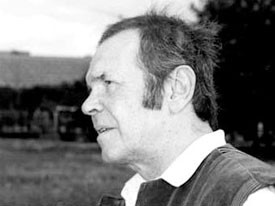 Muchos libros en nuestro siglo se han escrito sobre la visión del mundo femenina, sobre la psicología femenina y el erotismo femenino. Muy pocos fueron escritos sobre los hombres. Y estos pocos estudios dejan una impresión bastante desoladora. Dos de ellos, escritos por conocidos sociólogos son especialmente sombríos: Paul Duval – “Hombres. El sexo en vías de extinción”, David Riseman – “El mito del hombre en América”. La multitud masculina de rostros variopintos no inspira optimismo. Al contemplar a la multitud masculina uno se entristece: “él”, “ello”, “ellos”… con sus discretos trajes, corbatas mal atadas… sus estereotipados movimientos y gestos están sometidos a la fatal estrategia de la más pulcra pesadilla. Tienen prisa porque “están ocupados”. ¿Ocupados en qué? En conseguir el dinero para sus hembras y los pequeños vampiros que están creciendo.
Muchos libros en nuestro siglo se han escrito sobre la visión del mundo femenina, sobre la psicología femenina y el erotismo femenino. Muy pocos fueron escritos sobre los hombres. Y estos pocos estudios dejan una impresión bastante desoladora. Dos de ellos, escritos por conocidos sociólogos son especialmente sombríos: Paul Duval – “Hombres. El sexo en vías de extinción”, David Riseman – “El mito del hombre en América”. La multitud masculina de rostros variopintos no inspira optimismo. Al contemplar a la multitud masculina uno se entristece: “él”, “ello”, “ellos”… con sus discretos trajes, corbatas mal atadas… sus estereotipados movimientos y gestos están sometidos a la fatal estrategia de la más pulcra pesadilla. Tienen prisa porque “están ocupados”. ¿Ocupados en qué? En conseguir el dinero para sus hembras y los pequeños vampiros que están creciendo.
Son cobardes y por eso les gusta juntarse en manadas. Si prescindimos de las refinadas divagaciones, la cobardía no es más que una tendencia centrípeta, deseo de encontrar un centro seguro y estable. Los hombres tienen miedo de sus propias ideas, de los bandidos, de los jefes, de “la opinión pública”, de las arañas que se chupan el dinero y que lo dan. Pero las mujeres son las que más miedo les dan. “Ella” camina multicolor y bien centrada, su pecho vibra tentadoramente… y los ansiosos ojos siguen sus curvas, y la carne se rebela dolorosamente. Su frialdad – qué desgracia, su compasión erótica – ¡qué felicidad! “Ella” es la materia formada de manera atrayente en este mundo material, en el que vivimos solo una vez, “ella” – es una idea, un ídolo, sus emergentes encantos saltan de los carteles, portadas de revistas y pantallas. “Ella” es un bien concreto. El cuerpo femenino bonito cuesta caro, tal vez más barato que “La maja desnuda” de Goya, pero hay que pagarlo. Una prostituta cobra por horas, la amante o la esposa, naturalmente, piden mucho más. El lema del matrimonio estadounidense es sex for support. Las puertas del paraíso sexual se abren con la llavecita de oro. El cuerpo masculino sin cualificar y sin muscular no vale nada.
La realidad de la civilización burguesa
Aunque nos acusen de cargar las tintas, la situación sigue siendo triste. La igualdad, emancipación, feminismo son los síntomas del creciente dominio femenino, porque la “igualdad de los sexos” no es más que otro fantasma demagógico de turno. El hombre y la mujer debido a la marcada diferencia de su orientación están luchando permanentemente de forma abierta o encubierta, y el carácter del ciclo histórico-social depende del dominio de uno u otro sexo. El hombre por naturaleza es centrípeto, se mueve de izquierda a derecha, hacia adelante, de abajo a arriba. En la mujer es todo al revés. El impulso “puramente masculino” es entregar y apartar, el impulso “puramente femenino” es quitar y conservar. Claro que se trata de impulsos muy esquemáticos, porque cada ser en mayor o menor medida es andrógino, pero está claro que de la ordenación y armonización de estos impulsos depende el bienestar del individuo en particular y de la sociedad en su conjunto, pero semejante armonía es imposible sin la activa irracionalidad del eje del ser, convencimiento intuitivo de la certeza del sistema de valores propios, la instintiva fe en lo acertado del camino propio. De otro modo la energía centrípeta o destrozará al hombre, o le obligará a buscar algún centro y punto de aplicación de sus fuerzas en el mundo exterior. Lo cual lleva a la destrucción de la individualidad y a la total pérdida de control del principio masculino propio. La energía erótica en vez de activar y templar el cuerpo, como ocurre en un organismo normal, comienza a dictar al cuerpo sus propias condiciones vitales.
La androginia del ser está provocada por la presencia femenina en la estructura psicosomática masculina. La “mujer oculta” se manifiesta en el nivel anímico y espiritual como el principio regulador que sujeta o el ideal estrellado del “cielo interior”. El hombre debe mantener la fidelidad hacia esta “bella dama”, la aventura amorosa es la búsqueda de su equivalente terrenal. En el caso contrario estará cometiendo una infidelidad cardinal, existencial.
¿Pero de qué estamos hablando?
Del amor.
La mayoría de los hombres actuales pensarán que se trata de tonterías románticas, que solo valen cuando se habla de los trovadores y caballeros. Oigan, nos dirán, todos nosotros – mujeres y hombres – vivimos en un mundo cruel y tecnificado en condiciones de lucha y competencia. Todos por igual dependemos de estas duras realidades, y en este sentido se puede hablar de la igualdad de los sexos. En cuanto a la dependencia del sexo, sabrá que en todos los tiempos ha habido obsesos y erotómanos. En efecto, las mujeres ahora juegan mucho mayor papel, pero no es suficiente para hablar de no se sabe qué “matriarcado”.
Ciertamente, no se puede hablar del “matriarcado” en la actualidad en el sentido estricto. Según Bachofen, el matriarcado es más bien un concepto jurídico, relacionado con el “derecho de las madres”. Pero perfectamente podemos ocuparnos de la ginecocracia, del dominio de la mujer, debido a la orientación eminentemente femenina de la Historia Moderna. Aquí está la definición de Bachofen:
“El ser ginecocrático es el naturalismo ordenado, el predominio de lo material, la supremacía del desarrollo físico”
J.J. Bachofen. Mutterrecht, 1926, p. 118
Nadie podrá negar el éxito de la Época Moderna en este sentido. A lo largo de los últimos dos siglos en la psicología humana se ha producido un cambio fundamental. De entrada a la naturaleza masculina le son antipáticas las categorías existenciales tales como “la propiedad” y el tiempo en el sentido de “duración”. El carácter centrípeto, explosivo del falicismo exige instantes y “segundos” que están fuera de la “duración”, que no se componen en “duración”. El destino ideal del hombre es avanzar hacia adelante, superar la pesadez terrenal, buscar y conquistar nuevos horizontes del ser, despreciando su vida, si por vida se entiende la existencia homogénea, rutinaria, prolongada en el tiempo. Los valores masculinos son el desinterés, la bondad, el honor, la interpretación celestial de la belleza. Desde este punto de vista, “Lord Jim” de Joseph Conrad es casi la última novela europea sobre un “hombre de verdad”. Jim, simple marinero, ofendido en su honor, no lo puede perdonar, ni superar. Por eso el autor le concedió el título, porque el honor es el privilegio y el valor de la nobleza. El justo y el caballero errante son los auténticos hombres.
Podrán replicar: si todos se ponen a hacer de Quijote o a hablar con los pájaros ¿en qué se convertirá la sociedad humana? Es difícil contestar a esta pregunta, pero es fácil observar en qué se convertiría dicha sociedad sin San Francisco y sin Don Quijote. Don Quijote es mucho más necesario para la sociedad que una docena de consorcios automovilísticos.
La civilización burguesa es medio civilización, es un sinsentido. Para crear la civilización hacen falta los esfuerzos conjuntos de los cuatro estamentos.
Decimos: centralización, centrípeto. Sin embargo no es nada fácil definir el concepto “centro”. El centro puede ser estático o errante, manifestado o no, se puede amarlo u odiarlo, se puede saber de él, o sospechar, o presentirlo con la sutilísima y engañosa antena de la intuición. Es posible haber vivido la vida sin tener ni idea acerca del centro de la existencia propia. Se trata del paradójico e inmóvil móvil de Aristóteles. En el centro coinciden las fuerzas centrífugas y las centrípetas. Cuando una de ellas apaga a la otra el sistema o explota o se detiene en una muerte gélida. Es evidente: lo incognoscible del centro garantiza su centralidad, porque el centro percibido y explicado siempre se arriesga a trasladarse hacia la periferia. De ahí la conclusión: el centro permanente no se puede conocer, hay que creer en él. Por eso Dios, honor, bien, belleza son centros permanentes. Es la condición principal de la actividad masculina dirigida, radial.
En los dos primeros estamentos – el sacerdotal y el de la nobleza – la actividad masculina, entendida de esta forma, domina sobre la femenina. Y únicamente con la posición normal, es decir alta, de estos estamentos se crea la civilización, en todo caso la civilización patriarcal. El burgués reconoce los valores ideales nominalmente, pero prefiere las virtudes más prácticas: el honor se sustituye por la honradez, la justicia por la decencia, el valor por el riesgo razonable. En el burgués la energía centrífuga está sometida a la centrípeta, pero el centro no se encuentra dentro de la esfera de su individualidad, el centro hay que afirmarlo en algún lugar del mundo exterior para convertirse en su satélite. La tendencia de “entregar y apartar” en este caso es posible como una maniobra táctica de la tendencia de “quitar, conservar, adquirir, aumentar”.
Después de la revolución burguesa francesa y la fundación de los estados unidos norteamericanos vino el derrumbe definitivo de la civilización patriarcal. La rebelión de La Vendée, seguramente, fue la última llamarada del fuego sagrado. En el siglo XIX el principio masculino se desperdigó por el mundo orientado hacia lo material, haciéndose notar en el dandismo, en las corrientes artísticas, en el pensamiento filosófico independiente, en las aventuras de los exploradores de los países desconocidos. Pero sus representantes, naturalmente, no podían detener el progreso positivista. La sociedad expresaba la admiración por sus libros, cuadros y hazañas, pero los veía con bastante suspicacia. Marx y Freud contribuyeron bastante al triunfo de la ginecocracia materialista. El primero proclamó la tendencia al bienestar económico como la principal fuerza motriz de la historia, mientras que el segundo expresó la duda global acerca de la salud psíquica de aquellas personas, cuyos intereses espirituales no sirven al “bien común”. Los portadores del auténtico principio masculino paulatinamente se convirtieron en los “hombres sobrantes” al estilo de algunos protagonistas de la literatura rusa. “Wozu ein Dichter?” (¿Para qué el poeta?) – preguntaba Hölderlin con ironía todavía a principios del siglo XIX. Ciertamente ¿para qué hacen falta en una sociedad pragmática los soñadores, los inventores de espejismos, de las doctrinas peligrosas y demás maestros de la presencia inquietante? Gotfied Benn reflejó la situación con exactitud en su maravilloso ensayo “Palas Atenea”:
“… representantes de un sexo que se está muriendo, útiles tan solo en su calidad de copartícipes en la apertura de las puertas del nacimiento… Ellos intentan conquistar la autonomía con sus sistemas, sus ilusiones negativas o contradictorias – todos estos lamas, budas, reyes divinos, santos y salvadores, quienes en realidad nunca han salvado a nadie, ni a nada – todos estos hombres trágicos, solitarios, ajenos a lo material, sordos ante la secreta llamada de la madre-tierra, lúgubres caminantes… En los estados de alta organización social, en los estados de duras alas, donde todo acaba en la normalidad con el apareamiento, los odian y toleran tan solo hasta que llegue el momento”.
Los estados de los insectos, sociedades de abejas y termitas están perfectamente organizados para los seres que “solo viven una vez”. La civilización occidental muy exitosamente se dirige hacia semejante orden ideal y en este sentido representa un episodio bastante raro en la historia. Es difícil encontrar en el pasado abarcable una formación humana, afianzada sobre las bases del ateísmo y una construcción estrictamente material del universo. Aquí no importa qué es lo que se coloca exactamente como la piedra angular: el materialismo vulgar o el materialismo dialéctico o los procesos microfísicos paradójicos. Cuando la religión se reduce al moralismo, cuando la alegría del ser se reduce a una decena de primitivos “placeres”, por los que además hay que pagar ni se sabe cuánto, cuando la muerte física aparece como “el final del todo” ¿acaso se puede hablar del impulso irracional y de la sublimación? Por eso en los años veinte Max Scheler ha desarrollado su conocida tesis sobre la “resublimación” como una de las principales tendencias del siglo. Según Scheler la joven generación ya no desea, a la manera de sus padres y abuelos, gastar las fuerzas en las improductivas búsquedas del absoluto: continuas especulaciones intelectuales exigen demasiada energía vital, que es mucho más práctico utilizar para la mejora de las condiciones concretas corporales, financieras y demás. Los hombres actuales ansían la ingenuidad, despreocupación, deporte, desean prolongar la juventud. El famoso filósofo Scheler, al parecer, saludaba semejante tendencia. ¡Si viera en lo que se ha convertido ahora este joven y empeñado en rejuvenecerse rebaño y de paso contemplara en lo que se ha convertido el deporte y otros entretenimientos saludables!
Y además.
¿Acaso la sublimación se reduce a las especulaciones intelectuales? ¿Acaso el impulso hacia adelante y hacia lo alto se reduce a los saltos de longitud y de altitud? La sublimación no se realiza en los minutos del buen estado de humor y no se acaba con la flojera. Tampoco es el éxtasis. Es un trabajo permanente y dinámico del alma para ampliar la percepción y transformar el cuerpo, es el conocimiento del mundo y de los mundos, atormentado aprendizaje del alpinismo celestial. Y además se trata de un proceso natural.
Si un hombre tiene miedo, rehúye o ni siquiera reconoce la llamada de la sublimación, es que, propiamente, no puede llamarse hombre, es decir un ser con un sistema irracional de valores marcadamente pronunciado. Incluso con la barba canosa o los bíceps imponentes seguirá siendo un niño, que depende totalmente de los caprichos de la “gran madre”. Obligando el espíritu a resolver los problemas pragmáticos, agotando el alma con la vanidad y la lascivia, siempre se arrastrará hasta sus rodillas buscando la consolación, los ánimos y el cariño.
Pero la “gran madre” no es en absoluto la amorosa Eva patriarcal, carne de la carne del hombre, es la siniestra creación de la eterna oscuridad, pariente próxima del caos primordial, no creado: bajo el nombre de Afrodita Pandemos envenena la sangre masculina con la pesadilla sexual, con el nombre de Cibeles le amenaza con la castración, la locura y le arrastra al suicidio. Algunos se preguntarán ¿qué relación tiene toda esta mitología con el conocimiento racional y ateísta? La más directa. El ateísmo no es más que una forma de teología negativa, asimilada de manera poco crítica o incluso inconsciente. El ateo cree ingenuamente en el poder total de la razón como instrumento fálico, capaz de penetrar hasta donde se quiera en las profundidades de la “madre-naturaleza”. Sucesivamente admirando la “sorprendente armonía que reina en la naturaleza” e indignándose ante las “fuerzas elementales, ciegas de la naturaleza” es como un niño mimado que quiere recibir de ella todo sin dar nada a cambio. Aunque últimamente, asustado ante las catástrofes ecológicas y la perspectiva de ser trasladado en un futuro próximo a las hospitalarias superficies de otros planetas, apela a la compasión y el humanismo.
Pero el “sol de la razón” no es más que el fuego fatuo del pantano y el instrumento fálico no es más que un juguete en las depredadoras manos de la “gran madre”. No se debe acercar al principio femenino que crea y que también mata con la misma intensidad. “Dama Natura” exige mantener la distancia y la veneración. Lo entendían bien nuestros patriarcales antepasados, teniendo cuidado de no inventar el automóvil, ni la bomba atómica, que ponían en los caminos la imagen del dios Término y escribían en las columnas de Hércules “non plus ultra”.
El espíritu se despierta en el hombre bruscamente y este proceso es duro, – esta es la tesis principal de Erich Neumann, un original seguidor de Jung, en su “Historia de la aparición de la conciencia”. El mundo orientado ginecocráticamente odia estas manifestaciones y procura acabar con ellas utilizando diferentes métodos. Lo que en la época moderna se entiende por “espiritualidad”, destaca por sus características específicamente femeninas: hacen falta memoria, erudición, conocimientos serios, profundos, un estudio pormenorizado del material – en una palabra, todo lo que se puede conseguir en las bibliotecas, archivos, museos, donde, cual si fuera el baúl de la vieja, se guardan todas las bagatelas. Si alguien se rebela contra semejante espiritualidad, siempre podrán acusarlo de ligereza, superficialidad, diletantismo, aventurerismo – características esencialmente masculinas. De aquí los degradantes compromisos y el miedo del individuo ante las leyes ginecocráticas del mundo exterior, que la psicología profunda en general y Erich Neumann en particular denominan el “miedo ante la castración”. “Tendencia a resistir, – escribe Erich Neumann, – el miedo ante la “gran madre”, miedo ante la castración son los primeros síntomas del rumbo centrípeto tomado y de la autoformación”. Y continúa:
“La superación del miedo ante la castración es el primer éxito en la superación del dominio de la materia”.
Erich Neumann. Urspruggeschichte des Bewusstseins, Munchen, 1975, p. 83
Ahora, en la era de la ginecocracia, semejante concepción constituye en verdad un acto heroico. Pero el “auténtico hombre” no tiene otro camino. Leamos unas líneas de Gotfried Benn del ya citado ensayo:
“De los procesos históricos y materiales sin sentido surge la nueva realidad, creada por la exigencia del paradigma eidético, segunda realidad, elaborada por la acción de la decisión intelectual. No existe el camino de retorno. Rezos a Ishtar, retournons a la grand mere, invocaciones al reino de la madre, entronización de Gretchen sobre Nietzsche – todo es inútil: no volveremos al estado natural”.
¿Es así?
Por un lado: conocimiento dulce, embriagador: sus vibraciones, movimientos gráciles, zonas erógenas… paraíso sexual.
Por el otro:
“Atenas, nacida de la sien de Zeus, de ojos azules, resplandeciente armadura, diosa nacida sin madre. Palas – la alegría del combate y la destrucción, cabeza de Medusa en su escudo, sobre su cabeza el lúgubre pájaro nocturno; retrocede un poco y de golpe levanta la gigantesca piedra que servía de linde – contra Marte, quien está del lado de Troya, de Helena… Palas, siempre con su casco, no fecundada, diosa sin hijos, fría y solitaria”.
1 de enero de 1999.
* Evgueni Golovín (1938-2010) fue un genio inclasificable. Situado completamente fuera del mundo actual, cuya legitimidad rechazaba de plano. “Quien camina contra el día no debe temer a la noche” – era su lema vital. Profundo conocedor de alquimia y de tradición hermética europea, también era especialista en los “autores malditos” franceses, románticos y expresionistas alemanes, traductor de libros de escritores europeos cuya obra está catalogada como “de la presencia inquietante”. Su identificación con el mundo pagano griego llegó al punto de que algunos que le conocieron íntimamente llegaron a definirlo como “Divinidad” (para empezar por el principio, Golovín aprendió el griego a los 16 años y comenzó con la lectura de Homero). En los años 60 del siglo pasado se convirtió en la figura más carismática de la llamada “clandestinidad mística moscovita”, conocido como “Almirante” (de la flotilla hermética, formada por los “místicos”). Fue el primero en la URSS en difundir la obra de autores tradicionalistas como Guénon y Évola. Ya en los años 90 y 2000 redactó la revista Splendor Solis, publicó varios libros y una recopilación de sus poemas. Veía con recelo las doctrinas orientales que consideraba poco adecuadas para el hombre europeo. Y, sobre todo, nunca buscó el centro de gravedad del ser en el mundo exterior. En su “navegación” sin fin siempre se mantuvo firmemente anclado a su interiore terra. El encuentro con Evgueni Golovín, en distintas etapas de sus vidas, fue decisivo para la formación de futuras figuras clave en la vida intelectual rusa como Geidar Dzhemal o
Alexandr Duguin
24/08/2012
Fuente: Poistine.com
(Traducido del ruso por Arturo Marián Llanos)
00:05 Publié dans Littérature, Traditions | Lien permanent | Commentaires (0) | Tags : evgueni golovin, russie, littérature, littérature russe, lettres, lettres russes, traditions, gynécocratie |  |
|  del.icio.us |
del.icio.us |  |
|  Digg |
Digg | ![]() Facebook
Facebook
dimanche, 13 octobre 2013
Jünger und Mohler
Jünger und Mohler
Karlheinz Weißmann
Ex: http://www.sezession.de
 Die Beziehung zwischen Ernst Jünger und Armin Mohler hat sich über mehr als fünf Jahrzehnte erstreckt. Sie wird – wenn in der Literatur erwähnt – als Teil der Biographie Jüngers behandelt. Man hebt auf Mohlers Arbeit als Jüngers Sekretär ab und gelegentlich auf das Zerwürfnis zwischen beiden. Mit den Wilflinger Jahren hatte dieser Streit nichts zu tun. Seine Ursache waren Meinungsverschiedenheiten über die erste Ausgabe der Werke Jüngers. Der Konflikt beendete für lange das Gespräch der beiden, das mit einer Korrespondenz begonnen hatte, im direkten Austausch und dann wieder im – manchmal täglichen – Briefwechsel zwischen der Oberförsterei und dem neuen französischen Domizil Mohlers in Bourg-la-Reine fortgesetzt wurde. Von 1949, als Mohler seinen Posten in Ravensburg antrat, bis 1955, als Jünger seinen 60. Geburtstag feierte, war ihre Verbindung am intensivsten, aber es gab auch eine Vor- und eine Nachgeschichte von Bedeutung.
Die Beziehung zwischen Ernst Jünger und Armin Mohler hat sich über mehr als fünf Jahrzehnte erstreckt. Sie wird – wenn in der Literatur erwähnt – als Teil der Biographie Jüngers behandelt. Man hebt auf Mohlers Arbeit als Jüngers Sekretär ab und gelegentlich auf das Zerwürfnis zwischen beiden. Mit den Wilflinger Jahren hatte dieser Streit nichts zu tun. Seine Ursache waren Meinungsverschiedenheiten über die erste Ausgabe der Werke Jüngers. Der Konflikt beendete für lange das Gespräch der beiden, das mit einer Korrespondenz begonnen hatte, im direkten Austausch und dann wieder im – manchmal täglichen – Briefwechsel zwischen der Oberförsterei und dem neuen französischen Domizil Mohlers in Bourg-la-Reine fortgesetzt wurde. Von 1949, als Mohler seinen Posten in Ravensburg antrat, bis 1955, als Jünger seinen 60. Geburtstag feierte, war ihre Verbindung am intensivsten, aber es gab auch eine Vor- und eine Nachgeschichte von Bedeutung.
Die Vorgeschichte hängt zusammen mit Mohlers abenteuerlichem Grenzübertritt vom Februar 1942. Er selbst hat für den Entschluß, aus der Schweizer Heimat ins Reich zu gehen und sich freiwillig zur Waffen-SS zu melden, zwei Motive angegeben: die Nachrichten von der Ostfront, damit verknüpft das Empfinden, hier gehe es um das Schicksal Deutschlands, und die Lektüre von Jüngers Arbeiter. Die Verknüpfung mag heute irritieren, der Eindruck würde sich aber bei genauerer Untersuchung der Wirkungsgeschichte Jüngers verlieren. Denn, was er im Schlußkapitel des Arbeiters über den „Eintritt in den imperialen Raum“ gesagt hatte, war mit einem Imperativ verknüpft gewesen: „Nicht anders als mit Ergriffenheit kann man den Menschen betrachten, wie er inmitten chaotischer Zonen an der Stählung der Waffen und Herzen beschäftigt ist, und wie er auf den Ausweg des Glückes zu verzichten weiß. Hier Anteil und Dienst zu nehmen: das ist die Aufgabe, die von uns erwartet wird.“
Mohlers Absicht war eben: „Anteil und Dienst zu nehmen“. Es ging ihm nicht um „deutsche Spiele“, nicht um eine Wiederholung von Jüngers Abenteuer in der Fremdenlegion, sondern darum, in einer für ihn bezeichnenden Weise, Ernst zu machen. Daß daraus nichts wurde, hatte dann – auch in einer für ihn bezeichnenden Weise – mit romantischen Impulsen zu tun: der Sehnsucht nach intensiver Erfahrung, nach großen Gefühlen, dem „Bedürfnis nach Monumentalität“, ein Diktum des Architekturtheoretikers Sigfried Giedion, das Mohler häufig zitierte. Daß der nationalsozialistische „Kommissarstaat“ kein Interesse hatte, solches Bedürfnis abzusättigen, mußte Mohler rasch erkennen. Er zog sein Gesuch zurück und ging bis Dezember 1942 zum Studium nach Berlin. Dort saß er im Seminar von Wilhelm Pinder und hörte Kunstgeschichte. Vor allem aber verbrachte er Stunde um Stunde in der Staatsbibliothek, wo er seltene Schriften der „Konservativen Revolution“ exzerpierte oder abschrieb, darunter die von ihm als „Manifeste“ bezeichneten Aufsätze Jüngers aus den nationalrevolutionären Blättern. Dieser Textkorpus bildete neben dem Arbeiter, der ersten Fassung des Abenteuerlichen Herzens sowie Blätter und Steine die Grundlage für Mohlers Faszination an Jünger.
Zehn Jahre später schrieb er über die Wirkung des Autors Jünger auf den Leser Mohler: „Sein Stil könnte mit seiner Oberfläche auf mathematische Genauigkeit schließen lassen. Aber diese Gestanztheit ist Notwehr. Durch sie hindurch spiegelt sich im Ineinander von Begriff und Bild eine Vieldeutigkeit, welche den verwirrt, der nur die Eingleisigkeit einer universalistisch verankerten Welt kennt. In Jüngers Werk … ist die Welt nominalistisch wieder zum Wunder geworden.“ Wer das Denken Mohlers etwas genauer kennt, weiß, welche Bedeutung das Stichwort „Nominalismus“ für ihn hatte, wie er sich bis zum Schluß auf immer neuen Wegen eine eigenartige, den Phänomenen zugewandte Weltsicht, zu erschließen suchte. Er hatte dafür als „Augenmensch“ bei dem „Augenmenschen“ Jünger eine Anregung gefunden, wie sonst nur in der Kunst.
Es wäre deshalb ein Mißverständnis, anzunehmen, daß Mohler Jünger auf Grund der besonderen Bedeutung, die er den Arbeiten zwischen den Kriegsbüchern und der zweiten Fassung des Abenteuerlichen Herzens beimaß, keine Weiterentwicklung zugestanden hätte. Ihm war durchaus bewußt, daß Gärten und Straßen das Alterswerk einleitete und zu einer deutlichen – und aus seiner Sicht legitimen – Veränderung des Stils geführt hatte. Es ging ihm auch nicht darum, Jünger auf die Weltanschauung der zwanziger Jahre festzulegen, wenngleich das Politische für seine Zuwendung eine entscheidende Rolle gespielt und zum Bruch mit der Linken geführte hatte. Sein Freund Werner Schmalenbach schilderte die Verblüffung des Basler Milieus aus Intellektuellen und Emigranten, in dem sich Mohler bis dahin bewegte, als dessen Begeisterung für Deutschland und für Jünger klarer erkennbar wurde. Nach seiner Rückkehr in die Schweiz und dem Bekanntwerden seines Abenteuers wurde er in diesen Kreisen selbstverständlich als „Nazi“ gemieden. Beirrt hat Mohler das aber nicht, weder in seinem Interesse an der Konservativen Revolution, noch in seiner Verehrung für Jünger.
Die persönliche Begegnung zwischen beiden wurde dadurch angebahnt, daß Mohler 1946 in der Zeitung Weltwoche einen Aufsatz über Jünger veröffentlichte, der weit von den üblichen Verurteilungen entfernt war. Es folgte ein Briefwechsel und dann die Aufforderung Jüngers, Mohler solle nach Abschluß seiner Dissertation eine Stelle als Sekretär bei ihm antreten. Als Mohler dann nach Ravensburg kam, wo Jünger vorläufig Quartier genommen hatte, war die Atmosphäre noch ganz vom Nachkrieg geprägt. Man bewegte sich wie in der Waffenstillstandszeit von 1918/19 in einer Art Traumland – zwischen Zusammenbruch und Währungsreform –, und alle möglichen politischen Kombinationen schienen denkbar. Der Korrespondenz zwischen Mohler und seinem engsten Freund Hans Fleig kann man entnehmen, daß damals beide die Wiederbelebung der „Konservativen Revolution“ erwarteten: die „antikapitalistische Sehnsucht“ des deutschen Volkes, von der Gregor Strasser 1932 gesprochen hatte, war in der neuen Not ungestillt, ein „heroischer Realismus“ konnte angesichts der verzweifelten Lage als Forderung des Tages erscheinen, auch die intellektuelle Linke glaubte, daß die „Frontgeneration“ ein besonderes Recht auf Mitsprache besitze, und das Ausreizen der geopolitischen Situation mochte als Chance gelten, die Teilung Deutschlands zwischen den Blöcken zu verhindern. Wie man Mohlers Ravensburger Tagebuch, aber auch anderen Dokumenten entnehmen kann, waren Jünger solche Gedanken nicht fremd, wenngleich die Erwägungen – bis hin zu nationalbolschewistischen Projekten – eher spielerischen Charakter hatten.
Differenzen zwischen beiden ergaben sich auf literarischem Feld. Mohler hatte Schwierigkeiten mit den letzten Veröffentlichungen Jüngers. Ihn irritierten die Friedensschrift (1945) und der große Essay Über die Linie (1951), und den Roman Heliopolis (1949) hielt er für mißlungen. Die Sorge, daß Jünger sich untreu werden könnte, schwand erst nach dem Erscheinen von Der Waldgang (1951). Mohler begrüßte das Buch enthusiastisch und als Bestätigung seiner Auffassung, daß man angesichts der Lage den Einzelgänger stärken müsse. Was sonst zu sagen sei, sollte getarnt werden, wegen der „ausgesprochenen Bürgerkriegssituation“, in der man schreibe. Er erwartete zwar, daß der „Antifa-Komplex“ bald erledigt sei, aber noch wirkte die Gefährdung erheblich und der „Waldgänger“ war eine geeignetere Leitfigur als „Soldat“ oder „Arbeiter“.
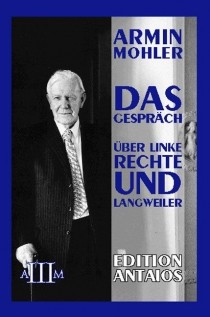 Mohler betrachtete den Waldgang vor allem als erste politische Stellungnahme Jüngers nach dem Zusammenbruch, eine notwendige Stellungnahme auch deshalb, weil die Strahlungen und die darin enthaltene Auseinandersetzung mit den Verbrechen der NS-Zeit viele Leser Jüngers befremdet hatte. In der aufgeheizten Atmosphäre der Schulddebatten fürchteten sie, Jünger habe die Seiten gewechselt und wolle sich den Siegern andienen; Mohler vermerkte, daß in Wilflingen kartonweise Briefe standen, deren Absender Unverständnis und Ablehnung zum Ausdruck brachten.
Mohler betrachtete den Waldgang vor allem als erste politische Stellungnahme Jüngers nach dem Zusammenbruch, eine notwendige Stellungnahme auch deshalb, weil die Strahlungen und die darin enthaltene Auseinandersetzung mit den Verbrechen der NS-Zeit viele Leser Jüngers befremdet hatte. In der aufgeheizten Atmosphäre der Schulddebatten fürchteten sie, Jünger habe die Seiten gewechselt und wolle sich den Siegern andienen; Mohler vermerkte, daß in Wilflingen kartonweise Briefe standen, deren Absender Unverständnis und Ablehnung zum Ausdruck brachten.
Mohler schloß sich dieser Kritik ausdrücklich nicht an und hielt ihr entgegen, daß sie am Kern der Sache vorbeigehe. „Der deutsche ‚Nationalismus‘ oder das ‚nationale Lager‘ oder die ‚Rechte‘ … wirkt heute oft erschreckend verstaubt und antiquiert – und dies gerade in einem Augenblick, wo [ein] bestes nationales Lager nötiger denn je wäre. Die Verstaubtheit scheint mir daher zu kommen, daß man glaubt, man könne einfach wieder da anknüpfen, wo 1933 oder 1945 der Faden abgerissen war.“ Einige arbeiteten an einer neuen „Dolchstoß-Legende“, andere suchten die Schlachten des Krieges noch einmal zu führen und nun zu gewinnen, wieder andere setzten auf einen „positiven Nationalsozialismus“ oder auf eine Wiederbelebung sonstiger Formen, die längst überholt und abgestorben waren. In der Überzeugung, daß eine Restauration nicht möglich und auch nicht wünschenswert sei, trafen sich Mohler und Jünger.
Die Stellung Mohlers als „Zerberus“ des „Chefs“ war nie auf Dauer gedacht. Mohler plante eine akademische Karriere und betrachtete seine Tätigkeit als Zeitungskorrespondent, die er 1953 aufnahm, auch nur als Vorbereitung. Der Kontakt zu Jünger riß trotz der Entfernung nie ab. interessanterweise bemühten sich in dieser Phase beide um eine Neufassung des Begriffs „konservativ“, die ausdrücklich dem Ziel dienen sollte, einen weltanschaulichen Bezugspunkt zu schaffen.
Wie optimistisch Jünger diesbezüglich war, ist einer Bemerkung in einem Brief an Carl Schmitt zu entnehmen, dem er am 8. Januar 1954 schrieb, er beobachte „an der gesamten Elite“ eine „entschiedene Wendung zu konservativen Gedanken“, und im Vorwort zu seinem Rivarol – ein Text, der in der neueren Jünger-Literatur regelmäßig übergangen wird – geht es an zentraler Stelle um die „Schwierigkeit, ein neues, glaubwürdiges Wort für ‚konservativ‘ zu finden“. Jünger hatte ursprünglich vor, gegen ältere Versuche eines Ersatzes zu polemisieren, verzichtete aber darauf, weil er dann auch den Terminus „Konservative Revolution“ hätte einbeziehen müssen, was er aus Rücksicht auf Mohler nicht tat. Daß ihn seine intensive Beschäftigung mit den Maximen des französischen Gegenrevolutionärs „stark in die politische Materie“ führte, war Jünger klar. Wenn dagegen so wenig Vorbehalte zu erkennen sind, dann hing das auch mit dem Erfolg und der wachsenden Anerkennung zusammen, die er in der ersten Hälfte der fünfziger Jahre erfuhr. Zeitgenössische Beobachter glaubten, daß er zum wichtigsten Autor der deutschen Nachkriegszeit werde.
Dieser „Boom“ erreichte einen Höhepunkt mit Jüngers sechzigstem Geburtstag. Es gab zwar auch heftige Kritik am „Militaristen“ und „Antidemokraten“, aber die positiven Stimmen überwogen. Mohler hatte für diesen Anlaß nicht nur eine Festschrift vorbereitet, sondern auch eine Anthologie zusammengestellt, die unter dem Titel Die Schleife erschien. Der notwendige Aufwand an Zeit und Energie war sehr groß gewesen, die prominentesten Beiträger für die Festschrift, Martin Heidegger, Gottfried Benn, Carl Schmitt, bei Laune zu halten, ein schwieriges Unterfangen – Heidegger zog seinen Beitrag aus nichtigen Gründen zweimal zurück. Ganz zufrieden war der Jubilar aber nicht; Jünger mißfiel die geringe Zahl ausländischer Autoren, und bei der Schleife hatte er den Verdacht, daß hier suggeriert werde, es handele sich um ein Buch aus seiner Feder. Die Ursache dieser Verstimmung war eine kleine Manipulation des schweizerischen Arche-Verlags, in dem Die Schleife erschienen war, und der auf den Umschlag eine Titelei gesetzt hatte, die einen solchen Irrtum möglich machte.
Im Hintergrund spielte außerdem der Wettbewerb verschiedener Häuser um das Werk Jüngers mit, dessen Bücher in der Nachkriegszeit zuerst im Furche-, den man ihm zu Ehren in Heliopolis-Verlag umbenannt hatte, dann bei Neske und bei Klostermann erschienen waren. Außerdem versuchte ihn Ernst Klett für sich zu gewinnen. Wenn Klostermann die Festschrift herausbrachte, obwohl er davon kaum finanziellen Gewinn erwarten durfte, hatte das mit der Absicht zu tun, die Bindung Jüngers zu festigen. Deshalb korrespondierte der Verleger mit Mohler nicht nur wegen der Ehrengabe, sondern gleichzeitig auch wegen einer Edition des Gesamtwerks, die Jünger dringend wünschte.
Klostermann und Mohler waren einig, daß eine solche Sammlung nach „Wachstumsringen“ geordnet werden müsse, jedenfalls der Chronologie zu folgen und die ursprünglichen Fassungen zu bringen beziehungsweise Änderungen kenntlich zu machen habe. Bekanntermaßen ist dieser Plan nicht in die Tat umgesetzt worden. Rivarol war das letzte Buch, das Jünger bei Klostermann veröffentlichte, danach wechselte er zu Klett, dem er gleichzeitig die Verantwortung für die „Werke“ übertrug. In einem Brief vom 15. Dezember 1960 schrieb Klostermann voller Bitterkeit an Mohler, daß er die Ausgabe im Grunde für unbenutzbar halte und mit Bedauern feststelle, daß Jünger gegen Kritik immer unduldsamer werde. Zwei Wochen später veröffentlichte Mohler einen Artikel über die Werkausgabe in der Züricher Tat. Jüngers „Übergang in das Lager der ‚Universalisten‘“ wurde nur konstatiert, aber die Eingriffe in die früheren Texte scharf getadelt.
Noch grundsätzlicher faßte Mohler seine Kritik für einen großen Aufsatz zusammen, der im Dezember 1961 in der konservativen Wochenzeitung Christ und Welt erschien und von vielen als Absage an Jünger gelesen wurde. Mohler verurteilte hier nicht nur die Änderung der Texte, er mutmaßte auch, sie folgten dem Prinzip der Anbiederung, man habe „ad usum democratorum frisiert“, es gebe außerdem ein immer deutlicher werdendes „Gefälle“ im Hinblick auf die Qualität der Diagnostik, was bei den letzten Veröffentlichungen Jüngers wie An der Zeitmauer (1959) und Der Weltstaat (1960) zu einer Beliebigkeit geführt habe, die wieder zusammenpasse mit anderen Konzessionen Jüngers, um „sich mit der bis dahin gemiedenen Öffentlichkeit auszugleichen“. Mohler deutete diese Tendenz nicht einfach als Schwäche oder Verrat, sondern als negativen Aspekt jener„osmotischen“ Verfassung, die Jünger früher so sensibel für kommende Veränderungen gemacht habe.
Jünger brach nach Erscheinen des Textes den Kontakt ab. Daß Mohler das beabsichtigte, ist unwahrscheinlich. Noch im Juni 1960 hatte Jünger ihn in Paris besucht, kurz bevor Mohler nach Deutschland zurückkehrte, und im Gästebuch stand der Eintrag: „Wenige sind wert, daß man ihnen widerspricht. Bei Armin Mohler mache ich eine Ausnahme. Ihm widerspreche ich gerne.“ Jetzt warf Jünger Mohler vor, ihn ideologisch mißzuverstehen und äußerte in einem Brief an Curt Hohoff: „Das Politische hat mich nur an den Säumen beschäftigt und mir nicht gerade die beste Klientel zugeführt. Würden Mohlers Bemühungen dazu beitragen, daß ich diese Gesellschaft gründlich loswürde, so wäre immerhin ein Gutes dabei. Aber solche Geister haben ein starkes Beharrungsvermögen; sie verwandeln sich von lästigen Anhängern in unverschämte Gläubiger.“
Sollte Jünger Mohlers Text tatsächlich nicht gelesen haben, wie er hier behauptete, wäre ihm auch der Schlußpassus entgangen, in dem Mohler zwar nicht zurücknahm, was er gesagt hatte, aber festhielt, daß ein einziges der großen Bücher Jüngers genügt hätte, um diesen „für immer in den Himmel der Schriftsteller“ eingehen zu lassen: „An dessen Scheiben wir Kritiker uns die Nase plattdrücken.“ Die Ursache für Mohlers Schärfe war Enttäuschung, eine Enttäuschung trotz bleibender Bewunderung. Mohler warf Jünger mit gutem Grund vor, daß dieser in der zweiten Hälfte der fünfziger Jahre ohne Erklärung den Kurs geändert hatte und sich in einer Weise stilisierte, die ihn nicht mehr als „großen Beunruhiger“ erkennen ließ. Man konnte das wahlweise auf Jüngers „Platonismus“ oder sein Bemühen um Klassizität zurückführen. Tendenzen, mit denen Mohler schon aus Temperamentsgründen wenig anzufangen wußte.
Die Wiederannäherung kam deshalb erst nach langer Zeit und angesichts der Wahrnehmung zustande, daß Jünger eine weitere Kehre vollzog. Das Interview, das der Schriftsteller am 22. Februar 1973 Le Monde gab, wirkte auf Mohler elektrisierend, was vor allem mit jenen Schlüsselzitaten zusammenhing, die von der deutschen Presse regelmäßig unterschlagen wurden: Zwar hatte man mit einer gewissen Irritation Jüngers Äußerung gemeldet, er könne weder Wilhelm II. noch Hitler verzeihen, „ein so wundervolles Instrument wie unsere Armee vergeudet zu haben“, aber niemand wagte sein Diktum hinzuzufügen: „Wie hat der deutsche Soldat zweimal hintereinander unter einer unfähigen politischen Führung gegen die ganze wider ihn verbündete Welt sich halten können? Das ist die einzige Frage, die man meiner Ansicht nach in 100 Jahren stellen wird.“ Und nirgends zu finden war die Prophetie über das Schicksal, das den Deutschen im Geistigen bevorstand: „Alles, was sie heute von sich weisen, wird eines schönen Tages zur Hintertüre wieder hereinkommen.“
Mohler stellte die Rückkehr zum Konkret-Politischen mit der Wirkung von Jüngers Roman Die Zwille zusammen, ein „erzreaktionäres Buch“, so sein Urteil, das in seinen besten Passagen jene Fähigkeit zum „stereoskopischen“ Blick zeigte, die von Mohler bewunderte Fähigkeit, das Besondere und das Typische – nicht das Allgemeine! – gleichzeitig zu erkennen. Obwohl Mohler an seiner Auffassung vom „Bruch“ im Werk festhielt, hat der Aufsatz Ernst Jüngers Wiederkehr wesentlich dazu beigetragen, den alten Streit zu beenden. Die Verbindung gewann allmählich ihre alte Herzlichkeit zurück, und seinen Beitrag in der Festschrift zu Mohlers 75. Geburtstag versah Jünger mit der Zeile „Für Armin Mohler in alter Freundschaft“; beide telefonierten häufig und ausführlich miteinander, und wenige Monate vor dem Tod Jüngers, im Herbst 1997, kam es zu einer letzten persönlichen Begegnung in Wilflingen.
Nachdem Jünger gestorben war, gab ihm Mohler, obwohl selbst betagt und krank, das letzte Geleit. Er empfand das mit besonderer Genugtuung, weil es ihm nicht möglich gewesen war, Carl Schmitt diese letzte Ehre zu erweisen. Jünger und Schmitt hatten nach Mohlers Meinung den größten Einfluß auf sein Denken, mit beiden war er enge Verbindungen eingegangen, die von Schwankungen, Mißverständnissen und intellektuellen Eitelkeiten nicht frei waren, zuletzt aber Bestand hatten. Den Unterschied zwischen ihnen hat Mohler auf die Begriffe „Idol“ und „Lehrer“ gebracht: Schmitt war der „Lehrer“, Jünger das „Idol“. Wenn man „Idol“ zum Nennwert nimmt, dann war Mohlers Verehrung eine besondere – von manchen Heiden sagt man, daß sie ihre Götter züchtigen, wenn sie nicht tun, was erwartet wird.
Article printed from Sezession im Netz: http://www.sezession.de
URL to article: http://www.sezession.de/2066/juenger-und-mohler.html
URLs in this post:
[1] pdf der Druckfassung: http://www.sezession.de/wp-content/uploads/2009/03/weissmann_junger-und-mohler.pdf
[2] Image: http://www.sezession.de/heftseiten/heft-22-februar-2008
00:05 Publié dans Littérature, Nouvelle Droite, Révolution conservatrice | Lien permanent | Commentaires (0) | Tags : littérature, lettres, lettres allemandes, littérature allemande, armin mohler, ernst jünger, nouvelle droite, philosophie, révolution conservatrice, droite, droite allemande |  |
|  del.icio.us |
del.icio.us |  |
|  Digg |
Digg | ![]() Facebook
Facebook
mardi, 08 octobre 2013
Rencontre avec Richard Millet
17:08 Publié dans Actualité, Affiches, Evénement, Littérature | Lien permanent | Commentaires (0) | Tags : richard millet, littérature, littérature française, france, lettres, lettres françaises, événement |  |
|  del.icio.us |
del.icio.us |  |
|  Digg |
Digg | ![]() Facebook
Facebook
L.-F. Céline à Clichy
L.-F. Céline à Clichy
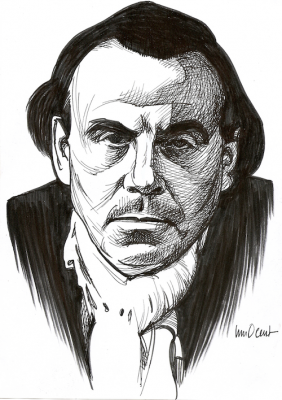 par Marc Laudelout
par Marc Laudelout
Le nom d’Aimée Paymal vous est parfaitement inconnu ? Si ce n’est pas le cas, vous pouvez vous targuer d’être un célinien pointu. Née en 1905, cette employée au dispensaire de Clichy dactylographia, nous dit-on, le manuscrit de Voyage au bout de la nuit. Figure destinée à sombrer dans l’oubli comme tant d’autres personnages secondaires ayant croisé la destinée de Louis Destouches.
Un jeune bibliothécaire vient de lui consacrer un (premier) roman, appliqué et sans relief, où l’on éprouve forcément quelque difficulté à discerner ce qui relève de la biographie ou du roman. Le hic c’est que pour traiter un pareil sujet, il est indispensable de bien connaître aussi la biographie de Céline. Sur la seule page 135 s’étalent deux erreurs. Ce n’est pas dans un café, en compagnie de deux collègues du dispensaire (!), que l’auteur du Voyage attendit le résultat du Goncourt : ce sont sa mère et sa fille qui étaient à ses côtés en cette matinée du 7 décembre 32. Plus ennuyeux : ce n’est pas le tapuscrit (corrigé de sa main) que Céline vendit à Étienne Bignou mais bien le manuscrit lui-même — celui qui atteignit un chiffre record (1,67 million d’euros, sans les frais) lors de la fameuse vente publique à Drouot. Un bon connaisseur de la biographie célinienne n’eût pas commis une telle erreur.
Tant qu’à évoquer Clichy (c’est le titre du roman), il eût été plus intéressant de mettre en scène une figure autrement complexe : le directeur du dispensaire, Grégoire Ichok. Ce n’est sans doute pas demain la veille qu’on disposera d’une biographie de ce médecin lituanien d’origine juive né en 1892 à Marijampolė. On sait que les relations entre Ichok et son subordonné Destouches furent exécrables. Rien d’étonnant à cela, d’autant que c’est la municipalité communiste qui nomma ce laudateur de la médecine soviétique ¹ à la tête du dispensaire flambant neuf. C’est dire si après la parution de Mea culpa, la situation devint intenable. Membre actif de la Ligue contre l’antisémitisme, Ichok était un ami personnel du député socialiste Salomon Grumbach, vice-président de la Commission des affaires étrangères. Lequel soutint sa demande de naturalisation. Naturalisé français en mars 1928, il est nommé directeur du dispensaire de Clichy six mois plus tard. Passionné de médecine sociale, Ichok est l’auteur de nombreuses études sur la question ². Le 10 janvier 1940, il se suicide en croquant une capsule de cyanure. L’homme était profondément dépressif. Dépression apparemment accentuée par le contexte international ³. Une destinée assurément plus captivante que celle de la modeste Aimée Paymal !
Marc LAUDELOUT
• Vincent Jolit, Clichy, Éditions de la Martinière, 2013, 144 pages (14,90 €)
1. Cf. (entre autres) Alexandre Roubakine et Georges [sic] Ichok, « L’accroissement naturel de la population en URSS », La Revue d’Hygiène et de Médecine préventive, n° 10, décembre 1937.
2. Ainsi, en février 1933, une journaliste se rend au dispensaire pour y rencontrer l’auteur de La Protection de l’enfance dans une commune de banlieue (Éd. G. Doin, 1933). Cf. Hélène Bory, « Dans un dispensaire avec L.-F. Céline et le Dr Ichok », Paris-Midi, 22 février 1933.
3. « Il est vraisemblable que les événements qui ont marqué la fin de l’année 1939 n’ont pas été sans amener sa disparition prématurée ainsi que le donnait à entendre M. Barrier, ancien président de l’Académie de Médecine, au cours de l’incinération au colombarium du Père-Lachaise, le 17 janvier 1940 » in Dr R[ené] Hazemann, « Nécrologie. Grégoire Ichok », Journal de la société statistique de Paris, tome 81 (1940), pp. 105-106. L’auteur de cette nécrologie était chef du cabinet technique de la Santé publique et de l’Éducation physique sous le Front populaire. Notons à ce propos que Grégoire Ichok était le conseiller de Jean Zay, ministre de la Santé publique dudit Front populaire.
© Extrait du Bulletin célinien, octobre 2013.
Abonnement : 55 €.
Le Bulletin célinien, c/o M. Laudelout, Bureau Saint-Lambert, B.P. 77, 1200 Bruxelles.
00:05 Publié dans Littérature | Lien permanent | Commentaires (0) | Tags : littérature, lettres, lettres françaises, littérature française, france, clichy, céline, marc laudelout |  |
|  del.icio.us |
del.icio.us |  |
|  Digg |
Digg | ![]() Facebook
Facebook
mardi, 01 octobre 2013
8ème Soirée des amis de LIVR'ARBITRES
00:05 Publié dans Evénement, Littérature | Lien permanent | Commentaires (0) | Tags : paris, événement, littérature, lettres, jacques chardonne |  |
|  del.icio.us |
del.icio.us |  |
|  Digg |
Digg | ![]() Facebook
Facebook
dimanche, 29 septembre 2013
Montherlant und der nutzlose Dienst
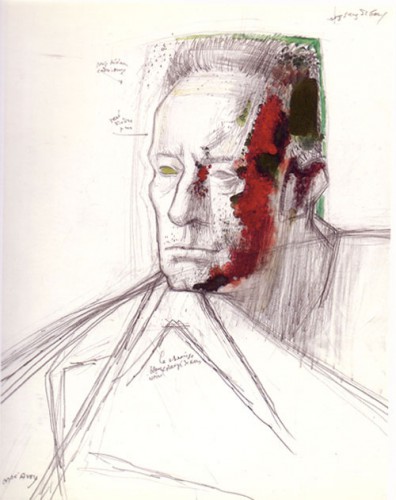
Montherlant und der nutzlose Dienst
von Jens Strieder
Ex: http://www.blauenarzisse.de
Die wichtigsten Auszüge aus Henry de Montherlants 1939 erstveröffentlichter Essaysammlung wurden im Verlag Antaios wieder aufgelegt.
Vielen deutschen Lesern ist der Name Henry Marie Joseph Frédéric Expedite Millon de Montherlant nicht mehr geläufig. Das gilt auch für sein Heimatland Frankreich. Es ist umso verwunderlicher, wenn man bedenkt, dass es sich bei dem 1895 in Paris geborenen Literaten um ein Ausnahmetalent handelte, das in nahezu allen Textformen zu Hause war: Montherlant schrieb Romane, Erzählungen, Novellen, Theaterstücke, Essays und Tagebücher. Sein Gedankenreichtum, seine Beobachtungsgabe und die durch ihre Schönheit bestechende Ausdruckskraft, sprechen für sich und machen ihn zu einem der bedeutendsten Schriftsteller des 20. Jahrhunderts.
Das Nutzlose liegt nicht im Trend
1939 erschien in Leipzig sein Essay-Band mit dem Titel „Nutzloses Dienen”. Damit diese Texte nicht vollends in Vergessenheit geraten, ist im Verlag Antaios ein Band erschienen, der in Form von fünf Essays eine Auswahl der im Original vertretenen Schriften aus den Jahren 1928 – 1934 versammelt.
Die Namensgebung des Bandes verweist sogleich auf eine literarische, aber auch lebenspraktisch orientierte Selbstkonzeption Montherlants: Eine persönliche Haltung, die einem scheinbar sinnlosen oder gar unsinnigen Handeln einen eigentümlichen Wert jenseits jeglichen oberflächlichen Utilitarismus’ beimisst.
Das Nutzlose liegt nicht im Trend, erschließt sich nicht jedem und ist vornehmlich Selbstzweck, dessen idealistischer Wert in der Herauslösung aus dem Alltäglichen, Banalen und Kollektiven liegt. Dabei dient es Montherlant auch zur Überwindung des Nihilismus: „Was mich aufrecht hält auf den Meeren des Nichts, das ist allein das Bild, das ich mir von mir selber mache”.
Der überzeitliche Wert des eigenen Handelns
Allein dieser Satz macht deutlich, dass sich die Dienerschaft auf den Dienenden selbst bezieht. Eine derartige Selbstkonzeption sollte nicht als Ausdruck von Arroganz oder Narzissmus missverstanden werden. Vielmehr geht es Montherlant darum, dem eigenen Wirken einen ideellen und überzeitlichen Wert jenseits des Egos beizugeben.
Ein solches Verständnis vom irdischen Dasein schlägt sich dann auch in allen fünf hier enthaltenen Texten nieder. Entscheidend scheint hierbei vor allem der Umstand zu sein, dass sich Montherlants Ethik eines nutzlosen Dienstes bei aller inneren Höhe, durch eine spezielle Form von Askese auszeichnet, die nicht nur auf Anerkennung von außen verzichtet, sondern auch nicht nach sichtbaren Bezeugungen giert.
So ist für Montherlant beispielsweise die Architektur ein Spiegel dieser Ethik. Wo das Versailler Schloß in erster Linie durch äußeren Glanz und Prunk wirkt, jedoch nach Meinung von Montherlant nicht darüber hinausschaut, sind beispielsweise die spanischen Paläste durch die Verbindung von Schnörkel und schlichtester Einfachheit ein Zeichen von Strenge, welche zum unabdingbaren Wesensmerkmal echter Größe gehört.
Montherlants Selbstkonzeption als Habitus
Für Montherlant sind deshalb die einzig wertvollen Kronen diejenigen, die man sich selbst gibt, denn „[…] die gute Tat geht nicht verloren, wie vergebens sie auch gewesen ist […].” Entsprechend wird auch die „sittliche Idee” der Ehre verteidigt, die auch dann zu wahren ist, wenn sie anderen als unangemessen oder gar lächerlich erscheinen mag.
Das „Heldentum des Alltags” ist nicht weniger bedeutsam als beispielsweise jenes im Krieg und anderen Ausnahmesituationen. Vielmehr ist es Bestandteil der Würde des Menschen. Montherlant setzt nicht einfach andere Prioritäten als jene, die ihm hier nicht folgen können, sondern er wird auch zum Schöpfer seiner selbst, indem er die Rolle konzipiert, die er als endliches Wesen im Fortgang der Zeit spielen möchte – nicht als Schauspieler, sondern als Resultat eines inneren Bedürfnisses.
Somit ist es nur logisch, sich nicht mit dem von niederen Instinkten geleiteten, hässlichen gemein machen zu wollen. Der nutzlose Dienst ist so auch immer ein Akt der bewussten Sezession.
Die Unabhängigkeit des Schriftstellers
Zugleich grenzt Montherlant in einem ebenfalls abgedruckten Vortrag, den der er am 15. November 1933 vor Offizieren der Kriegsakademie hielt, jenes Handeln aus Pflichtgefühl, Notwendigkeit oder edlen Motiven gegen ein Ehrverständnis ab, das der Unbesonnenheit anheim fällt und aus Dummheit und Leichtsinn Risiken eingeht und andere Leben gefährdet.
In Der Schriftsteller und das öffentliche Wirken fordert Montherlant die Freiheit der Unbhängigkeit des Schriftstellers von gesellschaftlich relevanten Themen ein. Er wendet sich gegen das Schubladendenken und die Erwartungshaltung des Kulturbetriebs, die letztlich den wesentlichen Teil des dichterischen Ausdrucks unterdrücken. Vor dem Hintergrund der heute üblichen, feuilletonistischen Simplifizierungen und Rollenzuschreibungen kann man mit Gewissheit sagen, dass dieses Anliegen berechtigt war.
Existentielle Bedrohung von innen oder außen
In einer Lage existentieller Bedrohung von innen oder außen dagegen sieht Montherlant den Schriftsteller dennoch in der Pflicht, seinen Beitrag zu leisten. Das verdeutlicht, dass die konstatierte Eigenart keine Ausrede für Verantwortungslosigkeit oder Feigheit sein kann. Ein geistig-moralischer Führungsanspruch im Sinne einer „engagierten Literatur” lässt sich hieraus jedoch keineswegs ableiten und wird vom Autor auch verworfen.
Für alle, die sich für diesen großen Geist interessieren, stellt der Band trotz seiner Knappheit den idealen Einstieg für eine tiefergehende Beschäftigung mit dessen Werk und Wirkung dar.
Henry de Montherlant: Nutzloses Dienen. 88 Seiten, Verlag Antaios 2011. 8,50 Euro.
00:05 Publié dans Littérature, Livre, Livre | Lien permanent | Commentaires (0) | Tags : livre, lettres, littérature, lettres françaises, littérature française, france, montherlant |  |
|  del.icio.us |
del.icio.us |  |
|  Digg |
Digg | ![]() Facebook
Facebook
lundi, 23 septembre 2013
L'impresa fiumana
19:09 Publié dans Evénement, Littérature | Lien permanent | Commentaires (0) | Tags : italie, d'annunzio, événement, lettres, littérature, lettres italiennes, littérature italienne |  |
|  del.icio.us |
del.icio.us |  |
|  Digg |
Digg | ![]() Facebook
Facebook
vendredi, 20 septembre 2013
Cioran, le flâneur aux idées noires

Archives - 1995
Cioran, le flâneur aux idées noires
Notre plus illustre moraliste s'est choisi sa vie. En adoptant la langue française comme une patrie, en décidant de ne jamais travailler, en veillant quand le monde dort...
Cioran est peut-être notre dernier écrivain légendaire. Grâce à son refus des projecteurs et à son indifférence aux honneurs, il a conservé une part de mystère - d'autant qu'il ne s'est jamais donné la peine de corriger les erreurs qui courent à son propos. Ainsi, les dictionnaires sont unanimes à le prénommer Emil Michel. La réalité est tout autre: comme Emil lui paraissait ridicule pour des oreilles françaises, il a adopté les initiales E.M., autrement dit les deux premières lettres de son prénom, en songeant au romancier anglais E.M. Forster.
Emil Cioran, donc, est né en 1911 à Rasinari, village de Transylvanie, alors sous domination austro-hongroise. Son enfance est enchantée: il galope dans les collines en toute liberté et écoute les bergers dont les histoires proviennent de la nuit des temps. En 1921, ce bonheur prend fin brutalement. Son père, un prêtre orthodoxe, le conduit au lycée de Sibiu, la grande ville voisine où se côtoient Roumains, Hongrois et Allemands. Sept ans plus tard, il part étudier la philosophie à Bucarest. La rupture qui va déterminer toute son existence date de cette époque: le sommeil le fuit. Tenté un moment par le suicide, il préfère suivre le conseil de Nietzsche et transformer ses insomnies en un formidable moyen de connaissance: "On apprend plus dans une nuit blanche que dans une année de sommeil." Etudiant brillant, il écrit son premier livre, Sur les cimes du désespoir, à l'âge de vingt-deux ans. Beaucoup le considèrent comme un des espoirs de la jeune littérature roumaine, aux côtés d'Eugène Ionesco ou du déjà illustre Mircea Eliade.
Après un séjour à Berlin, le voici professeur de philosophie au lycée de Brasov durant l'année scolaire 1936-1937. Expérience mouvementée, si l'on en juge par son surnom dans l'établissement: "le Dément". A l'en croire, le directeur "se saoule la gueule" le jour de son départ! Mais il doit laisser un sacré souvenir à ses élèves, car certains viendront encore lui rendre visite au bout de plusieurs décennies. C'est en tout cas une expérience unique: il n'exercera plus jamais la moindre activité professionnelle.
En 1937, une bourse de l'Institut français de Bucarest lui permet d'aller préparer sa thèse à Paris. Non seulement il n'en écrit pas le premier mot, mais il est même incapable d'imaginer un titre... Les années suivantes sont consacrées à d'immenses lectures, à des randonnées à vélo dans les provinces françaises, à la poursuite de son ?uvre en roumain. Cioran vit comme il l'entend: pauvrement, mais sans contraintes, libre de déambuler des nuits entières dans les rues et d'approfondir ses obsessions. Pourtant, il se rend compte qu'il s'est engagé dans une impasse. Il vaudrait mieux, prétend-il, être un auteur d'opérettes que d'avoir écrit six livres dans une langue que personne ne comprend!
Selon son propre témoignage, il aurait décidé d'adopter le français alors qu'il traduisait Mallarmé en roumain. D'autres épisodes ont sans doute joué un rôle important, en particulier un cours au Collège de France durant lequel un mathématicien étranger effectue une démonstration au tableau noir sans avoir besoin d'ouvrir la bouche. Cette mue linguistique est aussi capitale que l'abandon du russe par Nabokov au profit de l'anglais. Désormais, le français - et qui plus est, le français du XVIIIe siècle - va lui servir de "camisole de force"; la langue de Chamfort va corseter le lyrisme balkanique d'un désespéré qui ne jure que par Thérèse d'Avila et Dostoïevski. De là vient ce ton unique: cette invraisemblable synthèse entre la fièvre et la sagesse, entre le délire mystique et l'ironie des moralistes classiques.
En 1947, Gallimard accepte la première mouture du Précis de décomposition. Cioran retravaille son manuscrit, qui est publié deux ans plus tard. Les critiques sont excellentes, mais le public ne suit pas. Et cette situation va se prolonger pendant près de trente ans. Il faut dire que Cioran est aux antipodes de Jean-Paul Sartre, qui fait alors la pluie et le beau temps, et qu'il éprouve une haine inexpiable envers le communisme. Les nouveaux maîtres roumains ont emprisonné son frère et certains de ses amis, et ses livres sont interdits de l'autre côté du rideau de fer. Cependant, plusieurs éléments lui donnent la force de surmonter les humiliations, les échecs, les volumes pilonnés. Ses amis, d'abord, qui se nomment Ionesco, Eliade, Beckett, Michaux ou Gabriel Marcel. Ses lecteurs, ensuite, très rares mais généralement fanatiques: "Les gens qui s'intéressent à moi ont forcément quelque chose de fêlé..."
Et puis, peu à peu, le couvercle se soulève. En 1965, François Erval publie le Précis de décomposition en édition de poche. Une nouvelle génération découvre Les syllogismes de l'amertume et La tentation d'exister. Des traductions paraissent en Allemagne, aux Etats-Unis, en Espagne; les articles se multiplient; les chiffres de vente décollent enfin du plancher.
Obscur ou fameux, Cioran demeure tel qu'en lui-même. Il continue à fuir les médias et à décliner les prix littéraires. Il brode inlassablement, dans un style d'une élégance glaciale, sur les thèmes qui le hantent depuis l'adolescence: le vertige du temps, la mort, "l'inconvénient d'être né", le mysticisme chrétien, l'essoufflement de la civilisation occidentale, Bouddha, Shakespeare, Bach. Sans doute considère-t-il cette célébrité tardive comme un malentendu; lorsqu'il plaint Borges, c'est à lui-même qu'il songe: "La consécration est la pire des punitions (...) A partir du moment où tout le monde le cite, on ne peut plus le citer, ou, si on le fait, on a l'impression de venir grossir la masse de ses ''admirateurs", de ses ennemis."
Aveux et anathèmes est publié en 1987. C'est son dernier livre. Si les bruits qui courent en avril 1988 sur une éventuelle tentative de suicide sont infondés, en revanche, il est exact qu'il renonce définitivement à écrire. Atteint par une maladie grave, Cioran vit aujourd'hui dans un hôpital parisien. Cinquante-huit ans après avoir quitté la Roumanie pour jeter l'ancre au Quartier latin, il a toujours le statut d'apatride.
Ce que je sais à soixante, je le savais aussi bien à vingt. Quarante ans d'un long, d'un superflu travail de vérification...
(De l'inconvénient d'être né)
Ma vision de l'avenir est si précise que, si j'avais des enfants, je les étranglerais sur l'heure.
(De l'inconvénient d'être né)
Cioran
00:05 Publié dans Littérature, Philosophie | Lien permanent | Commentaires (0) | Tags : cioran, roumanie, france, lettres, philosophie, littérature, lettres roumaines, lettres françaises, littérature française, littérature roumaine |  |
|  del.icio.us |
del.icio.us |  |
|  Digg |
Digg | ![]() Facebook
Facebook
mercredi, 18 septembre 2013
D. H. Lawrence on the Metaphysics of Life
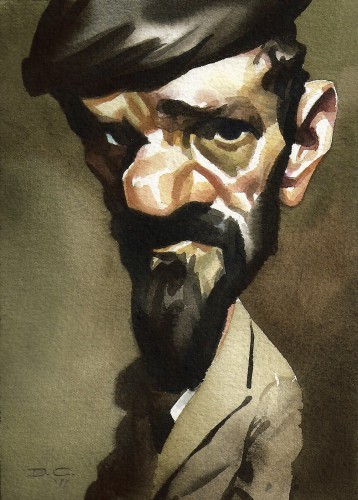
D. H. Lawrence on the Metaphysics of Life
By Derek Hawthorne
Ex: http://www.counter-currents.com
1. Life and the “Creative Mystery”
Lawrence believes that the chief thing modern science simply cannot explain is life itself. And he regards life as an irreducible, and ultimately inexplicable, primary. Further, he believes that there is no such thing as disembodied spirit, or immaterial existence. The only meaningful distinction is that between living and non-living matter.[1]
In addition, Lawrence believes that non-living matter is merely the dead remains of the living. (A position that will strike many as utterly bizarre.) Lawrence makes this claim many times, especially in Fantasia of the Unconscious, but also in his strange, Hermetic essay “The Two Principles.” He writes there, “Inanimate matter is released from the dead body of the world’s creatures. It is the static residue of the living conscious plasm, like feathers of birds.”[2] And: “death is not just shadow or mystery. It is the negative reality of life. It is what we call Matter and Force, among other things. . . . The cosmos is nothing but the aggregate of the dead bodies and dead energies of bygone individuals. The dead bodies decompose as we know into earth, air, and water, heat and radiant energy and free electricity and innumerable other scientific facts.”[3]
Obviously, if the non-living comes from the living and is its residue, then living things must have existed before there were any non-living things. But this seems to present a whole host of difficulties. Where did these living things reside, if not on the non-living rocks we call planets? If they were like the living things we know, then wouldn’t they have had to have breathed oxygen and consumed water? And oxygen and water can hardly be classed as “alive.” Lawrence finds a way around this problem, however, by postulating that in the beginning there were no living things; instead, life was “homogeneous,” and not divided into distinct creatures.
He puts this idea forward in his 1914 philosophical essay “A Study of Thomas Hardy”: “In the origin, life must have been uniform, a great unmoved, utterly homogeneous infinity, a great not-being, at once a positive and negative infinity: the whole universe, the whole infinity, one motionless homogeneity, a something, a nothing.”[4] (I will have reason to return to this quotation later for, as we shall shortly see, Lawrence qualifies this statement in an important way.)
Lawrence’s conception of an undifferentiated, homogeneous “life” is very close to Schopenhauer’s “will.” Recall that in The World as Will and Representation, Schopenhauer argues that the will is an impersonal, self-perpetuating force, and that it lies at the root of all that exists. Lawrence seems to have held some version of this theory for most of his life. In a letter from 1911 he writes: “There still remains a God, but not a personal God: a vast, shimmering impulse which waves onwards towards some end, I don’t know what—taking no regard for the little individual, but taking regard for humanity. When we die, like rain-drops falling back again into the sea, we fall back into the big, shimmering sea of unorganized life which we call God.”[5]
In Women in Love Birkin often expresses Schopenhauerian ideas: “Well, if mankind is destroyed, if our race is destroyed like Sodom, and there is this beautiful evening with the luminous land and trees, I am satisfied. That which informs it all is there, and can never be lost. After all, what is mankind but just one expression of the incomprehensible.”[6] And, later in the novel, Lawrence expresses Birkin’s thoughts after Gerald’s death:
If humanity ran into a cul-de-sac, and expended itself, the timeless creative mystery would bring forth some other being, finer, more wonderful, some new, more lovely race, to carry on the embodiment of creation. The game was never up. The mystery of creation was fathomless, infallible, inexhaustible, for ever. . . . The fountain-head was incorruptible and unsearchable. It had no limits. It could bring forth miracles, create utter new races and new species in its own hour, new forms of consciousness, new forms of body, new units of being. To be man was as nothing compared to the possibilities of the creative mystery.[7]
Lawrence also sometimes refers to “the pan mystery,” and at one point says “God is the flame-life in all the universe; multifarious, multifarious flames, all colours and beauties and pains and somberness. Whichever flame flames in your manhood, that is you, for the time being.”[8] Finally, in one of Lawrence’s last works of fiction, The Man Who Died, he writes,
And always the man who had died saw not the bird alone, but the short, sharp wave of life of which the bird was the crest. . . . And the man who had died watched the unsteady, rocking vibration of the bent bird, and it was not the bird he saw, but one wave-tip of life overlapping for a minute another, in the tide of the swaying ocean of life. And the destiny of life seemed more fierce and compulsive to him even than the destiny of death. The doom of death was a shadow compared to the raging destiny of life, the determined surge of life.[9]
Unlike Schopenhauer, Lawrence never settles on a single term for this “life force,” and so I have chosen to follow his language in Women In Love and to refer to it consistently here as the creative mystery. I take Lawrence’s discussion in “A Study of Thomas Hardy” of primordial life as a “great unmoved, utterly homogeneous infinity,” as yet another description of the creative mystery that lies at the root, and origin of all things.
It is easy to see that the creative mystery forms the basis for Lawrence’s ontology, his theory of Being.[10] If Lawrence merely followed Schopenhauer and identified the creative mystery with Being (as Schopenhauer himself never explicitly does), he would fall squarely within the tradition of what Heidegger calls “ontotheology.” Ontotheology is the error of identifying Being-as-such with the highest or most basic of all beings, or things that have being. The error is analogous to declaring that the characteristic of Tallness is just the same as a thing that happens to be tall (i.e., a thing that “has” tallness). To recognize what Heidegger calls the “ontological difference” is to recognize that Being is not simply another of the beings, no matter how special.
If the creative mystery is something that has Being, then it cannot be Being-as-such. Fortunately, however, Lawrence does not make this error. One of the few places where Lawrence explicitly refers to Being occurs in his essay “Reflections on the Death of a Porcupine”: “The clue to all existence is being. But you can’t have being without existence, any more than you can have the dandelion flower without the leaves and the long tap root.”[11] Essentially, for Lawrence Being is the emergence of individuals out of the creative mystery. The creative mystery itself is not Being, but what one might call the “ground of Being.”
This ontology comes very close to Heidegger’s understanding of the Pre-Socratic conception of Being as phusis. And surely this is no accident. Lawrence’s understanding of the creative mystery and what emerges from it was not formed solely through his encounter with Schopenhauer. His descriptions of it also reflect his encounter with pre-Socratic philosophy, which he also studied carefully. In particular, one can detect a strong hint of Anaximander’s “indefinite” (apeiron), out of which all things emerge and into which they return. I will return to Lawrence’s ontology later when I discuss his theory of the “Holy Ghost,” which “draws” individuals out of the creative mystery and into the flowering of Being. For now, however, we must continue to investigate Lawrence’s understanding of the creative mystery itself.
2. The Holy Ghost
Earlier I quoted Lawrence’s essay “A Study of Thomas Hardy” concerning the origin of life, when it was “uniform, a great unmoved, utterly homogeneous infinity.” However, he qualifies this statement in the next sentence: “And yet it can never have been utterly homogeneous: mathematically, yes; actually, no.”[12] Indeed, Lawrence makes it very clear elsewhere that he believes in the primacy of the individual.
In Fantasia of the Unconscious he writes, “Life is individual, always was individual and always will be. Life consists of living individuals, and always did so consist, in the beginning of everything.”[13] Later in the same text Lawrence remarks that living individuals are “the one, pure clue to our cosmos.” And then: “I only know there is but one origin, and that is the individual soul. The individual soul originated everything, and has itself no origin.”[14]Lawrence is here going a step further. Life is always individual life, but what accounts for individuality as such is “the soul,” or what he calls elsewhere the Holy Ghost. Lawrence has acquired these terms from his Christian upbringing, but he uses them in a highly unusual way, as we will see in the next section.
But here we must pause to raise a troubling, and obvious objection: doesn’t all of this completely contradict the idea Lawrence puts forward that in the beginning only life existed, but that it was an “utterly homogeneous infinity”? Yes and no. Lawrence frankly admits elsewhere that he does not believe there ever was a literal beginning to the universe. So what was the point, then, in telling us what happened “in the origin”? Is Lawrence simply spinning out myths? The answer is yes: Lawrence is consciously and deliberately expresses his ideas in mythic form.
When Lawrence speaks of a homogeneous life “in the origin” this is a mythic way of speaking of the creative mystery that is the source of all things. In a way, one can say that this is the “origin” of all things. However, the creative mystery has always existed in and through individuals. Because these individuals are all expressions of the creative mystery, they are all one; but the one creative mystery exists only within the many. As Lawrence says, “life” is homogeneous “mathematically,” but not “actually.”
Now, some might charge that the foregoing is merely a facile way of trying to resolve what is quite simply a glaring contradiction in Lawrence’s thought. But this is not the case. Lawrence makes it quite clear, in fact, that he means us to interpret him exactly as I have suggested. In his essay “The Two Principles” Lawrence writes: “When we postulate a beginning, we only do so to fix a starting point for our thought. There never was a beginning, and there never will be an end to the universe. The creative mystery, which is life itself, always was and always will be. It unfolds itself in pure living creatures.”[15]
For Lawrence, existence “begins” with an undifferentiated life force, which then progressively and infinitely individuates itself. Of course, we must remember that Lawrence does not believe in a literal beginning. When this is taken into account, his position comes extremely close to that of Schopenhauer: existence is, at root, an infinite will that never exists as such, purely by itself, but is continually “expressed” through individuals. Lawrence’s account of the course of creation then becomes, in effect, an alchemical ontology giving us the ultimate qualities and categories of being itself—the most fundamental of which are Fire and Water.
Lawrence develops his “creation myth” in Fantasia and in “The Two Principles.” It is complex and obscure, and best set aside for the moment. Instead, I will turn now to another issue, and an important one. We have seen that for Lawrence the purpose of existence itself is individuation: the coming-into-being of individuals of various forms, each unique and, to one degree or another, independent and self-sufficient. But how, in metaphysical terms, can we account of the arising of the individual? Lawrence answers this question with his idiosyncratic theory of the “Holy Ghost.”
Writing of the positive “sun-pole” and negative “moon-pole” in Fantasia, Lawrence states that “Existence is truly a matter of propagation between the two infinities. But it needs a third presence. . . . The hailstone needs a grain of dust for its core. So does the universe. Midway between the two cosmic infinities lies the third, which is more than infinite. This is the Holy Ghost Life, individual life.”[16] Lawrence also speaks of the ‘individual soul” as the “one clue to the universe.”[17] We shall see that the soul and the Holy Ghost are, in a way equivalent.
The Holy Ghost, Lawrence tells us, mediates between dualities. In the language of “The Two Principles” the Holy Ghost is that which “draws together” Fire and Water to produce a new individual. In his essay “The Crown,” Lawrence remarks that every new (living) individual is “a glimpse of the Holy Ghost.”[18] And in “Reflections on the Death of a Porcupine” he writes that “All existence is dual, and surging towards a consummation into being. In the seed of the dandelion, as it floats with its little umbrella of hairs, sits the Holy Ghost in tiny compass. The Holy Ghost is that which holds the light and the dark, the day and the night, the wet and the sunny, united in one little clue. There it sits, in the seed of the dandelion.”[19]
Lawrence’s concept of the Holy Ghost is not unlike Aristotelian entelecheia, or full or completed actuality. It is that for that for the sake of which each thing strives: its end, or, in Lawrence’s terms, its “fullness of being.” The entelecheia of a thing is just the fully-accomplished being or acting of the thing, yet it has the status of an ideality which is, in a sense, logically and ontologically prior to the existence of the thing. This comparison may seem a bit of stretch, so let us consider the following statements Lawrence makes in his essays. In “Reflections on the Death of a Porcupine” he writes,
Any creature that attains to its own fullness of being, its own living self, becomes unique, a nonpareil. It has its place in the fourth dimension, the heaven of existence, and there it is perfect, beyond comparison. . . . At the same time, every creature exists in time and space. And in time and space it exists relatively to all other existence, and can never be absolved. Its existence impinges on other existences, and is itself impinged upon. . . . The force which we call vitality, and which is the determining factor in the struggle for existence is, however, derived also from the fourth dimension. That is to say, the ultimate source of all vitality is in that other dimension, or region, where the dandelion blooms, and which men have called heaven, and which now they call the fourth dimension: which is only a way of saying that it is not to be reckoned in terms of space and time.[20]
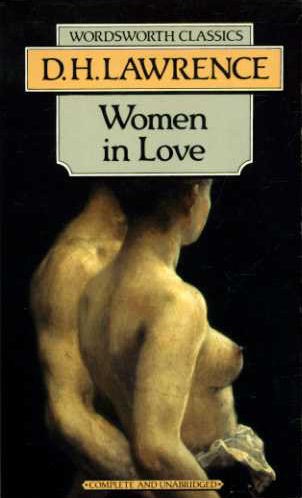 In “Him with His Tail in His Mouth” (1925), Lawrence writes “Creation is a fourth dimension, and in it there are all sorts of things, gods and what-not. That brown hen, scratching with her hind leg in such common fashion, is a sort of goddess in the creative dimension.”[21] And in “Morality and the Novel” (1925), Lawrence tells us “By life, we mean something that gleams, that has the fourth-dimensional quality.”[22] Nothing in Lawrence is ever completely clear, but it seems clear enough in these passages that he thinks that living things exist in two ways. In space and time they exist alongside other creatures, and in large measure are what they are in contrast or opposition to those other creatures. In truth, however, their being is located in a realm beyond space and time.
In “Him with His Tail in His Mouth” (1925), Lawrence writes “Creation is a fourth dimension, and in it there are all sorts of things, gods and what-not. That brown hen, scratching with her hind leg in such common fashion, is a sort of goddess in the creative dimension.”[21] And in “Morality and the Novel” (1925), Lawrence tells us “By life, we mean something that gleams, that has the fourth-dimensional quality.”[22] Nothing in Lawrence is ever completely clear, but it seems clear enough in these passages that he thinks that living things exist in two ways. In space and time they exist alongside other creatures, and in large measure are what they are in contrast or opposition to those other creatures. In truth, however, their being is located in a realm beyond space and time.
So far, this seems Platonic. However, Lawrence tells us that any creature that attains its own “fullness of being” becomes unique, and “has its place in the fourth dimension.” In other words, being, for Lawrence, is an achievement. When creatures actualize themselves through becoming what they are, this actuality (what Lawrence calls “vitality”), achieved in space-time, partakes of the eternal.[23] Employing Aristotelian terminology to explain these ideas is almost irresistible—but I hope at this point that the reader sees that my use of this terminology is not misuse.
The Holy Ghost is the actuality of each individual living thing, existing “prior” to it, drawing it on to its achieved fullness of being. Lawrence’s statement that in the fourth dimension “there are all sorts of things, gods and what-not” is tantalizing. I take it to support my claims about the Holy Ghost (i.e., that it is a non-spatio-temporal ideality). But Lawrence’s remark about the hen shows very clearly that, as I shall argue more fully later on, each individual thing is itself God or a god insofar as it follows its Holy Ghost and achieves its fullness of being.
As we have seen, the universe for Lawrence tends toward individuation—or, to put it another way, the creative mystery realizes itself through the perpetual blossoming of myriad individuals. “While we live, we are balanced between the flux of life and the flux of death. But the real clue is the Holy Ghost, that moves us into the state of blossoming. And each year the blossoming is different: from the delicate blue speedwells of childhood to the equally delicate, frail farewell flowers of old age: through all the poppies and sunflowers: year after year of difference.”[24] The blossom is the “completed” individual, which is a wholly unique creation; an unrepeatable expression of the creative mystery.
Lawrence tells us that “Blossoming means the establishing of a pure, new relationship with all the cosmos.”[25] According to Lawrence’s fanciful cosmogony, “first” the creative mystery abides as the one existing individual. Yet, in this form, it is simply undifferentiated “life plasm”—and, in truth, it is no individual at all, for it has no other against which it marks itself off as a specific something. The creative mystery then comes to actualization as an individual, not through the introduction of a foreign other, but through “othering itself”: through expressing itself as an infinite plurality of individuals, whose identities mutually determine each other – who are drawn forth from the mystery in blossoming, abide for a while, then die. The residue they leave forms the material out of which other living things are grown, and on which they depend for shelter and sustenance.
That Lawrence is aware that he is formulating an ontology is clear from the language he uses. For example, to repeat a quotation from “Reflections on the Death of a Porcupine,” he states that “The clue to all existence is being. But you can’t have being without existence, any more than you can have the dandelion flower without the leaves and the long tap root.”[26] By “being” Lawrence means “blossoming,” which not only bears a strong similarity to the Aristotelian entelecheia, but also, more generally, to the Greek phusis, mentioned earlier. Existence, on the other hand, refers to the concrete forms through which blossoming takes place: individual flowers, animals, human beings, etc.
Lawrence is telling us that the clue to understanding beings is Being, but that there is no Being without beings. So long as one understands the specific sense Lawrence gives to Being—“blossoming”—these are not vacuous statements. Things exist only insofar as they are, in essential terms, the blossoming forth of an underlying, primal reality—and this underlying, primal reality only exists through the concrete forms of blossoming in terms of which it “specifies” itself.
Unsurprisingly, Lawrence goes on to identify his Holy Ghost with God. To Heideggereans, of course, this means that Lawrence’s ontology slides over into the fallacy of ontotheology, discussed earlier. Lawrence remarks that “The flower is the burning of God in the bush: the flame of the Holy Ghost: the actual Presence of accomplished oneness, accomplished out of twoness. The true God is created every time a pure relationship, or a consummation out of twoness into oneness takes place. So that the poppy flower is God come red out of the poppy-plant.”[27]
In truth, however, this is not ontotheology. Lawrence is in actual fact telling us that there is no separate being called God. If however, what we mean by “God” is simply the most fundamental fact or, we might say, the most fundamental act in the universe, then we may identify God with Being or blossoming as such. Lawrence’s imagery in the above quotation is a particularly brilliant example of both his skills as a writer, and as an interpreter of myth. God is the burning bush—but in truth every bush, every flower, every living thing is the fire of God: the fire of “accomplished oneness.” God, for Lawrence, just is individuation, and God comes into being, in the world, each time a new living individual blossoms forth.
So far I have spoken in general terms of the Holy Ghost as, in effect, an ideality all living things are striving, in Aristotelian fashion, to “realize.” But nothing has been said specifically about the Holy Ghost in us, and our experience of it. In his 1924 essay “On Being Religious,” Lawrence tells us that “Only the Holy Ghost within you can scent the new tracks of the Great God across the Cosmos of Creation. The Holy Ghost is the dark hound of heaven whose baying we ought to listen to, as he runs ahead into the unknown, tracking the mysterious everlasting departing of the Lord God, who is for ever departing from us.”[28]
The Holy Ghost is an “ideality,” in the sense that it is something being striven for, but in the human being it is not the intellect or a part of the intellect. In so far as Aristotle seems to identify the actualization of the human animal with the actualization of its intellect, this is definitely a point on which Lawrence parts company with Aristotle. As I have argued in other essays, for Lawrence the “true self” is not to be identified with the conscious, socially-constructed ego, nor is it to be identified with intellect. In fact, for Lawrence, the Holy Ghost in human beings is more or less the same thing that he calls the true unconscious (see my essay “D. H. Lawrence on the Unconscious [2]”). It is the primal self that knows without abstract concepts, and guides without words and rules. It is this primal self that draws us on to the realization of our “fullness of being.”
Our Holy Ghost is our being—and it is an expression of the ultimate being, the creative mystery. Thus, when Lawrence tells us that “Only the Holy Ghost within you can scent the new tracks of the Great God across the Cosmos of Creation” he means that if we are to identify ourselves with our primal self—if we are able to become, in a sense, just that—then through it we know all of life, all of the universe. Lawrence’s position is, again, structurally similar to that of Schopenhauer. In Schopenhauer’s philosophy, we come to know the will in nature through the will that manifests itself in our deepest self. Indeed, that is the only way in which we may become aware directly of the will as the source of all that is.
“We go in search of God,” Lawrence writes, “following the Holy Ghost, and depending on the Holy Ghost. There is no Way. There is no Word. There is no Light.”[29] Lawrence means that there is no way to God, to awareness of ultimate reality and ultimate goodness, except through following our own Holy Ghost and letting it draw us into blossoming, into fullness of being. In other words, because God just is Being or blossoming, there is no way to God except through each of us becoming what we are.
Words cannot get us there, nor can following a path marked out by others, or a light kindled by others. Each of us is alone before God, and each way to God is individual because God is individuation. Recall the passage quoted earlier: “Creation is a fourth dimension, and in it there are all sorts of things, gods and what-not. That brown hen, scratching with her hind leg in such common fashion, is a sort of goddess in the creative dimension.”[30] In a sense, each living thing is God insofar as it achieves its fullness of being.
Notes
[1] “There is no utterly immaterial existence, no spirit. The distinction is between living plasm and inanimate matter.” Phoenix II, 230 (“The Two Principles”).
[2] Phoenix II, 230 (“The Two Principles”).
[3] Fantasia, 150-51.
[4] Phoenix, 432 (“A Study of Thomas Hardy”).
[5] Selected Letters of D. H. Lawrence, ed. Diana Trilling (New York: Farrar, Straus, and Cudahy, 1958), 10. Note that Schopenhauer does not identity will with God. His is an atheistic philosophy. But Lawrence has already gone beyond Schopenhauer and given a religious dimension to the will doctrine. Also, there is no direct evidence that Lawrence read The World as Will and Representation. However, we do know that he read Schopenhauer’s essays, and that they made a major impact on him.
[6] D. H. Lawrence, Women in Love (New York: Viking Press, 1969), 52.
[7] Ibid., 470.
[8] Phoenix II, 426 (“The Novel”).
[9] D. H. Lawrence, The Man Who Died (New York: Ecco Press, 1994), 17-18.
[10] I capitalize the B in Being to distinguish it from a being, or thing which has Being. In other words, beings (things which are) have Being.
[11] Phoenix II, 470 (“Reflections on the Death of a Porcupine”).
[12] Phoenix, 432 (“A Study of Thomas Hardy”).
[13] Fantasia, 150.
[14] Fantasia, 160.
[15] Phoenix II, 227 (“The Two Principles”).
[16] Fantasia, 158.
[17] Fantasia, 150.
[18] Phoenix II, 396 (“The Crown”).
[19] Phoenix II, 470 (“Reflections on the Death of a Porcupine”).
[20] Phoenix II, 469 (“Reflections on the Death of a Porcupine”).
[21] Phoenix II, 431 (“Him With His Tail in His Mouth”).
[22] Phoenix I, 529 (“Morality and the Novel”).
[23] In “Reflections on the Death of a Porcupine,” Lawrence writes “Being is not ideal, as Plato would have it: nor spiritual. It is a transcendent form of existence, as much material as existence is. Only the matter suddenly enters the fourth dimension” (Phoenix II, 470). I take Lawrence to be expressing here (without realizing it) essentially the Aristotelian alternative to Platonism: the being of the thing is not another “thing” existing in another reality. Instead, in some sense a living thing becomes eternal—becomes fourth-dimensional—in its actualization. At the same time, we may speak of this “actualization” as something transcendent precisely because it is not a spatio-temporal “thing” at all, but something ontologically “prior” to things. Insofar as it is the actualization of some spatio-temporal living thing, however, in another way it is immanent.
[24] Phoenix II, 396 (“The Crown”).
[25] Phoenix II, 471 (“Reflections on the Death of a Porcupine”).
[26] Ibid., 470.
[27] Phoenix II, 412 (“The Crown”).
[28] Phoenix I, 728 (“On Being Religious”).
[29] Ibid., 729.
[30] Phoenix II, 431 (“Him With His Tail in His Mouth”).
Article printed from Counter-Currents Publishing: http://www.counter-currents.com
URL to article: http://www.counter-currents.com/2013/09/d-h-lawrence-on-the-metaphysics-of-life/
URLs in this post:
[1] Image: http://www.counter-currents.com/wp-content/uploads/2013/09/morpheus-iris-01.jpg
[2] D. H. Lawrence on the Unconscious: http://www.counter-currents.com/2013/08/d-h-lawrence-on-the-unconscious/
00:05 Publié dans Littérature | Lien permanent | Commentaires (0) | Tags : d. h. lawrence, angleterre, littérature, littérature anglaise, lettres, lettres anglaises |  |
|  del.icio.us |
del.icio.us |  |
|  Digg |
Digg | ![]() Facebook
Facebook
vendredi, 13 septembre 2013
La morte per Jünger: l’inizio di un qualcosa
La morte per Jünger: l’inizio di un qualcosa
 di Luigi Iannone
di Luigi Iannone
Ex: http://www.azionetradizionale.com
La grandezza di Ernst Jünger sta nell’aver conosciuto e intellettualmente dominato il moderno carattere faustiano della tecnica, gli scenari di crisi aperti dai totalitarismi e di aver intuito l’accelerazione del tempo. E, infatti, in Italia, la sua recezione si snoda attraverso una mole enorme di saggi scientifici che ne scandagliano in profondità questi aspetti. La biografia scritta da Heimo Schwilk (Ernst Junger. Una vita lunga un secolo, Effatà editrice, pp.720), amico personale di Jünger, è la prima nel nostro Paese e quindi apre finalmente una prospettiva completamente nuova integrando i temi della produzione saggistica con le vicende private.
Come era la giornata tipo di Jünger?
«Non era uno scrittore disciplinato, faceva quello che in quel momento gli passava per la mente. Sulla scrivania c’erano sempre più progetti in contemporanea, lettere, manoscritti, su due o tre livelli, e sempre tantissimi insetti. Ma si faceva facilmente distogliere dal lavoro. Bastava si presentasse una persona interessante per indurlo ad alzarsi e a dedicarsi ad essa. E poi amava moltissimo la televisione e guardava i telefilm del Tenente Colombo.»
Commentava le lotte partitiche degli anni ottanta?
«Aveva un distacco totale. Quando il cancelliere Helmut Schmidt perse le elezioni e Helmut Kohl divenne cancelliere, il suo commento fu laconico: “Un Helmut va, un Helmut viene”. Kohl ha cercato molto la vicinanza di Jünger, perché riteneva che la cosa gli desse prestigio, per cui andava spesso a trovarlo. Io gli chiesi: “Come mai viene così spesso?” Lui mi rispose: “Adesso basta, la mia capacità di averlo vicino è arrivata al limite”.»
In privato che giudizio dava di Kohl, Mitterand e Gonzalez?
«Kohl non era un intenditore di letteratura né un conoscitore dell’opera jüngeriana. Discorreva soprattutto della sua storia personale e Jünger ascoltava senza essere coinvolto. Quando intervenne al novantesimo compleanno di Jünger, quest’ultimo aveva appena pubblicato Un incontro pericoloso; nella dedica ironicamente gli scrisse: “Dopo un incontro non pericoloso”. Con Mitterand il dialogo era facilitato dal fatto che il Presidente francese aveva una profonda conoscenza della sua opera e nel suo staff personale c’era anche un traduttore dei libri di Jünger. González era invece un intenditore di botanica e quindi si trovavano in sintonia su questo tema.»
Il crollo del Muro lo colpì enormemente.
«“Sono molto felice che la Germania è stata riunificata”, fu il suo primo commento. Poi fece una pausa e aggiunse: “Ma ne manca ancora un terzo”, riferendosi ai territori ancora oggi parte di Polonia e Russia.»
Ha mai parlato del fatto di non aver ricevuto il Premio Nobel?
«Con me non ha mai parlato del Nobel, ma io so che l’ambasciatore Dufner, profondo conoscitore di Jünger, si era rivolto al governo tedesco affinché lo proponesse al comitato del Nobel; la risposta fu che rischiava di non essere accettato e questo sarebbe stato negativo per la sua reputazione. Fu una scusa. Comunque è nella Bibliothèque de la Pléiade dell’editore Gallimard. E lì ci sono soltanto tre tedeschi: Kafka, Brecht e Jünger.»
Come affrontò la morte?
«Ne parlava dicendo che la morte era per lui una grande curiosità. La stava aspettando perché la considerava l’inizio di un qualcosa. Aveva fatto una collezione delle ultime parole di molte persone che stavano per morire, perché voleva capire cosa si provasse di fronte alla morte. Ma la sua morte non è stata spettacolare; è morto in ospedale, anche se avevano già comprato un letto speciale per poterlo accudire a casa. Ho chiesto alla moglie se avesse detto un’ultima frase e mi ha risposto che il giorno prima aveva parlato tantissimo, ma al momento di lasciare questa vita è rimasto muto, impenetrabile. L’ultimo anno godeva di buona salute, ma la sua scrivania era praticamente vuota, non faceva quasi più niente: “Dopo cent’anni”, disse, “è stato detto abbastanza”. »
Può chiarirci le idee sulla questione della conversione?
«Jünger aveva sempre avuto una predisposizione favorevole verso il cattolicesimo, specie perché la madre, bavarese, era cattolica mentre il padre era protestante. Insomma, era come vivere un ecumenismo familiare che gli aveva dato una grande apertura su questi temi. Negli anni Venti gli piaceva molto il cattolicesimo perché era una religione combattiva, difensiva di norme certe, mentre da parte dei protestanti vedeva un abbandono di queste posizioni che avrebbe poi portato a quelli che definiva due grandi tradimenti: quello dei Deutsche Christen, schierati con il nazismo e quello della Kirche im Sozialismus integrata nel sistema comunista. Ammirava tantissimo i Gesuiti e il loro stile di vita e negli ultimi anni, viveva non lontano da casa sua un prete polacco che aveva combattuto il comunismo ed era stato vicino a Karol Wojtyła. Questo fatto lo attirava non poco. Si è convertito a 101 anni dicendo: “Adesso è venuto il momento di tornare nel luogo a me familiare, il cattolicesimo che ho conosciuto da mia madre”.»
Fonte: Il Borghese- Agosto, Settembre 2013
00:05 Publié dans Littérature, Révolution conservatrice | Lien permanent | Commentaires (0) | Tags : ernst jünger, littérature, littérature allemande, révolution conservatrice, weimar, allemagne, lettres, lettres allemandes |  |
|  del.icio.us |
del.icio.us |  |
|  Digg |
Digg | ![]() Facebook
Facebook
jeudi, 12 septembre 2013
Ernst Jünger: The Resolute Life of an Anarch
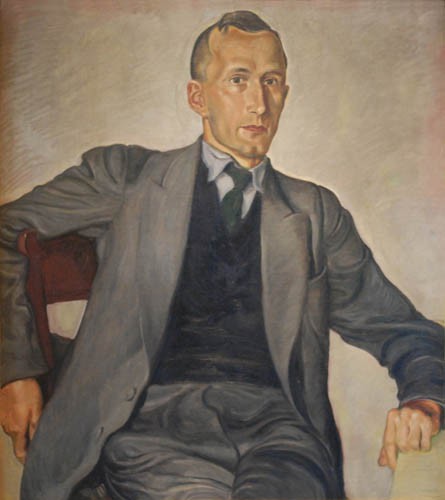
Ernst Jünger: The Resolute Life of an Anarch 8
by Keith Preston
Ex: http://www.attackthesystem.com
Perhaps the most interesting, poignant and, possibly, threatening type of writer and thinker is the one who not only defies conventional categorizations of thought but also offers a deeply penetrating critique of those illusions many hold to be the most sacred. Ernst Junger (1895-1998), who first came to literary prominence during Germany’s Weimar era as a diarist of the experiences of a front line stormtrooper during the Great War, is one such writer. Both the controversial nature of his writing and its staying power are demonstrated by the fact that he remains one of the most important yet widely disliked literary and cultural figures of twentieth century Germany. As recently as 1993, when Junger would have been ninety-eight years of age, he was the subject of an intensely hostile exchange in the “New York Review of Books” between an admirer and a detractor of his work.(1) On the occasion of his one hundreth birthday in 1995, Junger was the subject of a scathing, derisive musical performed in East Berlin. Yet Junger was also the recipient of Germany’s most prestigious literary awards, the Goethe Prize and the Schiller Memorial Prize. Junger, who converted to Catholicism at the age of 101, received a commendation from Pope John Paul II and was an honored guest of French President Francois Mitterand and German Chancellor Helmut Kohl at the Franco-German reconciliation ceremony at Verdun in 1984. Though he was an exceptional achiever during virtually every stage of his extraordinarily long life, it was his work during the Weimar period that not only secured for a Junger a presence in German cultural and political history, but also became the standard by which much of his later work was evaluated and by which his reputation was, and still is, debated. (2)
Ernst Junger was born on March 29, 1895 in Heidelberg, but was raised in Hanover. His father, also named Ernst, was an academically trained chemist who became wealthy as the owner of a pharmaceutical manufacturing business, finding himself successful enough to essentially retire while he was still in his forties. Though raised as an evangelical Protestant, Junger’s father did not believe in any formal religion, nor did his mother, Karoline, an educated middle class German woman whose interests included Germany’s rich literary tradition and the cause of women’s emancipation. His parents’ politics seem to have been liberal, though not radical, in the manner not uncommon to the rising bourgeoise of Germany’s upper middle class during the pre-war period. It was in this affluent, secure bourgeoise environment that Ernst Junger grew up. Indeed, many of Junger’s later activities and professed beliefs are easily understood as a revolt against the comfort and safety of his upbringing. As a child, he was an avid reader of the tales of adventurers and soldiers, but a poor academic student who did not adjust well to the regimented Prussian educational system. Junger’s instructors consistently complained of his inattentiveness. As an adolescent, he became involved with the Wandervogel, roughly the German equivalent of the Boy Scouts.(3)
It was while attending a boarding school near his parents’ home in 1913, at the age of seventeen, that Junger first demonstrated his first propensity for what might be called an “adventurist” way of life. With only six months left before graduation, Junger left school, leaving no word to his family as to his destination. Using money given to him for school-related fees and expenses to buy a firearm and a railroad ticket to Verdun, Junger subsequently enlisted in the French Foreign Legion, an elite military unit of the French armed forces that accepted enlistees of any nationality and had a reputation for attracting fugitives, criminals and career mercenaries. Junger had no intention of staying with the Legion. He only wanted to be posted to Africa, as he eventually was. Junger then deserted, only to be captured and sentenced to jail. Eventually his father found a capable lawyer for his wayward son and secured his release. Junger then returned to his studies and underwent a belated high school graduation. However, it was only a very short time later that Junger was back in uniform. (4)
Warrior and War Diarist
Ernst Junger immediately volunteered for military service when he heard the news that Germany was at war in the summer of 1914. After two months of training, Junger was assigned to a reserve unit stationed at Champagne. He was afraid the war would end before he had the opportunity to see any action. This attitude was not uncommon among many recruits or conscripts who fought in the war for their respective states. The question immediately arises at to why so many young people would wish to look into the face of death with such enthusiasm. Perhaps they really did not understand the horrors that awaited them. In Junger’s case, his rebellion against the security and luxury of his bourgeoise upbringing had already been ably demonstrated by his excursion with the French Foreign Legion. Because of his high school education, something that soldiers of more proletarian origins lacked, Junger was selected to train to become an officer. Shortly before beginning his officer’s training, Junger was exposed to combat for the first time. From the start, he carried pocket-sized notebooks with him and recorded his observations on the front lines. His writings while at the front exhibit a distinctive tone of detachment, as though he is simply an observer watching while the enemy fires at others. In the middle part of 1915, Junger suffered his first war wound, a bullet graze to the thigh that required only two weeks of recovery time. Afterwards, he was promoted to the rank of lieutenant.(5)
At age twenty-one, Junger was the leader of a reconnaissance team at the Somme whose purpose was to go out at night and search for British landmines. Early on, he acquired the reputation of a brave soldier who lacked the preoccupation with his own safety common to most of the fighting men. The introduction of steel artifacts into the war, tanks for the British side and steel helmets for the Germans, made a deep impression on Junger. Wounded three times at the Somme, Junger was awarded the Iron Medal First Class. Upon recovery, he returned to the front lines. A combat daredevil, he once held out against a much larger British force with only twenty men. After being transferred to fight the French at Flanders, he lost ten of his fourteen men and was wounded in the left hand by a blast from French shelling. After being harshly criticized by a superior officer for the number of men lost on that particular mission, Junger began to develop a contempt for the military hierarchy whom he regarded as having achieved their status as a result of their class position, frequently lacking combat experience of their own. In late 1917, having already experienced nearly three full years of combat, Junger was wounded for the fifth time during a surprise assault by the British. He was grazed in the head by a bullet, acquiring two holes in his helmet in the process. His performance in this battle won him the Knights Cross of the Hohenzollerns. In March 1918, Junger participated in another fierce battle with the British, losing 87 of his 150 men. (6)
Nothing impressed Junger more than personal bravery and endurance on the part of soldiers. He once “fell to the ground in tears” at the sight of a young recruit who had only days earlier been unable to carry an ammunition case by himself suddenly being able to carry two cases of missles after surviving an attack of British shells. A recurring theme in Junger’s writings on his war experiences is the way in which war brings out the most savage human impulses. Essentially, human beings are given full license to engage in behavior that would be considered criminal during peacetime. He wrote casually about burning occupied towns during the course of retreat or a shift of position. However, Junger also demonstrated a capacity for merciful behavior during his combat efforts. He refrained from shooting a cornered British soldier after the foe displayed a portrait of his family to Junger. He was wounded yet again in August of 1918. Having been shot in the chest and directly through a lung, this was his most serious wound yet. After being hit, he still managed to shoot dead yet another British officer. As Junger was being carried off the battlefield on a stretcher, one of the stretcher carriers was killed by a British bullet. Another German soldier attempted to carry Junger on his back, but the soldier was shot dead himself and Junger fell to the ground. Finally, a medic recovered him and pulled him out of harm’s way. This episode would be the end of his battle experiences during the Great War.(7)
In Storms of Steel
Junger’s keeping of his wartime diaries paid off quite well in the long run. They were to become the basis of his first and most famous book, In Storms of Steel, published in 1920. The title was given to the book by Junger himself, having found the phrase in an old Icelandic saga. It was at the suggestion of his father that Junger first sought to have his wartime memoirs published. Initially, he found no takers, antiwar sentiment being extremely high in Germany at the time, until his father at last arranged to have the work published privately. In Storms of Steel differs considerably from similar works published by war veterans during the same era, such as Erich Maria Remarque’s All Quiet on the Western Front and John Dos Passos’ Three Soldiers. Junger’s book reflects none of the disillusionment with war by those experienced in its horrors of the kind found in these other works. Instead, Junger depicted warfare as an adventure in which the soldier faced the highest possible challenge, a battle to the death with a mortal enemy. Though Junger certainly considered himself to be a patriot and, under the influence of Maurice Barres (8), eventually became a strident German nationalist, his depiction of military combat as an idyllic setting where human wills face the supreme test rose far above ordinary nationalist sentiments. Junger’s warrior ideal was not merely the patriot fighting out of a profound sense of loyalty to his country nor the stereotype of the dutiful soldier whose sense of honor and obedience compels him to follow the orders of his superiors in a headlong march towards death. Nor was the warrior prototype exalted by Junger necessarily an idealist fighting for some alleged greater good such as a political ideal or religious devotion. Instead, war itself is the ideal for Junger. On this question, he was profoundly influenced by Nietzsche, whose dictum “a good war justifies any cause”, provides an apt characterization of Junger’s depiction of the life (and death) of the combat soldier. (9)
This aspect of Junger’s outlook is illustrated quite well by the ending he chose to give to the first edition of In Storms of Steel. Although the second edition (published in 1926) ends with the nationalist rallying cry, “Germany lives and shall never go under!”, a sentiment that was deleted for the third edition published in 1934 at the onset of the Nazi era, the original edition ends simply with Junger in the hospital after being wounded for the final time and receiving word that he has received yet another commendation for his valor as a combat soldier. There is no mention of Germany’s defeat a few months later. Nationalism aside, the book is clearly about Junger, not about Germany, and Junger’s depiction of the war simultaneously displays an extraordinary level detachment for someone who lived in the face of death for four years and a highly personalized account of the war where battle is first and foremost about the assertion of one’s own “will to power” with cliched patriotic pieties being of secondary concern.
Indeed, Junger goes so far as to say there were winners and losers on both sides of the war. The true winners were not those who fought in a particular army or for a particular country, but who rose to the challenge placed before them and essentially achieved what Junger regarded as a higher state of enlightenment. He believed the war had revealed certain fundamental truths about the human condition. First, the illusions of the old bourgeoise order concerning peace, progress and prosperity had been inalterably shattered. This was not an uncommon sentiment during that time, but it is a revelation that Junger seems to revel in while others found it to be overwhelmingly devastating. Indeed, the lifelong champion of Enlightenment liberalism, Bertrand Russell, whose life was almost as long as Junger’s and who observed many of the same events from a much different philosophical perspective, once remarked that no one who had been born before 1914 knew what it was like to be truly happy.(10) A second observation advanced by Junger had to do with the role of technology in transforming the nature of war, not only in a purely mechanical sense, but on a much greater existential level. Before, man had commanded weaponry in the course of combat. Now weaponry of the kind made possible by modern technology and industrial civilization essentially commanded man. The machines did the fighting. Man simply resisted this external domination. Lastly, the supremacy of might and the ruthless nature of human existence had been demonstrated. Nietzsche was right. The tragic, Darwinian nature of the human condition had been revealed as an irrevocable law.
In Storms of Steel was only the first of several works based on his experiences as a combat officer that were produced by Junger during the 1920s. Copse 125 described a battle between two small groups of combatants. In this work, Junger continued to explore the philosophical themes present in his first work. The type of technologically driven warfare that emerged during the Great War is characterized as reducing men to automatons driven by airplanes, tanks and machine guns. Once again, jingoistic nationalism is downplayed as a contributing factor to the essence of combat soldier’s spirit. Another work of Junger’s from the early 1920s, Battle as Inner Experience, explored the psychology of war. Junger suggested that civilization itself was but a mere mask for the “primordial” nature of humanity that once again reveals itself during war. Indeed, war had the effect of elevating humanity to a higher level. The warrior becomes a kind of god-like animal, divine in his superhuman qualities, but animalistic in his bloodlust. The perpetual threat of imminent death is a kind of intoxicant. Life is at its finest when death is closest. Junger described war as a struggle for a cause that overshadows the respective political or cultural ideals of the combatants. This overarching cause is courage. The fighter is honor bound to respect the courage of his mortal enemy. Drawing on the philosophy of Nietzsche, Junger argued that the war had produced a “new race” that had replaced the old pieties, such as those drawn from religion, with a new recognition of the primacy of the “will to power”.(11)
Conservative Revolutionary
Junger’s writings about the war quickly earned him the status of a celebrity during the Weimar period. Battle as Inner Experience contained the prescient suggestion that the young men who had experienced the greatest war the world had yet to see at that point could never be successfully re-integrated into the old bougeoise order from which they came. For these fighters, the war had been a spiritual experience. Having endured so much only to see their side lose on such seemingly humiliating terms, the veterans of the war were aliens to the rationalistic, anti-militarist, liberal republic that emerged in 1918 at the close of the war. Junger was at his parents’ home recovering from war wounds during the time of the attempted coup by the leftist workers’ and soldiers’ councils and subsequent suppression of these by the Freikorps. He experimented with psychoactive drugs such as cocaine and opium during this time, something that he would continue to do much later in life. Upon recovery, he went back into active duty in the much diminished Germany army. Junger’s earliest works, such as In Storms of Steel, were published during this time and he also wrote for military journals on the more technical and specialized aspects of combat and military technology. Interestingly, Junger attributed Germany’s defeat in the war simply to poor leadership, both military and civilian, and rejected the “stab in the back” legend that consoled less keen veterans.
After leaving the army in 1923, Junger continued to write, producing a novella about a soldier during the war titled Sturm, and also began to study the philosophy of Oswald Spengler. His first work as a philosopher of nationalism appeared the Nazi paper Volkischer Beobachter in September, 1923.
Critiquing the failed Marxist revolution of 1918, Junger argued that the leftist coup failed because of its lacking of fresh ideas. It was simply a regurgitation of the egalitarian outllook of the French Revolution. The revolutionary left appealed only to the material wants of the Germany people in Junger’s views. A successful revolution would have to be much more than that. It would have to appeal to their spiritual or “folkish” instincts as well. Over the next few years Junger studied the natural sciences at the University of Leipzig and in 1925, at age thirty, he married nineteen-year-old Gretha von Jeinsen. Around this time, he also became a full-time political writer. Junger was hostile to Weimar democracy and its commercial bourgeiose society. His emerging political ideal was one of an elite warrior caste that stood above petty partisan politics and the middle class obsession with material acquisition. Junger became involved with the the Stahlhelm, a right-wing veterans group, and was a contributer to its paper, Die Standardite. He associated himself with the younger, more militant members of the organization who favored an uncompromised nationalist revolution and eschewed the parliamentary system. Junger’s weekly column in Die Standardite disseminated his nationalist ideology to his less educated readers. Junger’s views at this point were a mixture of Spengler, Social Darwinism, the traditionalist philosophy of the French rightist Maurice Barres, opposition to the internationalism of the left that had seemingly been discredited by the events of 1914, irrationalism and anti-parliamentarianism. He took a favorable view of the working class and praised the Nazis’ efforts to win proletarian sympathies. Junger also argued that a nationalist outlook need not be attached to one particular form of government, even suggesting that a liberal monarchy would be inferior to a nationalist republic.(12)
In an essay for Die Standardite titled “The Machine”, Junger argued that the principal struggle was not between social classes or political parties but between man and technology. He was not anti-technological in a Luddite sense, but regarded the technological apparatus of modernity to have achieved a position of superiority over mankind which needed to be reversed. He was concerned that the mechanized efficiency of modern life produced a corrosive effect on the human spirit. Junger considered the Nazis’ glorification of peasant life to be antiquated. Ever the realist, he believed the world of the rural people to be in a state of irreversible decline. Instead, Junger espoused a “metropolitan nationalism” centered on the urban working class. Nationalism was the antidote to the anti-particularist materialism of the Marxists who, in Junger’s views, simply mirrored the liberals in their efforts to reduce the individual to a component of a mechanized mass society. The humanitarian rhetoric of the left Junger dismissed as the hypocritical cant of power-seekers feigning benevolence. He began to pin his hopes for a nationalist revolution on the younger veterans who comprised much of the urban working class.
In 1926, Junger became editor of Arminius, which also featured the writings of Nazi leaders like Alfred Rosenberg and Joseph Goebbels. In 1927, he contributed his final article to the Nazi paper, calling for a new definition of the “worker”, one not rooted in Marxist ideology but the idea of the worker as a civilian counterpart to the soldier who struggles fervently for the nationalist ideal. Junger and Hitler had exchanged copies of their respective writings and a scheduled meeting between the two was canceled due to a change in Hitler’s itinerary. Junger respected Hitler’s abilities as an orator, but came to feel he lacked the ability to become a true leader. He also found Nazi ideology to be intellectually shallow, many of the Nazi movement’s leaders to be talentless and was displeased by the vulgarity, crassly opportunistic and overly theatrical aspects of Nazi public rallies. Always an elitist, Junger considered the Nazis’ pandering the common people to be debased. As he became more skeptical of the Nazis, Junger began writing for a wider circle of readers beyond that of the militant nationalist right-wing. His works began to appear in the Jewish liberal Leopold Schwarzchild’s Das Tagebuch and the “national-bolshevik” Ernst Niekisch’s Widerstand.
Junger began to assemble around himself an elite corps of bohemian, eccentric intellectuals who would meet regularly on Friday evenings. This group included some of the most interesting personalities of the Weimar period. Among them were the Freikorps veteran Ernst von Salomon, Otto von Strasser, who with his brother Gregor led a leftist anti-Hitler faction of the Nazi movement, the national-bolshevik Niekisch, the Jewish anarchist Erich Muhsam who had figured prominently in the early phase of the failed leftist revolution of 1918, the American writer Thomas Wolfe and the expressionist writer Arnolt Bronnen. Many among this group espoused a type of revolutionary socialism based on nationalism rather than class, disdaining the Nazis’ opportunistic outreach efforts to the middle class. Some, like Niekisch, favored an alliance between Germany and Soviet Russia against the liberal-capitalist powers of the West. Occasionally, Joseph Goebbels would turn up at these meetings hoping to convert the group, particularly Junger himself, whose war writings he had admired, to the Nazi cause. These efforts by the Nazi propaganda master proved unsuccessful. Junger regarded Goebbels as a shallow ideologue who spoke in platitudes even in private conversation.(13)
The final break between Ernst Junger and the NSDAP occurred in September 1929. Junger published an article in Schwarzchild’s Tagebuch attacking and ridiculing the Nazis as sell outs for having reinvented themselves as a parliamentary party. He also dismissed their racism and anti-Semitism as ridiculous, stating that according to the Nazis a nationalist is simply someone who “eats three Jews for breakfast.” He condemned the Nazis for pandering to the liberal middle class and reactionary traditional conservatives “with lengthy tirades against the decline in morals, against abortion, strikes, lockouts, and the reduction of police and military forces.” Goebbels responded by attacking Junger in the Nazi press, accusing him being motivated by personal literary ambition, and insisting this had caused him “to vilify the national socialist movement, probably so as to make himself popular in his new kosher surroundings” and dismissing Junger’s attacks by proclaiming the Nazis did not “debate with renegades who abuse us in the smutty press of Jewish traitors.”(14)
Junger on the Jewish Question
Junger held complicated views on the question of German Jews. He considered anti-Semitism of the type espoused by Hitler to be crude and reactionary. Yet his own version of nationalism required a level of homogeneity that was difficult to reconcile with the subnational status of Germany Jewry. Junger suggested that Jews should assimilate and pledge their loyalty to Germany once and for all. Yet he expressed admiration for Orthodox Judaism and indifference to Zionism. Junger maintained personal friendships with Jews and wrote for a Jewish owned publication. During this time his Jewish publisher Schwarzchild published an article examining Junger’s views on the Jews of Germany. Schwarzchild insisted that Junger was nothing like his Nazi rivals on the far right. Junger’s nationalism was based on an aristocratic warrior ethos, while Hitler’s was more comparable to the criminal underworld. Hitler’s men were “plebian alley scum”. However, Schwarzchild also characterized Junger’s rendition of nationalism as motivated by little more than a fervent rejection of bourgeoise society and lacking in attention to political realities and serious economic questions.(15)
The Worker
Other than In Storms of Steel, Junger’s The Worker: Mastery and Form was his most influential work from the Weimar era. Junger would later distance himself from this work, published in 1932, and it was reprinted in the 1950s only after Junger was prompted to do so by Martin Heidegger.
In The Worker, Junger outlines his vision of a future state ordered as a technocracy based on workers and soldiers led by a warrior elite. Workers are no longer simply components of an industrial machine, whether capitalist or communist, but have become a kind of civilian-soldier operating as an economic warrior. Just as the soldier glories in his accomplishments in battle, so does the worker glory in the achievements expressed through his work. Junger predicted that continued technological advancements would render the worker/capitalist dichotomy obsolete. He also incorporated the political philosophy of his friend Carl Schmitt into his worldview. As Schmitt saw international relations as a Hobbesian battle between rival powers, Junger believed each state would eventually adopt a system not unlike what he described in The Worker. Each state would maintain its own technocratic order with the workers and soldiers of each country playing essentially the same role on behalf of their respective nations. International affairs would be a crucible where the will to power of the different nations would be tested.
Junger’s vision contains a certain amount prescience. The general trend in politics at the time was a movement towards the kind of technocratic state Junger described. These took on many varied forms including German National Socialism, Italian Fascism, Soviet Communism, the growing welfare states of Western Europe and America’s New Deal. Coming on the eve of World War Two, Junger’s prediction of a global Hobbesian struggle between national collectives possessing previously unimagined levels of technological sophistication also seems rather prophetic. Junger once again attacked the bourgeoise as anachronistic. Its values of material luxury and safety he regarded as unfit for the violent world of the future. (16)
The National Socialist Era
By the time Hitler took power in 1933, Junger’s war writings had become commonly used in high schools and universities as examples of wartime literature, and Junger enjoyed success within the context of German popular culture as well. Excerpts of Junger’s works were featured in military journals. The Nazis tried to coopt his semi-celebrity status, but he was uncooperative. Junger was appointed to the Nazified German Academcy of Poetry, but declined the position. When the Nazi Party’s paper published some of his work in 1934, Junger wrote a letter of protest. The Nazi regime, despite its best efforts to capitalize on his reputation, viewed Junger with suspicioun. His past association with the national-bolshevik Ersnt Niekisch, the Jewish anarchist Erich Muhsam and the anti-Hitler Nazi Otto von Strasser, all of whom were either eventually killed or exiled by the Third Reich, led the Nazis to regard Junger as a potential subversive. On several occasions, Junger received visits from the Gestapo in search of some of his former friends. During the early years of the Nazi regime, Junger was in the fortunate position of being able to economically afford travel outside of Germany. He journeyed to Norway, Brazil, Greece and Morocco during this time, and published several works based on his travels.(17)
Junger’s most significant work from the Nazi period is the novel On the Marble Cliffs. The book is an allegorical attack on the Hitler regime. It was written in 1939, the same year that Junger reentered the German army. The book describes a mysterious villian that threatens a community, a sinister warlord called the “Head Ranger”. This character is never featured in the plot of the novel, but maintains a forboding presence that is universal (much like “Big Brother” in George Orwell’s 1984). Another character in the novel, “Braquemart”, is described as having physical characteristics remarkably similar to those of Goebbels. The book sold fourteen thousand copies during its first two weeks in publication. Swiss reviewers immediately recognized the allegorical references to the Nazi state in the novel. The Nazi Party’s organ, Volkische Beobachter, stated that Ernst Jünger was flirting with a bullet to the head. Goebbels urged Hitler to ban the book, but Hitler refused, probably not wanting to show his hand. Indeed, Hitler gave orders that Junger not be harmed.(18)
Junger was stationed in France for most of the Second World War. Once again, he kept diaries of the experience. Once again, he expressed concern that he might not get to see any action before the war was over. While Junger did not have the opportunity to experience the level of danger and daredevil heroics he had during the Great War, he did receive yet another medal, the Iron Cross, for retrieving the body of a dead corporal while under heavy fire. Junger also published some of his war diaries during this time. However, the German government took a dim view of these, viewing them as too sympathetic to the occupied French. Junger’s duties included censorship of the mail coming into France from German civilians. He took a rather liberal approach to this responsibility and simply disposed of incriminating documents rather than turning them over for investigation. In doing so, he probably saved lives. He also encountered members of France’s literary and cultural elite, among them the actor Louis Ferdinand Celine, a raving anti-Semite and pro-Vichyite who suggested Hitler’s harsh measures against the Jews had not been heavy handed enough. As rumors of the Nazi extermination programs began to spread, Junger wrote in his diary that the mechanization of the human spirit of the type he had written about in the past had apparently generated a higher level of human depravity. When he saw three young French-Jewish girls wearing the yellow stars required by the Nazis, he wrote that he felt embarrassed to be in the Nazi army. In July of 1942, Junger observed the mass arrest of French Jews, the beginning of implementation of the “Final Solution”. He described the scene as follows:
“Parents were first separated from their children, so there was wailing to be heard in the streets. At no moment may I forget that I am surrounded by the unfortunate, by those suffering to the very depths, else what sort of person, what sort of officer would I be? The uniform obliges one to grant protection wherever it goes. Of course one has the impression that one must also, like Don Quixote, take on millions.”(19)
An entry into Junger’s diary from October 16, 1943 suggests that an unnamed army officer had told Junger about the use of crematoria and poison gas to murder Jews en masse. Rumors of plots against Hitler circulated among the officers with whom Junger maintained contact. His son, Ernstl, was arrested after an informant claimed he had spoken critically of Hitler. Ernstl Junger was imprisoned for three months, then placed in a penal battalion where he was killed in action in Italy. On July 20, 1944 an unsuccessful assassination attempt was carried out against Hitler. It is still disputed as to whether or not Junger knew of the plot or had a role in its planning. Among those arrested for their role in the attemt on Hitler’s life were members of Junger’s immediate circle of associates and superior officers within the German army. Junger was dishonorably discharged shortly afterward.(20)
Following the close of the Second World War, Junger came under suspicion from the Allied occupational authorities because of his far right-wing nationalist and militarist past. He refused to cooperate with the Allies De-Nazification programs and was barred from publishing for four years. He would go on to live another half century, producing many more literary works, becoming a close friend of Albert Hoffman, the inventor of the hallucinogen LSD, with which he experimented. In a 1977 novel, Eumeswil, he took his tendency towards viewing the world around him with detachment to a newer, more clearly articulated level with his invention of the concept of the “Anarch”. This idea, heavily influenced by the writings of the early nineteenth century German philosopher Max Stirner, championed the solitary individual who remains true to himself within the context of whatever external circumstances happen to be present. Some sample quotations from this work illustrate the philosophy and worldview of the elderly Junger quite well:
“For the anarch, if he remains free of being ruled, whether by sovereign or society, this does not mean he refuses to serve in any way. In general, he serves no worse than anyone else, and sometimes even better, if he likes the game. He only holds back from the pledge, the sacrifice, the ultimate devotion … I serve in the Casbah; if, while doing this, I die for the Condor, it would be an accident, perhaps even an obliging gesture, but nothing more.”
“The egalitarian mania of demagogues is even more dangerous than the brutality of men in gallooned coats. For the anarch, this remains theoretical, because he avoids both sides. Anyone who has been oppressed can get back on his feet if the oppression did not cost him his life. A man who has been equalized is physically and morally ruined. Anyone who is different is not equal; that is one of the reasons why the Jews are so often targeted.”
“The anarch, recognizing no government, but not indulging in paradisal dreams as the anarchist does, is, for that very reason, a neutral observer.”
“Opposition is collaboration.”
“A basic theme for the anarch is how man, left to his own devices, can defy superior force – whether state, society or the elements – by making use of their rules without submitting to them.”
“… malcontents… prowl through the institutions eternally dissatisfied, always disappointed. Connected with this is their love of cellars and rooftops, exile and prisons, and also banishment, on which they actually pride themselves. When the structure finally caves in they are the first to be killed in the collapse. Why do they not know that the world remains inalterable in change? Because they never find their way down to its real depth, their own. That is the sole place of essence, safety. And so they do themselves in.”
“The anarch may not be spared prisons – as one fluke of existence among others. He will then find the fault in himself.”
“We are touching one a … distinction between anarch and anarchist; the relation to authority, to legislative power. The anarchist is their mortal enemy, while the anarch refuses to acknowledge them. He seeks neither to gain hold of them, nor to topple them, nor to alter them – their impact bypasses him. He must resign himself only to the whirlwinds they generate."
“The anarch is no individualist, either. He wishes to present himself neither as a Great Man nor as a Free Spirit. His own measure is enough for him; freedom is not his goal; it is his property. He does not come on as foe or reformer: one can get along nicely with him in shacks or in palaces. Life is too short and too beautiful to sacrifice for ideas, although contamination is not always avoidable. But hats off to the martyrs.”
“We can expect as little from society as from the state. Salvation lies in the individual.” (21)
Notes:
1. Ian Buruma, “The Anarch at Twilight”, New York Review of Books, Volume 40, No. 12, June 24, 1993. Hilary Barr, “An Exchange on Ernst Junger”, New York Review of Books, Volume 40, No. 21, December 16, 1993.
2. Nevin, Thomas. Ernst Junger and Germany: Into the Abyss, 1914-1945. Durham, N.C.: Duke University Press, 1996, pp. 1-7. Loose, Gerhard. Ernst Junger. New York: Twayne Publishers, 1974, preface.
3. Nevin, pp. 9-26. Loose, p. 21
4. Loose, p. 22. Nevin, pp. 27-37.
5. Nevin. p. 49.
6. Ibid., p. 57
7. Ibid., p. 61
8. Maurice Barrès (September 22, 1862 - December 4, 1923) was a French novelist, journalist, an anti-semite, nationalist politician and agitator. Leaning towards the far-left in his youth as a Boulangist deputy, he progressively developed a theory close to Romantic nationalism and shifted to the right during the Dreyfus Affair, leading the Anti-Dreyfusards alongside Charles Maurras. In 1906, he was elected both to the Académie française and as deputy of the Seine department, and until his death he sat with the conservative Entente républicaine démocratique. A strong supporter of the Union sacrée(Holy Union) during World War I, Barrès remained a major influence of generations of French writers, as well as of monarchists, although he was not a monarchist himself. Source: http://en.wikipedia.org/wiki/Maurice_Barr%C3%A8s
9. Nevin, pp. 58, 71, 97.
10. Schilpp, P. A. “The Philosophy of Bertrand Russell”. Reviewed Hermann Weyl, The American Mathematical Monthly, Vol. 53, No. 4 (Apr., 1946), pp. 208-214.
11. Nevin, pp. 122, 125, 134, 136, 140, 173.
12. Ibid., pp. 75-91.
13. Ibid., p. 107
14. Ibid., p. 108.
15. Ibid., pp. 109-111.
16. Ibid., pp. 114-140.
17. Ibid., p. 145.
18. Ibid., p. 162
19. Ibid., p. 189.
20. Ibid., p. 209.
21. Junger, Ernst. Eumeswil. New York: Marion Publishers, 1980, 1993.
Bibliography
Barr, Hilary. “An Exchange on Ernst Junger”, New York Review of Books, Volume 40, No. 21, December 16, 1993.
Braun, Abdalbarr. “Warrior, Waldgaenger, Anarch: An Essay on Ernst Junger’s Concept of the Sovereign Individual”. Archived at http://www.fluxeuropa.com/juenger-anarch.htm
Buruma, Ian. “The Anarch at Twilight”, New York Review of Books, Volume 40, No. 12, June 24, 1993.
Hofmann, Albert. LSD: My Problem Child, Chapter Seven, “Radiance From Ernst Junger”. Archived at http://www.flashback.se/archive/my_problem_child/chapter7.html
Loose, Gerhard. Ernst Junger. New York: Twayne Publishers, 1974.
Hervier, Julien. The Details of Time: Conversations with Ernst Junger. New York: Marsilio Publishers, 1986.
Junger, Ernst. Eumeswil. New York: Marsilio Publishers, 1980, 1993.
Junger, Ernst. In Storms of Steel. New York: Penguin Books, 1920, 1963, 2003.
Junger, Ernst. On the Marble Cliffs. New York: Duenewald Printing Corporation, 1947.
Nevin, Thomas. Ernst Junger and Germnay: Into the Abyss, 1914-1945. Durham, N.C.: Duke University Press, 1996.
Schilpp, P. A. “The Philosophy of Bertrand Russell”. Reviewed Hermann Weyl, The American Mathematical Monthly, Vol. 53, No. 4 (Apr., 1946), pp. 208-214.
Stern, J. P. Ernst Junger. New Haven: Yale University Press, 1953.
Zavrel, Consul B. John. “Ernst Junger is Still Working at 102″. Archived at http://www.meaus.com/Ernst%20Junger%20at%20102.html
00:05 Publié dans Littérature, Philosophie, Révolution conservatrice | Lien permanent | Commentaires (0) | Tags : révolution conservatrice, littérature, littérature allemande, lettres, lettres allemandes, allemagne, weimar, ernst jünger, philosophie |  |
|  del.icio.us |
del.icio.us |  |
|  Digg |
Digg | ![]() Facebook
Facebook
mercredi, 11 septembre 2013
Dominique Venner, lecteur de Céline

Dominique Venner, lecteur de Céline
par Marc LAUDELOUT
Dans son livre-testament ¹, Dominique Venner évoque Céline et plus particulièrement Les Beaux draps, « ce curieux livre qui délivrait un message furibard à l’encontre de la prédication chrétienne, ultime recours du régime de Vichy qu’il méprisait ». Et de citer la fameuse sortie de Céline visant « la religion de “Pierre et Paul” [qui] fit admirablement son œuvre, décatit en mendigots, en sous-hommes dès le berceau, les peuples soumis, les hordes enivrées de littérature christianique, lancées éperdues imbéciles, à la conquête du Saint Suaire, des hosties magiques, délaissant à jamais leurs Dieux, leurs religions exaltantes, leurs Dieux de sang, leurs Dieux de race. (…) Ainsi, la triste vérité, l’aryen n’a jamais su aimer, aduler que le dieu des autres, jamais eu de religion propre, de religion blanche. Ce qu’il adore, son cœur, sa foi, lui furent fournis de toutes pièces par ses pires ennemis. »
Venner observe avec pertinence que, dans un langage différent, Nietzsche n’avait pas dit autre chose. Cet été, Anne Brassié, dans un quotidien fervemment catholique, a adressé une lettre post-mortem à Venner ². N’ayant jamais lu Les Beaux draps, la biographe de Brasillach précise qu’elle ne connaissait pas ce texte et s’insurge contre cette attaque frontale de la religion chrétienne, d’autant que le païen Venner la faisait sienne mutatis mutandis.
Encore faut-il préciser ce qui, pour Céline, constituait le crime des crimes : « La religion catholique fut à travers toute notre histoire, la grande proxénète, la grande métisseuse des races nobles, la grande procureuse aux pourris (avec tous les saints sacrements), l’enragée contaminatrice ».
Céline, défenseur résolu du génie de la race et de son intégrité, reprochait à l’Église de favoriser le métissage par sa doctrine égalitaire. Après avoir vu un de ses textes censuré par la presse doriotiste, il tint à faire connaître la phrase caviardée : « L’Église, notre grande métisseuse, la maquerelle criminelle en chef, l’antiraciste par excellence. » L’antienne n’était pas nouvelle. Quatre ans plus tôt, dans L’École des cadavres, il vouait aux gémonies les « religions molles ». Et précisait déjà : « Vive la Religion qui nous fera nous reconnaître, nous retrouver entre Aryens, nous entendre au lieu de nous massacrer, mutuellement, rituellement, indéfiniment. »
Anne Brassié admet que « la violence de Céline est née de sa terrible clairvoyance, l’Europe s’engageant dans une seconde guerre civile après le premier suicide de la guerre de 14-18 ». Cela étant, elle rétorque : « Sont-ce vraiment les chrétiens qui ont préparé ces guerres ? Qui furent envoyés au front pour mourir, dès 1914, en première ligne ? Les paysans bretons, catholiques, les officiers français catholiques et le premier d’entre eux, Péguy. » Mais pour Céline, la religion chrétienne est une religion juive facilitant les grands massacres en anesthésiant les peuples ainsi aliénés ³. Si Céline est antinationaliste c’est parce qu’il considère que les nations sont manipulées et génératrices de guerre. Pour lui seule la race est capable d’éradiquer la nation, d’où cette vision du « racisme » perçu comme antidote au nationalisme. Cette conviction peut aujourd’hui être ignorée et dissociée de son esthétique. Il n’en demeure pas moins qu’elle fut sienne.
Marc LAUDELOUT
1. Dominique Venner, Un samouraï d’Occident. Le Bréviaire des insoumis, Éd. Pierre-Guillaume de Roux, 2013.
2. Anne Brassié, « Un samouraï d’Occident », Présent, n° 7899, 20 juillet 2013, p. 5a-e.
3. Nietzsche considère que le christianisme représente le judaïsme « à la puissance deux » (La Volonté de puissance, 1887) dans la mesure où l’esprit judaïque s’y est universalisé.
© Extrait du Bulletin célinien, septembre 2013.
Abonnement 1 an : 55 euros.
Le Bulletin célinien, Bureau Saint-Lambert, B.P. 77, 1200 Bruxelles.
00:05 Publié dans Littérature, Nouvelle Droite | Lien permanent | Commentaires (0) | Tags : dominique venner, céline, littérature, lettres, lettres françaises, littérature française, nouvelle droite |  |
|  del.icio.us |
del.icio.us |  |
|  Digg |
Digg | ![]() Facebook
Facebook
Voyage au bout de la nuit
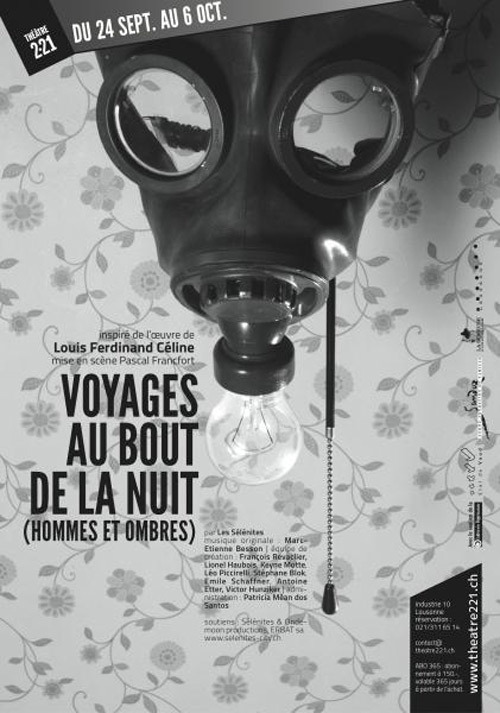
Les Sélénites revisiteront l’oeuvre majeure de Céline, Voyage au bout de la nuit, au Théâtre 2.21 de Lausanne du 24 septembre au 6 octobre 2013 dans une adaptation intitulée « Voyages au bout de la nuit (Hommes et ombres) ». Mise en scène Pascal Francfort, musique Marc Etienne Besson.
« Voyager, c’est bien utile, ça fait travailler l’imagination ». Chef-d’œuvre de la littérature du XXème siècle, Voyage au bout de la nuit continue à fasciner. Les thématiques bouleversantes qui tissent ce roman ne se sont jamais démodées. Guerre, colonisation, progrès, nouveau monde, amour, folie, survie, tout est là, sans concessions. Le regard acerbe que Céline porte sur son époque nous raconte encore et encore, et bien des fois terriblement, notre histoire. En s’inspirant de l’œuvre de Céline, les Sélénites vous convient à remettre le Voyage en route en ouvrant les portes de l’imaginaire. Une invitation à goûter à l’essence des sensations, à l’ivresse des perceptions, en fermant les yeux pour mieux voir. Une expérience sonore et visuelle, entre mémoire, rêve et réalité.
00:05 Publié dans Evénement, Littérature | Lien permanent | Commentaires (1) | Tags : suisse, lausanne, céline, événement, lettres, lettres françaises, littérature, littérature française |  |
|  del.icio.us |
del.icio.us |  |
|  Digg |
Digg | ![]() Facebook
Facebook
mardi, 10 septembre 2013
The Gentleman from Providence
The Gentleman from Providence
By Alex Kurtagić
Ex: http://www.counter-currents.com
S. T. Joshi
I Am Providence: The Life and Times of H. P. Lovecraft [2]
2 vols.
New York: Hippocampus Press, 2012
When it comes to a truly comprehensive biography of Howard Philip Lovecraft, one cannot do better than S. T. Joshi’s I am Providence, a 2 volume, 1,000-page, 500,000-word mammoth of a book that aims to cover everything there is to know about the American master of the weird tale.
As with Mark Finn, whose biography of Howard I reviewed recently, it would seem that L. Sprague de Camp was what spurred Joshi into action: after reading the latter’s Lovecraft: A Biography upon initial publication in 1975, Joshi dedicated his life thereafter to the study of the author from Providence. His choice of university was dictated by its holding the Lovecraft manuscript collection of the John Hay Library. And when he discovered that At the Mountains of Madness, his favourite Lovecraft story, contained no less than 1,500 textual errors, he devoted the ensuing years to tracking down and examining manuscripts and early publications in order to determine the textual history of the work and make possible a corrected edition of Lovecraft’s collected fiction, “revisions,” and other writings. What we have here, you may confidently conclude, is the product of decades of fanaticism and obsessive investigation.
Lovecraft was born in 1890, into a conservative upper middle class family, in Providence, Rhode Island. His father, Winfield, was a travelling salesman, employed by Gorham & Co., Silversmiths, and his mother, Sarah, could trace her ancestry back to the arrival of George Phillips to Massachusetts in 1630. His parents married in their thirties.
The young Lovecraft was talented, intellectually curious, and precocious, able to recite poetry by age two, and to read by age three. Growing up at a time when school was not compulsory, Lovecraft would not be enrolled in one until he was eight years of age and his attendance would be sporadic, possibly due to a nervous complaint and / or psychosomatic condition. But he was well ahead of his coevals in any event, having been exposed, and thereafter enjoyed ready access, to the best of classical and English literature. From Lovecraft’s perspective, this meant 17th and early 18th century prose and poetry, and, indeed, so steeped was he in the canonical literature from this period that he regarded its style of writing not only the finest ever achieved, but, for him, the norm. In the process, he also absorbed some of the archaic tastes and sensibilities permeating this literature, which would subsequently be reflected in his writing, speech, and attitudes, fundamentally aristocratic and at odds with the 20th century. What is more, Lovecraft was never denied anything he may have needed in the pursuit of his intellectual development, be it a chemistry set, a telescope, or printing equipment, so he became knowledgeable enough on these topics, and particularly his passion, astronomy, to contribute articles to a local publication from an early age. He also regularly produced—while still in infancy—his own amateur scientific journals, many of which still survive and were personally examined by Joshi for this biography. Thus, from early on, Lovecraft, a somewhat lonely boy with a charmed boyhood, was committed to a life entirely of the mind.
With such beginnings, it would appear to a casual observer that Lovecraft was well-equipped to become a success in life. But, instead, in adulthood he experienced ever-worsening poverty, squalor, and, though well known for a period within the specialised milieu of amateur publishing, growing professional obscurity. That his legacy has endured owes—besides to the intrinsic value of his works—perhaps in a not insignificant measure to his having been a prodigous correspondent: it has been estimated that throughout the course of his life Lovecraft may have written as many as 100,000 letters (only about 20,000 of which survive), and these were not hastily penned missives, as can be seen in the many excerpts herein presented, but thoughtful communications, sometimes of up to 30 pages in length, which are works of literatue in themselves.
In examining his overall trajectory, we can identify a number of negative vectors early on. The loss of his father, who, following a psychotic episode and permanent committal to a local hospital, suffering from what Joshi presumes to have been syphilis, meant that, from 1893, Lovecraft passed into the care of his mother, aunts, and his maternal grandfather. Whipple van Buren Phillips, a wealthy businessman, proved a positive influence, but died in 1904, and, his estate being poorly managed, this eventually forced the family to downsize. This badly affected the young Lovecraft, to the point that he briefly contemplated suicide. He was eventually dissuaded by his own intellectual curiosity and love of learning.
In 1908, just prior to his high school graduation, Lovecraft suffered a nervous breakdown. Joshi speculates that failure to master higher mathematics may have been a factor, since Lovecraft’s ambition was to become a professional astronomer. (Failure to master meant not getting straight As, but, among the As, a few A-s and Bs.) Whatever its cause, the breakdown prevented Lovecraft from obtaining his diploma, a fact he would later conceal or minimise. Lovecraft then went into seclusion—hikikomori, as it would be called today—in which condition he remained for five years, mostly reading and writing poetry. Joshi expresses alarm at the sheer volume of reading undertaken by Lovecraft during this period, a large portion of it consisting of magazines.
Lovecraft’s re-emergence owes to his irritation with a pulp author, Fred Jackson, whose stories in Argosy magazine he found maudlin, mediocre, and irritating. His letter was published in the magazine, whereby it detonated an opinionated debate. When Lovecraft’s expressed view led to attacks, he responded in lofty and witty verse, thus instigating a months-long war—in archaic rhyme—in the letters’ page. This got him noticed by the president of the United Amateur Press Association (UAPA), Edward F. Daas, who invited Lovecraft to join. This inaugurated Lovecraft’s amateur career, which led to his return to fiction—something he had dabbled in years before—and, by 1919, to his first commerically published work. During his early years in amateurdom, Lovecraft would also produce his own literary journal, The Conservative, a publication that truly lived up to its name and that has only recently been reprinted by Arktos in unabridged form.
Throughout this period Lovecraft continued to live with his mother, who sustained them both off an ever-shrinking inheritance. Trapped between the expectations of her class and dwindling resources, she grew progressively more neurotic and unstable. She already had an unheathily close, love-hate, relationship with her son, and Joshi records that she considered her son’s visage too ugly for public view. By 1919, suffering from hysteria and clinical depression, she would be committed to hospital, where she would remain for the rest of her days. Mother and son stayed close correspondents, but she was a perennial source of worry. Thus, when Sarah died in 1921, initial grief led to a sense of liberation, and an improvement in Lovecraft’s general health—though he, at this time a tall man of nearly 200 lbs, always regarded himself as ailing.
Yet there were further turns to the worst ahead. In 1921, at a convention for amateur journalists in Boston, Lovecraft met Sonia Green, an assimilated 38-year-old Ukrainian Jew from New York, whom he would marry in 1924. Interestingly, Lovecraft only told his aunt after the fact, writing to her from New York, where he had by then already taken residence at Sonia’s apartment.
Joshi notes that at this time Lovecraft’s prospects appeared to be improving: Sonia earned a good living at a hat shop in Fifth Avenue, and Lovecraft’s professional writing career was taking off. Lovecraft, then in a decadent phase, was also enthralled by the city, where he had a number of amateur friends. However, Sonia lost her job almost immediately when the shop went bankrupt. This forced Lovecraft for the first time to find regular employment, but without qualifications, work experience, nor, apparently, marketable skills, he was unable to find a position. The consequent financial difficulties impacted on Sonia’s health, who entered a sanatorium for a period of recovery. Eventually, she would find a job in Cleveland, leaving Lovecraft to live on his own, in a tiny apartment, in Brooklyn Heights (then Red Hook), back then a seedy neighbourhood. Sonia sent him an allowance, which permitted him to cover his rent and minimal expenses, but otherwise Lovecraft lived in poverty, stretching as far as possible a minuscule fare of unheated beans, bread, and cheese.
This was, however, genteel poverty. When, on one occasion, Lovecraft’s apartment was burglarised, he was left with only the clothes on his back (while he slept, the thieves gained access to his closet and stole all his suits). His reaction says much about Lovecraft: first priority for him was to get four new replacements: light and dark, winter and summer—no easy task, given his slender wallet. A gentleman may be poor, but he must still dress like a gentleman! The ensuing hunt for suitable attire taxed Lovecraft’s ingenuity, and ignited his frustration at the shoddy quality of modern suits (Lovecraft’s original suits had been made in happier times). Eventually, he succeeded, with minimal compromise.
Seething with immigrants of all descriptions, crowded, and filthy, Lovecraft came to despise New York, recognising it as an emblem of modern degeneration (remember: he already thought this in 1925!). This negative opinion does not sit well with Joshi: having immigrated from India at a young age and having been a New York resident for 27 years, Joshi puts Lovecraft through the wringer for failing to appreciate the city’s vibrancy. Here and elsewhere, he attacks Lovecraft for his enamourment with Anglo-Saxondom, his fierce resistance to racial egalitarianism, and his rejection of the multicultural society. In Joshi’s estimation, Lovecraft ought to have considered Franz Boas’ research, which was beginning to transform anthropology at this time; Joshi views this as contrary to Lovecraft’s rigorous scientific outlook—in other words, as Lovecraft having been blinded by prejudice. However, this overlooks the fact that there were different strands of opinion in anthropology at this time: this was the Progressive Era, when the American eugenics movement was at its height, enjoying institutional legitimacy, famous proponents (e.g. John Harvey Kellogg), and backing from the likes of the Rockefeller Foundation, the Carnegie Institution, and the the Harriman estate. Boas’ findings were politically motivated and not universally accepted, and he had by no means proven his case. (Worse still, since then there have been accusations of scientific fraud.) It would, therefore, seem that Lovecraft was entirely consequent with his aristocratic and scientific worldview.
Though Joshi deems it necessary to shoehorn his views on race and racism—zzz . . . —he shows admirable restraint, all things considered—though he has still been criticised by readers. He clearly struggles to reconcile his admiration for Lovecraft with an imagined rejection by him, which is coloured by the absurdities of the modern discourse on these matters. As the author of The Angry Right: Why Conservatives Keep Getting it Wrong (2006), where he invects against liberals like William Buckley and Rush Limbaugh, and where he welcomes the Leftward drift of American values, he can understand Lovecraft’s own merely as a reflection of the times in which he lived. Yet, Joshi has expended an immense amount of time and energy studying and writing about Lovecraft’s thought and worldview, as expressed both in correspondence and in fiction, and thus makes a fair attempt at describing them at length in a temperate fashion.
Lovecraft would eventually return to Providence, thus marking the beginning of the most productive phase of his career. By this time his marriage to Sonia was essentially over; a final attempt was made, but Lovecraft’s aunts rejected the idea of Sonia setting up shop in Providence, regarding her—or rather, the idea of a businesswoman—as somewhat declassé. Joshi again takes Lovecraft to task for not having shown more backbone before his aunts, but he is, nevertheless, of the opinion that Lovecraft was unsuited for marriage—being emotionally distant, stiff-upper lipped, and sexually sluggish—and ought never to have taken a wife. The Lovecrafts would in time agree on an amicable divorce (though, in the end, and to Sonia’s shock later on, he never signed the decree).
Despite his peaking productivity, Lovecraft’s economic prospects continued to decline. His stories became longer and more complex, and it became increasingly difficult to place them. Farnsworth Wright, Weird Tales’ capricious editor, repeatedly rejected them, though sometimes he would accept some after a period, after lobbying or intercession by one of Lovecraft’s correspondents. His seminal essay on horror fiction, Supernatural Horror in Literature [3], completed at this time, appeared haphazardly and incompletely in tiny amateur publications, and would never appear in its final, revised, complete form during his lifetime. Therefore, Lovecraft, now living in semi-squalor with his aunt in cramped accommodation, was increasingly forced to survive through charging for “revisions,” which, given the amount of hands-on editing and re-writing involved, was for the most part tantamount to ghostwriting. Lovecraft was too much of a gentleman, too generous for his own good, and charged very modest fees. We must remember, however, that Lovecraft, in this same modest spirit, saw himself as a hack.
All the same, through extreme frugality and resourcefulness, Lovecraft still managed to travel yearly around New England, mainly as an antiquary. This resulted in extensive travelogues, written in 18th-century prose, replete with archaisms and therefore neither publishable nor intended for publication. Joshi mentions that some have criticised Lovecraft for expending excessive energy on correspondence and unpublishable travelogues, rather than writing fiction, but he argues that this was Lovecraft’s life, not his critics’—who are they to tell him, posthumously, what he ought to have done?
Joshi notes that the Great Depression forced Lovecraft to reconsider some of his earlier positions, and that he—encouragingly in his view—embraced FDR’s New Deal. He also notes, although briefly, that Lovecraft may have misunderstood the nature of the program. All the same, he likes to describe Lovecraft as having become a “moderate socialist,” even if he is later careful to point out that his socialism was radically distinct from the Marxist conception—in fact, Lovecraft instinctively sympathised with fascism and Hitler’s movement, and would remain firmly opposed to Communism. Lovecraft’s conception of socialism was entirely elitist. From his perspective, the culture-bearing stratum of a civilisation should not, in an ideal world, be shackled by the need to waste time and energy on trivial tasks, out of the need to earn a living: the production of high culture is often incompatible with commercial goals, so, in his view, it demands freedom from economic activity. And this implied some sort of patronage, in the manner that kings, popes, or wealthy aristocrats or businessmen provided to artists in the past. In other words, a portion of the nation’s wealth should be channelled into things of lasting value—and, therefore, into seeing to it that the very few individuals capable of producing them are in a position to do so. Lovecraft conceived this as socialism because he saw it as the task of the best to better the rest, and high art and intellection played an important rôle in that endeavour.
By 1936, Lovecraft, already in constant pain, was diagnosed with bowel cancer. He would die a few months later, on 15 March 1937.
As with Finn’s biography of Robert E. Howard, Joshi carries on beyond the grave to trace Lovecraft’s legacy, and the development of Lovecraft scholarship over the past 75 years. Like Finn, he has complaints about L. Sprague de Camp’s biography, which he deems substandard and inaccurate; he describes de Camp as business-minded (a euphemism for opportunist). Joshi also criticises August Derleth, one of Lovecraft’s correspondents, who acted early on and energetically to preserve Lovecraft’s legacy through his publishing company, Arkham House: as de Camp did with Howard, Derleth sought to extend Lovecraft’s mythology with posthumous “collaborations,” wherein he distorted the mythology by infusing it with his own preconceptions. To Joshi this was a disreputable attempt to market his own fiction using Lovecraft’s name, though Derleth would later become a well-regarded author in his own right.
While Joshi’s biography is impressive in its comprehensiveness and level of detail, I found his compulsion to provide a plot summary of every single story that Lovecraft ever wrote rather tedious and beyond requirements. One can see that the biography’s comprehensive logic dictates their inclusion, and they can be useful, but I wonder if the tomes’ objectives could not have been met without this overwhelming prolixity.
Joshi recognises his subject’s superior character in that, though Lovecraft would have been able to prosper economically had he compromised on quality, produced more, and stuck to what was popular, he remained steadfast in his refusal to do so. Whatever he did, he did to the best of his ability, without homage to Mammon. Readers, says Joshi, should be grateful for that, as it was this that has guaranteed the lasting value of Lovecraft’s work as well as his enduring legacy.
Article printed from Counter-Currents Publishing: http://www.counter-currents.com
URL to article: http://www.counter-currents.com/2013/09/the-gentleman-from-providence/
URLs in this post:
[1] Image: http://www.counter-currents.com/wp-content/uploads/2013/09/iap.gif
[2] I Am Providence: The Life and Times of H. P. Lovecraft: http://www.amazon.com/gp/product/1614980519/ref=as_li_ss_tl?ie=UTF8&camp=1789&creative=390957&creativeASIN=1614980519&linkCode=as2&tag=countercurren-20
[3] Supernatural Horror in Literature: http://shop.wermodandwermod.com/supernatural-horror-in-literature.html
00:05 Publié dans Littérature, Livre, Livre | Lien permanent | Commentaires (0) | Tags : littérature, littérature américaine, lettres, lettres américaines, livre, lovecraft |  |
|  del.icio.us |
del.icio.us |  |
|  Digg |
Digg | ![]() Facebook
Facebook
vendredi, 06 septembre 2013
Esprits insoumis

"Il faut être indulgent à ceux qui, au lieu de profiter paisiblement des grandes routes toutes tracées et foulées par les générations précédentes et par les aînés, s’en écartent pour chercher une autre voie. Ils ont au moins de l’audace et du courage, vertus essentielles aux conquérants, si modestes soient-ils. Ils ne sont pas tous des triomphateurs mais il ne faut pas sourire devant le sentier, si petit soit-il, que quelques-uns parmi eux frayent dans n’importe quel domaine, parce qu’il y aura toujours des esprits insoumis qui préféreront aux belles routes battues les sentiers pittoresques et incertains, et aussi parce que des sentiers tracés peuvent devenir, grâce à ceux qui suivront et qu’ils auront tentés, de larges avenues."
Valentine de Saint-Point
Ex: http://zentropaville.tumblr.com
00:05 Publié dans Littérature | Lien permanent | Commentaires (0) | Tags : valentine de saint-point, féminisme, futurisme, lettresz, lettres françaises, littérature, littérature française |  |
|  del.icio.us |
del.icio.us |  |
|  Digg |
Digg | ![]() Facebook
Facebook
jeudi, 05 septembre 2013
Intellectuels sous l'occupation
INTELLECTUELS SOUS L’OCCUPATION
Pierre Le Vigan
Ex: http://metamag.fr
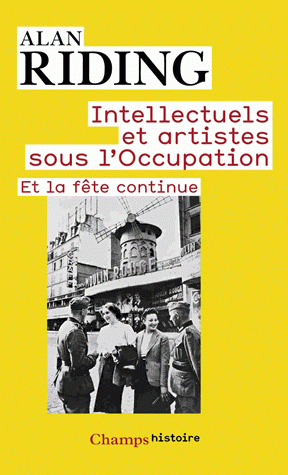 Le premier mérite de l’auteur, journaliste américain installé de longue date en France, c’est qu’il évite d’aborder une période compliquée avec des idées simples. Peu de périodes furent aussi compliquées que celle de l’Occupation. Alan Riding pose les bonnes questions : « Est-ce que le fait d’avoir travaillé sous l’Occupation était systématiquement une forme de collaboration ? » Des questions cruciales pour les intellectuels et artistes.
Le premier mérite de l’auteur, journaliste américain installé de longue date en France, c’est qu’il évite d’aborder une période compliquée avec des idées simples. Peu de périodes furent aussi compliquées que celle de l’Occupation. Alan Riding pose les bonnes questions : « Est-ce que le fait d’avoir travaillé sous l’Occupation était systématiquement une forme de collaboration ? » Des questions cruciales pour les intellectuels et artistes.
00:05 Publié dans Histoire, Littérature, Livre, Livre | Lien permanent | Commentaires (0) | Tags : intellectuels, livre, occupation, occupation allemande, deuxième guerre mondiale, seconde guerre mondiale, france, lettres françaises, littérature française, lettres, littérature, histoire, histoire littéraire |  |
|  del.icio.us |
del.icio.us |  |
|  Digg |
Digg | ![]() Facebook
Facebook
mercredi, 04 septembre 2013
Au royaume de Kipling
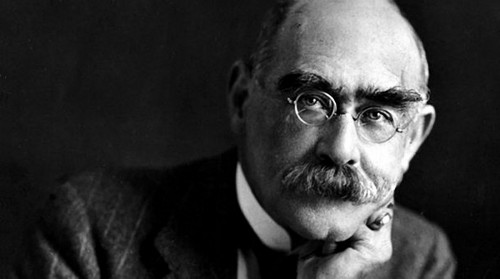
Au royaume de Kipling
1894. Publiée cette année-là, la Légion perdue évoque dans un même mouvement la frontière afghane, le souvenir d'une colonie britannique massacrée en se retirant de Kaboul et la récolte des Cipayes. L'écrivain reporter conserve de l'afghanistan l'image d'un pays fascinant et redouté.
Kipling nous avait prévenus : cette guerre ne pas être gagnée! De même que l’échec – re - latif – de l’invasion soviétique des années 1980, les difficultés rencontrées par les Britanniques en Afghanistan un siècle plus tôt servent de caution historique à ceux qui, aujourd’hui, jugent perdu d’avance le conflit mené par la coalition occidentale contre les talibans. Il est in contestable que Kipling a connu l’Afghanistan de la fin du XIXe siècle, expérience qui a influencé et nourri son oeuvre littéraire ; il est tout aussi vrai de dire que celle-ci n’a constitué qu’un épisode parmi d’autres d’une vie passée à parcourir de long en large l’Empire britannique, de l’Inde au Canada en passant par l’Afrique australe et l’Australie. Une biographie fouillée de Charles Zorgbibe, déjà auteur de travaux sur Herzl, Mirabeau ou Metternich, permet de mieux cerner le regard que l’auteur du Livre de la jungle portait sur le “pays rebelle”.
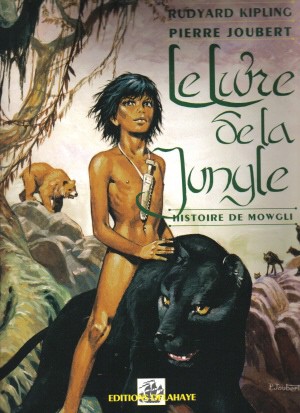 Joseph Rudyard Kipling est né le 30 décembre 1865, à Bombay, où ses parents sont arrivés huit mois plus tôt. Enfant, Kipling parle l’hindoustani aussi bien que l’anglais et, s’échappant du bungalow familial en compagnie de sa nounou (ayah), il découvre les foules indiennes aux turbans multicolores, les illusionnistes montreurs de serpents, les sons et les odeurs du bazar de Borah.
Joseph Rudyard Kipling est né le 30 décembre 1865, à Bombay, où ses parents sont arrivés huit mois plus tôt. Enfant, Kipling parle l’hindoustani aussi bien que l’anglais et, s’échappant du bungalow familial en compagnie de sa nounou (ayah), il découvre les foules indiennes aux turbans multicolores, les illusionnistes montreurs de serpents, les sons et les odeurs du bazar de Borah.
Toute sa vie Kipling gardera la trace de cette dualité de culture, ce « scandale intime » qu’on retrouvera aussi chez un autre écrivain, français cette fois, Albert Camus. À 6 ans, il est envoyé en Angleterre pour y suivre sa scolarité. Si ses premières années en famille d’accueil à Southsea sont douloureuses (il parlera plus tard de la « maison de la désolation »), ses années de collège à Westward Ho ! constituèrent en revanche une époque plus heureuse, à laquelle l’écrivain devra une part certaine de ses ressources littéraires – notamment l’humour et une imagination débridée.
Au sortir du collège, la vie de Kipling prend un tournant décisif : grâce aux relations de son père et du principal de Westward Ho !, il est engagé par la Civil and Military Gazette, le grand quotidien de Lahore, où il arrive le 18 décembre 1882, à l’âge de 17 ans. Après deux années d’apprentissage de son métier, durant lesquelles il découvre le microcosme de la société angloindienne, le jeune Kipling accompagne le nouveau vice-roi des Indes, lord Dufferin, sur la frontière afghane. Quarante ans plus tôt, à l’hiver 1842, seize mille soldats britanniques ont été massacrés dans la retraite de Kaboul et, si les Anglais ont pu ensuite y acheter un semblant de paix, la situation devait à nouveau se détériorer. À Rawalpindi, tout près de la frontière afghane, Kipling observe, prend des notes, recueille les confidences d’un proche d’Abdur Rahman, l’émir de Kaboul, alors en visite officielle. Il s’agit, pour lui, non seulement d’exercer son métier de journaliste mais aussi et surtout de nourrir des réflexions personnelles qu’il exprimera plus tard dans ses nouvelles. En particulier dans l’Homélie de l’émir, dont Charles Zorgbibe dit qu’elle constitue un « portrait extraordinairement percutant de l’émir et de son royaume ».
On y lit notamment que, pour Kipling, les Afghans constituent tout simplement « la race la plus turbulente qui existe ici-bas » ; il les voit comme des guerriers indépendants, éternels insoumis, rétifs à toute autorité interne ou étrangère. «Pour l’Afghan, écrit-il, ni la vie, ni la propriété, ni la loi, ni la royauté ne sont sacrées lorsque ses appétits le poussent à la révolte. L’instinct l’érige en voleur, l’hérédité et l’éducation le transforment en meurtrier, les trois réunis le rendent bestialement immoral. Il a, certes, une certaine conception de l’honneur, tortueuse et très personnelle, et son caractère est passionnant à observer. »
Ces réflexions – dont on comprend qu’elles aient pu contribuer à forger le mythe d’un Kipling “raciste” – traduisent chez le journaliste de 20 ans une vision qui porte davantage sur les hommes qui font un pays que sur des considérations militaires. D’ailleurs, si, à l’occasion de son séjour à Simla, la résidence d’été du vice-roi, Kipling est longuement interrogé par le général Roberts, commandant en chef des armées, c’est parce que celui-ci souhaite recueillir des impressions de journaliste sur l’état d’esprit des officiers ou le moral des troupes. Immergé dans le milieu militaire, Kipling met à profit son « extraordinaire faculté d’assimilation des moeurs et de la couleur locales » selon l’avis de son rédacteur en chef Kay Robinson ; il double son activité journalistique d’une production littéraire qui lui offre d’être plus offensif, plus critique, d’adopter un regard plus perçant sur le monde qui l’entoure. Sa nouvelle réputation de journaliste et le succès croissant de ses nouvelles (notamment les Simples Contes des collines) le conduisent bientôt à quitter Lahore pour Allahabad et la rédaction du Pioneer, puis à rejoindre l’Angleterre via la Chine, le Japon et les États-Unis. Il rencontre Mark Twain, Henry James ou Jerome K. Jerome, l’auteur de Trois hommes dans un bateau, avec qui il partage le goût d’un humour très britannique. Tout ce qu’il voit constitue pour lui une matière à écrire, qu’il s’agisse d’articles ou de nouvelles.
Il n’en demeure pas moins attaché à l’Inde, qui continue d’occuper son imaginaire ou nourrir ses réflexions politiques. Naturellement prisonnier d’une vision très “anglo-indienne”, il accueille avec beaucoup de scepticisme la naissance du Parti du Congrès et estime que, « sans les Britanniques, l’Inde s’effondrerait dans le chaos ». En Afghanistan, un accord entre les Afghans et les Anglais a donné naissance en 1893 à la ligne Mortimer-Durand (actuelle frontière avec le Pakistan, dans les monts Sulayman, au coeur du pays pachtoun). S’il ne s’exprime pas directement sur la politique menée par les Anglais, Kipling va donner à voir ses sentiments à travers plusieurs nouvelles aux genres très différents.
La Légion perdue, publiée en 1894, évoque dans un même mouvement la frontière afghane, le souvenir de la colonne massacrée lors de la retraite de Kaboul, plaie toujours à vif dans l’imaginaire britannique, et la révolte des Cipayes, qui secoua l’Inde huit ans avant la naissance de Kipling. Il brouille ici les cartes de la loyauté et de la rébellion entre les Britanniques, les Hindoustanis et les Afghans, dans le cadre d’une expédition visant à capturer « l’éternel trublion, le dissident islamique immuablement dressé contre la présence étrangère, le mollah Gulla Kutta ».
Dans Chéri des dames, publié un an plus tôt, une nouvelle sur le thème de l’amour fou, le régiment du héros rentre décimé d’une campagne en Afghanistan, preuve que, pour Kipling, comme pour ses lecteurs, la région conserve une résonance tragique.
Entre Lahore et la contrée mystérieuse au nord…
L’Afghanistan servait déjà de décor à la nouvelle l’Homme qui voulut être roi – publiée en décembre 1888, c’est-à- dire toujours dans la période indienne de Kipling. « Deux aventuriers ont conçu le projet fou de se tailler un royaume en Asie centrale, au-delà de la passe de Khyber – au “Kafiristan”, habité par des tribus aryennes. » Sensibles à l’équilibre géo stratégique de la région, ils sont en effet « soucieux d’établir un “glacis” sur la frontière nord de l’Inde, qui s’appuierait sur des populations plus assimilables que les tribus afghanes ». Où l’on voit qu’au-delà de la trame romanesque (doublée ici d’une ré - flexion sur la franc-maçonnerie), l’Afghanistan apparaît déjà aux yeux de Kipling, qui y a passé deux mois, comme une terre indomptable.
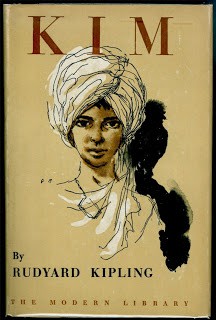 Enfin il y a Kim, cette grande fresque publiée en 1901, roman picaresque, envoûtant, colonialiste et généreux, « l’oeuvre de la vie de Kipling ». Bien que le personnage principal en soit l’Inde, une Inde totale, éternelle, l’Inde de la grande route de liaison, l’un des personnages principaux est afghan. Celui-ci, Mahbub Ali, est marchand de chevaux ; il passe sa vie sur les pistes, entre Lahore et « la contrée mystérieuse au-delà des passes du Nord ». Agent des Britanniques, il surveille depuis Peshawar les principautés des montagnes. Selon Zorgbibe, Mahbub Ali incarne aux yeux de Kipling « à la fois l’Afghanistan hostile, incontrôlable et redouté, et l’espoir d’une alliance avec une fraction des Afghans » – ce qui est probablement le lien le plus pertinent qui puisse être établi avec les enjeux du conflit actuel.
Enfin il y a Kim, cette grande fresque publiée en 1901, roman picaresque, envoûtant, colonialiste et généreux, « l’oeuvre de la vie de Kipling ». Bien que le personnage principal en soit l’Inde, une Inde totale, éternelle, l’Inde de la grande route de liaison, l’un des personnages principaux est afghan. Celui-ci, Mahbub Ali, est marchand de chevaux ; il passe sa vie sur les pistes, entre Lahore et « la contrée mystérieuse au-delà des passes du Nord ». Agent des Britanniques, il surveille depuis Peshawar les principautés des montagnes. Selon Zorgbibe, Mahbub Ali incarne aux yeux de Kipling « à la fois l’Afghanistan hostile, incontrôlable et redouté, et l’espoir d’une alliance avec une fraction des Afghans » – ce qui est probablement le lien le plus pertinent qui puisse être établi avec les enjeux du conflit actuel.
Si Kipling n’est pas l’inventeur de la notion de “Grand Jeu” – cet affrontement entre les empires russe et britannique sur le terrain afghan –, il l’a rendu populaire par l’intermédiaire de ses nombreux récits. On peut y voir la raison pour laquelle l’écrivain est invoqué encore aujourd’hui quand il est question de l’Afghanistan, alors que l’importance réelle de ce pays fut, dans la vie de Kipling, inférieure à celle de l’Inde, de l’Empire britannique dans son ensemble, des États-Unis, de l’Angleterre, voire même de l’Afrique au trale, où Kipling joua un rôle important à l’époque de la guerre des Boers.
Car Rudyard Kipling ne saurait être réduit à ses récits les plus fameux, Kim, le Livre de la jungle ou son poème If («ce texte au souffle de forge volontariste »), encore moins à ses caricatures : écrivain colonialiste, héraut de la « plus-Grande Bretagne », voix officielle de l’Empire britannique.
Ce fut un homme à la pensée nuancée et complexe, célèbre à 20 ans, Prix No bel de littérature, qui influença aussi bien Baden-Powell que George Orwell, ami de Théodore Roosevelt ou de Clemenceau. Un Anglais amoureux de la France. Un homme qui perdit une fille en bas âge puis un fils à la guerre. Un écrivain convaincu que les écoles devaient « forger des hommes afin de créer et de conserver des empires », mais persuadé en même temps que « le fardeau de l’homme blanc » est finalement trop lourd à porter. Un homme d’action enfin, devenu mystique, partagé entre saint Paul et Kismet, le petit dieu malin de la mythologie indienne.
Mickael Fonton
Kipling, de Charles Zorgbibe, Editions de Fallois, 490 pages, 24€
00:05 Publié dans Littérature | Lien permanent | Commentaires (0) | Tags : rudyard kipling, littérature, littérature anglaise, lettres, lettres anglaise, inde, grand jeu, empire britannique |  |
|  del.icio.us |
del.icio.us |  |
|  Digg |
Digg | ![]() Facebook
Facebook
lundi, 02 septembre 2013
D. H. Lawrence on the Meaning of Sex
D. H. Lawrence on the Meaning of Sex
By Derek Hawthorne
Ex: http://www.counter-currents.com
D. H. Lawrence is best known to the general public as a writer of sexy books. In his own time, his treatment of sex made him notorious and caused him to run afoul of the authorities on a number of occasions. I have no desire to rehearse in detail the well-known history of Lawrence’s troubles with censorship, but for those who do not know anything of it a few details will suffice.

Lawrence was deterred neither by censorship nor by the frequent vilification he suffered at the hands of the press. In 1926, on a visit to Italy he wrote the first of three versions of Lady Chatterley’s Lover, his most sexually explicit work and, in fact, one of the most sexually explicit “serious” works of literature ever written. A small edition of the novel was brought out in Florence in 1928, and another in Paris. Various pirated editions were also printed.
Copies of the novel were seized by customs in both the United States and Great Britain, and the reviews that appeared were brutal. One English critic declared that the novel was “the most evil outpouring that has ever besmirched the literature of our country. The sewers of French pornography would be dragged in vain to find a parallel in beastliness . . . Unfortunately for literature as for himself, Mr. Lawrence has a diseased mind.”[1] (The famous court case in Britain occurred thirty years after Lawrence’s death, when Penguin Books brought out an unexpurgated edition of Lady Chatterley.)
In 1926 Lawrence had started to paint. He wrote to his friend Earl Brewster, a Buddhist, “I put a phallus, a lingam you call it, in each one of my pictures somewhere. And I paint no picture that won’t shock people’s castrated social spirituality.”[2] Predictably, when an exhibition of his paintings was held in London in 1929 it was raided by the police, though, as Jeffrey Meyers notes, the officers “politely waited to carry out their orders until the Aga Khan had finished viewing the pictures.”[3]
Why was Lawrence seemingly so preoccupied with sex? The answer is that he saw sex as a means to awaken the true self, and to discover not only our own inner being but the inner being of all things. In Fantasia of the Unconscious he writes, “To the individual, the act of coition is a great psychic experience, a vital experience of tremendous importance.”[4]
Lawrence was unquestionably influenced by Schopenhauer in his views about the metaphysical significance of sex. In his unpublished notebooks—summing up views he expressed more circumspectly in his published writings—Schopenhauer states
If I am asked where the most intimate knowledge of that inner essence of the world, of that thing in itself which I have called the will to live, is to be found, or where that essence enters most clearly into our consciousness, or where it achieves the purest revelation of itself, then I must point to ecstasy in the act of copulation. That is it! That is the true essence and core of all things, the aim and purpose of all existence.[5]
However, Lawrence (unlike Schopenhauer) saw the inner essence of things as having religious significance. He felt that the “life mystery” at the core of all was the only thing that he could honestly call God. Hence, he regarded sex as sacred—indeed as an act of divine worship—since it opens us to the life mystery. In a posthumously published essay Lawrence writes, “In the very darkest continent of the body there is God.”[6] This is the real key to understanding Lawrence’s treatment of sex: it is reverential; he regards sex as sacred, not as profane. The public attacks on Lawrence’s work as “smut” are hugely unjust, for Lawrence had a lifelong hatred of pornography precisely because he saw it as a profanation of sex.
An illustration of Lawrence’s attitude is his reaction to James Joyce’s Ulysses. As Jeffrey Meyers notes, it was, in part, Lawrence’s hostile reaction to Ulysses that spurred him to write Lady Chatterley’s Lover. In a letter Lawrence stated, “The last part of [Ulysses] is the dirtiest, most indecent, obscene thing ever written. . . . This Ulysses muck is more disgusting than Casanova. I must show that it can be done without muck.”[7] This may seem a trifle ironic, given how others had attacked Lawrence’s own work with similar invective. But, in fact, Lawrence’s attitude to Joyce is not hypocritical. He is not attacking the explicitness of Joyce’s treatment of sex, but rather what he regarded as its unforgivable irreverence.
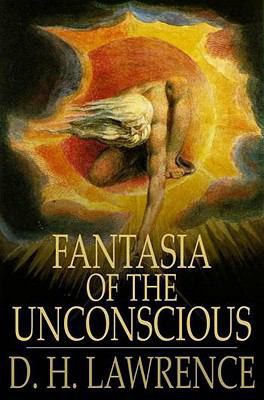 In Fantasia of the Unconscious Lawrence writes, “In sex we have our basic, most elemental being.”[8] Further, he declares that the procreative purpose of sex is “just a side-show.”[9] Lawrence rejects the reductive, scientific understanding of sex; part and parcel of the scientific will to nullify beauty and mystery and to make everything mundane and “practical.”
In Fantasia of the Unconscious Lawrence writes, “In sex we have our basic, most elemental being.”[8] Further, he declares that the procreative purpose of sex is “just a side-show.”[9] Lawrence rejects the reductive, scientific understanding of sex; part and parcel of the scientific will to nullify beauty and mystery and to make everything mundane and “practical.”
Sex can lead to reproduction, but it is no more correct to say that the “purpose” of sex is reproduction than it is to say that the purpose of eating is to fill our stomachs. More often than not, we eat not because we happen to really need nourishment just then, but because we take pleasure in eating, in the taste of food, and in the company of those we eat with. And frequently the food we enjoy ingesting has little actual nutritional value. If the purpose of eating were simply to acquire nourishment, then we ought not mind the idea of simply ingesting a tasteless paste full of vitamins, minerals, protein, and carbohydrates three times daily.
Sex, Lawrence tells us,
is our deepest form of consciousness. It is utterly non-ideal, non-mental. It is pure blood-consciousness. It is the basic consciousness of the blood, the nearest thing in us to pure material consciousness. It is the consciousness of the night, when the soul is almost asleep. The blood-consciousness is the first and last knowledge of the living soul: the depths.[10]
When we enter into what Schopenhauer calls “ecstasy in the act of copulation,” there is a sloughing off of intellect, of self-consciousness. The act is ecstatic precisely to the extent that this is accomplished. The Greek ekstasis could be translated literally as “standing outside oneself.” In ecstatic acts we have the sense of leaving ourselves, and certainly our consciousness of ourselves (our inner monitor, inner censor, inner doubter) behind. Insofar as we cannot accomplish this, the sexual act will be dissatisfying. The woman may experience little pleasure, and the man may even be unable to perform, should he fail to disengage the intellect.
Of course, when we are caught in the ecstasy of sex we are not literally unconscious. What happens, in effect, is that a different sort of consciousness takes over: what Lawrence calls “blood-consciousness.” What Lawrence means by this term is the pre-reflective, pre-conceptual, subterranean depth in consciousness: what he sometimes confusingly calls the “unconscious.”
Sometimes this type of consciousness is derisively labeled the “animal” in us. This is misleading, for we have a tendency not to think of ourselves as animals, and labeling the blood-consciousness “animal” becomes a way to disown it. But it is our own, and, of course, we are animals. In the heat of true, ecstatic sexual passion, one loses a sense of individuality. It is common to hear the participants speak (later on) of losing the sense of bodily boundaries, and feeling as if the two bodies merged into one. Strange, animal-like cries are uttered and motions become automatic rather than deliberately willed.
In sex we surrender our intellect and self-consciousness, and open ourselves to the blood-consciousness, to our primal self—so that we become, for the space of the act, that primal self. And this is the reason why modern people are so sex-obsessed.
To live in modern, industrialized society means to live almost constantly from what Lawrence calls the “upper centres,” from intellect. And it means to live surrounded at all times by the products of intellect, cocooned in a synthetic, human world built over top of the natural world, operating according to human ideas and ideals. Almost always, this life requires us to lead an existence that is false in certain fundamental ways; false and inimical to life and to the natural, primal self. Passionate sex, insofar as modern people can even manage it, is the only respite from this that most people know. As such, Lawrence believes that in sex we are fundamentally truer than at most other times in life. And reflection on what the sex act means may help us to recover this trueness in daily life, outside of sexual activity.
All of the above is an attempt to say “what sex is.” But Lawrence holds that ultimately it is ineffable:
We can never say, satisfactorily. But we know so much: we know that it is a dynamic polarity between human beings, and a circuit of force always flowing. . . . We know that in the act of coition the blood of the individual man, acutely surcharged with intense vital electricity—we know no word, so say “electricity,” by analogy—rises to a culmination, in a tremendous magnetic urge towards the blood of the female. The whole of the living blood in the two individuals forms a field of intense, polarized magnetic attraction. So, the two poles must be brought into contact. In the act of coition, the two seas of blood in the two individuals, rocking and surging towards contact, as near as possible, clash into a oneness.[11]
Lawrence’s remark about his use of the term “electricity” tells us that we should not take this description very literally. When he speaks of an “electricity” in the blood of a sexually aroused man or woman, he uses this term, for lack of a better one, to describe the peculiar sense of acute, tingling “aliveness” that one feels in sexual ecstasy. When he speaks of a “magnetic attraction” between the blood of man and woman, he means the uncanny, overpowering, and unchosen sense of attraction that one experiences for the other. It is a sense of attraction that at times makes men and women feel that they must come together or die.
We attempt to deflate the mystery of this attraction by chalking it up to “chemistry.” Indeed it may somehow be chemical, but to describe the physical conditions necessary for a profound experience to take place does not render it less profound, or less mysterious. It might seem a bit ironic, given Lawrence’s criticisms of science, that his own language has a kind of scientific veneer, with its talk of “electricity,” “magnetism,” and “polarity.” But Lawrence’s “science” is, in fact, a throwback to the vitalistic philosophy of nature of the Romantics.
Lawrence attempts to sum things up as follows: “Sex then is a polarization of the individual blood in man towards the individual blood in woman.”[12] At the root of this idea is a basic conviction of Lawrence’s, which cannot be overemphasized: that men and women are fundamentally and radically different—metaphysically different. (See my essay “D. H. Lawrence on Men and Women [2].”) In the same text he writes, “We are all wrong when we say there is no vital difference between the sexes.”
Lawrence wrote this in 1921 intending it to be provocative, but it is surely much more controversial in today’s world, where it has become a dogma in some circles to insist that sex differences (now called “gender differences”) are “socially constructed,” and that the only natural differences between the sexes are purely and simply anatomical. Lawrence continues: “There is every difference. Every bit, every cell in a boy is male, every cell is female in a woman, and must remain so. Women can never feel or know as men do. And in the reverse, men can never feel and know, dynamically, as women do.”[13]
 Interestingly, I believe that Lawrence derives the idea of “cells” being male or female from Otto Weininger’s Sex and Character, a text he was definitely familiar with. Weininger writes: “every cell of the organism . . . has a sexual character.” And: “In a male every part, even the smallest, is male, however much it may resemble the corresponding part of a female, and in the latter, likewise, even the smallest part is exclusively female.”[14]
Interestingly, I believe that Lawrence derives the idea of “cells” being male or female from Otto Weininger’s Sex and Character, a text he was definitely familiar with. Weininger writes: “every cell of the organism . . . has a sexual character.” And: “In a male every part, even the smallest, is male, however much it may resemble the corresponding part of a female, and in the latter, likewise, even the smallest part is exclusively female.”[14]
Setting Weininger aside, this is Lawence’s way of emphasizing that men and women are different all the way down, and that there are ways in which they can never understand each other, and never see as the other sees. Lawrence is concerned in particular (though this is not obvious) to guard against the claim that there are borderline cases of men and women who are (psychically) androgynous, straddling the divide between male and female:
A child is born sexed. A child is either male or female; in the whole of its psyche and physique is either male or female. Every single living cell is either male or female, and will remain either male or female as long as life lasts. And every single cell in every male child is male, and every cell in every female is female. The talk about a third sex, or about the indeterminate sex, is just to pervert the issue.[15]
The reference in the last sentence is to the ideas of figures like Magnus Hirschfeld and, indeed, Otto Weininger, both of whom argued that homosexuals were sexually “intermediate.” Part of the reason Lawrence is so vehement in this passage is that he had strong homosexual inclinations (as any honest reader of Women in Love, especially its deleted “Prologue,” will admit). Early in life he saw himself as an androgynous being, with a hefty share of femininity in his soul. However, he came to repudiate this idea and to regard it as having hindered his development as a man.
The Phallus
In coition, Lawrence writes, “the two seas of blood in the two individuals, rocking and surging towards contact, as near as possible, clash into a oneness.”[16] The means by which this connection occurs, where the blood of the man and the woman is brought together, is the phallus. One of Lawrence’s most important philosophical essays is “A Propos of ‘Lady Chatterley’s Lover,’” which he wrote partly to answer criticisms of the novel, and partly to make explicit and expound upon the novel’s message. He writes at one point that “The phallus is a column of blood that fills the valley of blood of a woman. The great river of male blood touches to its depths the great river of female blood—yet neither breaks its bounds.” The two blood streams, the male and the female, “encircle the whole of life.”[17] They never literally mingle, but coition is essentially an act in which the blood of the male, enfolded within an extension of his flesh, enters the blood-engorged flesh of the woman—and the two blood streams come as close to mingling as they ever will.
The result is a crisis; an ecstatic moment in which—as in the Zen experience of satori—there is the sudden, non-verbal intuition that this here now is all there is, and there is a loss of the sense of individual separateness and isolation; a sense of becoming absorbed into a greater unity. Lawrence describes the orgasm as follows: “There is a lightning flash which passes through the blood of both individuals, there is a thunder of sensation which rolls in diminishing crashes down the nerves of each—and then the tension passes.”[18]
In his later works, Lawrence writes often and explicitly of the metaphysical, indeed the divine significance of the phallus. For example, in the second of Lawrence’s three versions of Lady Chatterley’s Lover (published posthumously as John Thomas and Lady Jane) there is a scene in which Constance Chatterley lies beside her sleeping lover, contemplating his flaccid penis. “Wasn’t there a weird, grotesque godhead in it?” she asks herself, and what follows is a passage of great significance:
To most men, the penis was merely a member, at the disposal of the personality. Most men merely used their penis as they use their fingers, for some personal purpose of their own. But in a true man, the penis has a life of its own, and is the second man within the man. It is prior to the personality. And the personality must yield before the priority and the mysterious root-knowledge of the penis, or the phallus. For this is the difference between the two: the penis is a mere member of the physiological body. But the phallus, in the old sense, has roots, the deepest roots of all, in the soul and the greater consciousness of man, and it is through the phallic roots that inspiration enters the soul.[19]
Lawrence makes a traditional distinction in this passage (though, as usual, he is slip-shod about it) between the penis and the phallus, which is the erect penis. In cultures that have worshipped the penis, it always the erect penis that is depicted and revered. Why? Because, in a real sense, the phallus does not belong to the individual man. It is—notoriously—not under the control of his personality, his mental self-conscious being. It has a will of its own. It is the “second man within the man,” meaning that it is a direct expression or, if you will, externalization of the deeper, truer, self; of the unconscious, or blood-consciousness.
This self is “prior to the personality,” and indeed it is fundamentally the same in all men. So it transcends the individual—indeed it is an expression of the life mystery which permeates all of nature. The penis, Lawrence tells us, is a “mere member of the physiological body,” but the phallus is something that rises from out of the chthonic depth of nature itself. The phallus is our connection to those depths. When Lawrence says that it is “through the phallic roots that inspiration enters the soul” he means that it is insofar as we are able to surrender our intellect and mental awareness that we are guided by the wisdom of the blood-consciousness.
If a man’s mental self dominates him and grips him, refusing to let go, preoccupying him with thoughts, then he cannot achieve an erection. His mind has “blocked” the primal, unconscious self. This is all that the mind can do to the primal self—it cannot command it. Hence there is no “willing” an erection. But if a man can momentarily surrender his mental self, then the blood-consciousness is awakened, and the phallus comes to life. The virile man is admired because he has a connection to the primal force. The impotent man is pathetic in our eyes, because he has lost that connection. He is literally without power.
Thus, for Lawrence, sexual arousal in the male and the sex act following upon it become emblematic of what must take place if there is to be a general return to the blood-consciousness, and thus an achievement of lasting happiness, lasting satisfaction in the whole of life. There must be a surrender of idealism, and of the tendency to live strictly from the “upper centres.” There is no way to get to the natural self by way of intellect and its ideas, just as there is no willing an erection. All that mind can do is to let go—to do nothing. Then the blood-consciousness takes over and the result is that there rises up from the root of us a new man, a new self. New only in the sense that it is unfamiliar to us, for in truth it is actually the oldest of old selves.
Erection and a full, ecstatic sexual experience symbolize for Lawrence the successful reawakening of the primal self that is needed if we are to again become natural creatures and achieve our “fullness of being.” But they are not merely symbolic. Lawrence also sees coition as the deepest, most profound, and profoundly mysterious way in which we come into contact with our chthonic depth, and the chthonic depth of the natural world itself. Hence, in “A Propos of ‘Lady Chatterley’s Lover’” he says the following
[The] phallus is the connecting link between the two rivers [of male and female blood], that establishes the two streams in a oneness, and gives out of their duality a single circuit, forever. And this, this oneness gradually accomplished throughout a life-time in twoness, is the highest achievement of time or eternity. From it all things human spring, children and beauty and well-made things; all the true creations of humanity. And all we know of the will of God is that He wishes this, this oneness, to take place, fulfilled over a lifetime, this oneness within the great dual blood-stream of humanity.[20]
Here Lawrence makes it quite clear, as he does in innumerable other places, that his reverence for the phallus is a religious one. Indeed, it would not be a distortion to call his own, personal religion a form of “phallic worship.” This is, of course, a provocative choice of words, but not an inaccurate one. There is, in fact, a remarkable similarity between Lawrence’s views and Hindu Shaivism, the oldest surviving phallic cult in the world.
The God Shiva is a personification of what Lawrence means by the life mystery or “pan power,” as well as what Schopenhauer meant by the will in nature.[21] Alain Daniélou, one of the foremost Western interpreters of Shaivism, writes
As Lord of Yoga, Shiva is named Yogendra, Yogeshvara, Mahâyogi, since it is he who taught the world the Yoga method through which man can know himself, realize himself and communicate with subtle beings, beasts, plants and gods. He also teaches the dance and the music which leads to ecstasy, the intoxication which takes man out of himself. . . . His festivals are those of Spring, of the Renewal of Life, and of creative Eroticism. . . . He is naked, libidinous, and preaches rapture, love, detachment, and friendship with nature. God of Sensual Pleasure and of Death, he is present in the forest and the funeral pyre. Shiva is at the same time benevolent (Shambhu) and terrible (Bhîma).[22]
Although these and many other qualities are attributed to Shiva, the sacred Shaivite texts indicate that the true Shiva is beyond all human categories: “Shiva (the supreme divinity) is without sign (without sex), without color, without taste, without odor, beyond the reach of words or touch, without qualities, immutable and immobile.”[23] This being can therefore only be known through some tangible sign that it gives of itself in the physical, perceptible universe, and that sign is the phallus.
The Sanskrit word for phallus, lingam, literally means “sign.” Daniélou writes, “The lingam, or phallus, the source of life, is the form by which the Absolute Being, from whom the world is issued, can be evoked. . . . In the microcosm, which is to say in man, the sexual organ, the source of life, is the form in which the nature of the formless manifests itself.”[24]
Daniélou quotes liberally from ancient texts in order to explain the Shaivite attitude toward the phallus and its relationship to Shiva. One such text states, “Shiva said ‘I am not distinct from the phallus. The phallus is identical with me, and therefore must be worshipped. My well-beloved! Wherever there is an upright male organ, I myself am present, even if there is no other representation of me.”[25] This passage indicates that the phallus is not, in fact, merely a symbol of Shiva, but is a physical “expression” of the god—the most perfect expression of the god, in fact. In a way, Shiva is distinct from the phallus, but in a way the phallus is Shiva.
We find just the same sort of mystical logic in Lawrence: the phallus is an expression of the life mystery, as the blood-consciousness that animates it is an expression of the life mystery; but the phallus, and blood-consciousness just are the life mystery, as it expresses itself in us. The phallus is our link to the life force itself. Daniélou writes, “The penis is therefore the organ through which a link is established between man . . . and the creative force which is the nature of the divine.”[26] Lawrence expresses precisely this Shaivite conception in John Thomas and Lady Jane, when Constance Chatterley has an argument with her very modern and irreligious sister:
“I don’t care!” she said stubbornly to Hilda at bedtime. “I know the penis is the most godly part of a man. . . . I know it is the penis which connects us with the stars and the sea and everything. It is the penis which touches the planets, and makes us feel their special light. I know it. I know it was the penis which really put the evening stars into my inside self. I used to look at the evening star, and think how lovely and wonderful it was. But now it’s in me as well as outside me, and I need hardly look at it. I am it. I don’t care what you say, it was the penis gave it me.”[27]
According to Daniélou, Shaivism regards the procreative purpose of sex as “a side show” – just as Lawrence does. Daniélou writes that the phallus has a dual role: “the inferior one of procreation and the superior one of contacting the divine state by means of the ecstasy caused by pleasure (ànanda). The orgasm is a ‘divine sensation.’ So whereas paternity attaches man to the things of the earth, the ecstasy of pleasure can reveal divine reality to him, leading him to detachment and spiritual realization.”[28]
The orgasm, for Lawrence as well as for Shaivism, is a religious experience in which selfhood is transcended and we become reabsorbed, momentarily, into the life mystery; connected to “the stars and the sea and everything.” Daniélou quotes another Shaivite text: “Every orgasm, every pleasure is a divine experience. The entire universe springs forth from enjoyment. Pleasure is at the origin of all that exists.”[29]
Just as Lawrence’s ideas about the metaphysical significance of the phallus and intercourse can be likened to Shaivism, his views about the use of sex as a means to “awakening” can be likened to Tantra. Tantra refers to the set of practical techniques and methods used to bring the individual to union with the divine source.
In the West, we tend to associate Tantra exclusively with a kind of “sex magic,” and although there are other forms of Tantra this is, in fact, the one that I am drawing on in making comparisons to Lawrence. Tantric sex actually involves a rather overwhelmingly complex collection of ritual preparations, mantras, and physical positions. None of these are truly relevant to our concerns here. Suffice it to say that the theory behind Tantric sex involves the belief that if intercourse is approached properly, with an understanding of the metaphysical significance of the act, it affords the participants the opportunity to achieve a state of transcendence.
They lose their sense of individuality and merge with each other, and through merging with each other—through bringing together the male and female natures—they participate in the creative power represented by Shiva. Again, the parallels to Lawrence are obvious. He too regarded the man and the woman as representing eternal male and female powers, and he saw in intercourse a way in which the two become one (“the highest achievement of time or eternity”) and in so doing, lose themselves in the life mystery.
Notes
[1] Quoted in Jeffrey Meyers, D. H. Lawrence: A Biography (New York: Alfred A. Knopf, 1990), 362.
[2] Quoted in Meyers, 367.
[3] Meyers, 369.
[4] D. H. Lawrence, Fantasia of the Unconscious in Fantasia of the Unconscious and Psychoanalysis and the Unconscious (New York: Penguin, 1971), 106.
[5] Arthur Schopenhauer, Manuscript Remains, trans. E. F. J. Payne (Oxford: Berg, 1988–90), vol. 3, 262.
[6] D. H. Lawrence, Phoenix, ed. Edward McDonald (New York: Viking, 1968), 759 (“The Novel and the Feelings”).
[7] Quoted in Meyers, 362.
[8] Fantasia, 185.
[9] Fantasia, 106.
[10] Fantasia, 173.
[11] Fantasia, 106–07.
[12] Fantasia, 185.
[13] Fantasia, 102.
[14] Otto Weininger, Sex and Character, trans. Ladislaus Löb (Bloomington: Indiana University Press, 2005), 17.
[15] Fantasia, 96.
[16] Fantasia, 106–07.
[17] D. H. Lawrence, Phoenix II, ed. Warren Roberts and Harry T. Moore (New York: Viking, 1971), 505 (“A Propos of “Lady Chatterley’s Lover’”).
[18] Fantasia, 106–07.
[19] D. H. Lawrence, John Thomas and Lady Jane (New York: Penguin Books, 1977), 238.
[20] Phoenix II, 506 (“A Propos of “Lady Chatterley’s Lover’”).
[21] Alain Daniélou argues that the Greek Pan is equivalent to Shiva. See Alain Daniélou, The Phallus, trans. Jon Graham (Rochester, Vermont: Inner Traditions, 1995), 47–48.
[22] Alain Daniélou, Gods of Love and Ecstasy: The Traditions of Shiva and Dionysus, no translator credited (Rochester, Vermont: Inner Traditions, 1992), 51.
[23] Linga Purána, 1.3.2–3. Quoted in Alain Daniélou, The Phallus, 11.
[24] Daniélou, The Phallus, 11–13.
[25] Quoted in Daniélou, Gods of Love and Ecstasy, 56.
[26] Ibid., 56.
[27] John Thomas and Lady Jane, 312.
[28] Daniélou, The Phallus, 18.
[29] Ibid., 18.
Article printed from Counter-Currents Publishing: http://www.counter-currents.com
URL to article: http://www.counter-currents.com/2013/08/d-h-lawrence-on-the-meaning-of-sex/
URLs in this post:
[1] Image: http://www.counter-currents.com/wp-content/uploads/2013/08/lawrencepine.jpg
[2] D. H. Lawrence on Men and Women: http://www.counter-currents.com/tag/hawthorne-lawrence/
00:05 Publié dans Littérature, Psychologie/psychanalyse | Lien permanent | Commentaires (0) | Tags : sexualité, littérature, lettres, lettres anglaises, littérature anglaise, david herbert lawrence, d. h. lawrence |  |
|  del.icio.us |
del.icio.us |  |
|  Digg |
Digg | ![]() Facebook
Facebook
VILLON & CÉLINE de Pierre de BONNEVILLE
Vient de paraître : VILLON & CÉLINE de Pierre de BONNEVILLE
Quatrième de couverture
Villon et Céline : près de cinq siècles les séparent, mais ils ont beaucoup de points communs. Parmi ceux-ci, l’auteur a relevé l’identité, la personnalité, le milieu, le génie, l’invention, le parcours, le destin, la musique, le comique et le tragique. Dans un parallèle rigoureux, il nous trace ces ressemblances, qui sont l’occasion de replonger dans les citations, les textes de ces deux écrivains d’exception.
« Les études comparatistes ne sont plus guère à la mode. Le fait que notre auteur renoue avec cette tradition se justifie tant il est vrai que le parallèle entre l’œuvre et l’itinéraire respectifs de Villon et Céline apparaît ici comme une évidence. Se basant notamment sur la somme du grand médiéviste Pierre Champion, il passe en revue tout ce qui les réunit. Leur destin d’écrivain maudit bien sûr, mais surtout ce lyrisme basé sur l’émotion et les ressources du langage populaire » (Marc Laudelout).
00:05 Publié dans Littérature, Livre, Livre | Lien permanent | Commentaires (0) | Tags : livre, littérature, lettres, lettres françaises, littérature française, villon, céline, marc laudelout |  |
|  del.icio.us |
del.icio.us |  |
|  Digg |
Digg | ![]() Facebook
Facebook
vendredi, 30 août 2013
D. H. Lawrence’s Phallic Traditionalism
D. H. Lawrence’s Phallic Traditionalism
By Derek Hawthorne
Ex: http://www.counter-currents.com
Sex and Religion
D. H. Lawrence argues that through the sex act, individuals participate in some kind of mysterious power running through nature. But does this momentary experience have any kind of long-term effect on them? Lawrence directly addresses this question. When the sex act is over, he writes, “The two individuals are separate again. But are they as they were before? Is the air the same after a thunderstorm as before? No. The air is as it were new, fresh, tingling with newness. So is the blood of man and woman after successful coition.” He states further that coition alters “the very quality of being, in both.”[1]
But how? Not surprisingly, Lawrence actually says little about how the experience changes the woman, but as for the man he has plenty to say. After coitus, “The heart craves for a new activity. For new collective activity. That is, for a new polarized connection with other beings, other men.”[2] As we have seen, Lawrence believes that sex involves an encounter with the creative force at the basis of nature. This encounter renews the male’s own creativity. He is eager, after the encounter, to break away from the woman for a time and to take action in the world, to bring something new into being: “Men, being themselves made new after the action of coition, wish to make the world anew. A new, passionate polarity springs up between men who are bent on the same activity, the polarity between man and woman sinks to passivity. It is now daytime, and time to forget sex, time to be busy making a new world.”[3]
The man yearns for union with the woman. At the time, all other considerations other than that union become trivial. Union must be achieved. But once it is achieved, he is renewed and yearns now to come together with other men in a new kind of union: a union directed toward the accomplishment of purposive activity. Again, however, what of the woman in all of this? Doesn’t she yearn for a purposive activity beyond the marriage bed? Lawrence answers that, in the main, this is not the case. He writes, “Primarily and supremely man is always the pioneer of life, adventuring onward into the unknown, alone with his own temerarious, dauntless soul. Woman for him exists only in the twilight, by the camp fire, when day has departed. Evening and the night are hers.”[4]
Lawrence’s view is that in life we must oscillate between an encounter with the source—through sex, for example—and purposive, creative activity. In other words, we must oscillate between blood-consciousness and mental consciousness. Lawrence is not anti-intellectual. Mental consciousness exists in order to allow us to carry out the inspirations we have received from blood-consciousness (recall that “it is through the phallic roots that inspiration enters the soul”). It is when mental consciousness is cut off from blood-consciousness and tries to make itself radically autonomous that problems result.
Lawrence at one point frames the issue of the relation of the two forms of consciousness in terms of “nighttime” and “daytime” selves:
Well, then, we have night-time selves. And the night-self is the very basis of the dynamic self. The blood-consciousness and the blood-passion is the very source and origin of us. Not that we can stay at the source. Nor even make a goal of the source, as Freud does. The business of living is to travel away from the source. But you must start every single day fresh from the source. You must rise every day afresh out of the dark sea of the blood.
When you go to sleep at night you have to say: “Here dies the man I am and know myself to be.” And when you rise in the morning you have to say: “Here rises an unknown quantity which is still myself.”[5]
When Lawrence speaks of rising in the morning, he means emerging from the world of dreams. Like Jung, Lawrence believed that we encounter our primal, pre-mental selves in dream. But he does not just mean this. He means that whenever we emerge from an encounter with the source – whenever we have sloughed off, for a time, our individuality and then put it back on again – we must be prepared to be changed, to be inspired with something that has emerged from the source. We must be willing to bring this into the light. He alludes to this idea in Studies in Classic American Literature when he tell us he believes “That my soul is a dark forest” and “That gods, strange gods, come forth from the forest into the clearing of my known self, and then go back.”[6]
Human beings generally make the mistake of absolutizing either the daytime self or the nighttime self; either making sex the be all and end all, to the exclusion of purposive activity, or vice versa. Lawrence writes that “With sex as the one accepted prime motive, the world drifts into despair and anarchy.”[7] In the sex act, as we have said, the sense of individuality, of personal identity is lost and the participants have the sense of merging into some larger unity. But what of the rest of life? We must live as individuals, with a sense of ourselves as separate beings for most of our waking existence.
But what are we to make of our individuality? Some people find the burden of separate, individual existence so great that they seek to have the sort of transcendence one can experience through sex on an almost constant basis, through alcohol or drugs or thrill-seeking. And what we often find with such individuals is that their lives come to pieces, they drift into “despair and anarchy.”
We have, according to Lawrence, two selves: the nighttime self which is the same in all of us, and which is an offshoot of the worldself, the life mystery; and the daytime self, which is different in each of us, and individual. To deny either is unnatural. We must shuttle back and forth between the two. If we absolutize the nighttime self, then we are destroyed as individuals. And any society that tries to found itself on the nighttime self would quite literally descend into chaos. (Consider the case of Woodstock, for example.) “Assert sex as the predominant fulfillment, and you get the collapse of living purpose in man. You get anarchy.”[8]
But it is equally mistaken to assert purpose above everything. This is, in effect, the mistake of idealism. There are individuals who deny sex or any act that involves a contact with the source. Such acts involve a loss of control, and a temporary breakdown in the sense of individual separateness. And this is terrifying to many people. So they live, as it were, from the neck up and devote themselves wholly to achievement, to productive work, to purpose. This is essentially what Freud means by the sublimation of the libido. Such individuals may not literally cease to have sex, but their sex is mechanical and without any real sensual depth. “Assert purposiveness as the one supreme and pure activity of life,” Lawrence writes, “and you drift into barren sterility, like our business life of today, and our political life.”[9]
Lawrence sees in these observations a key to understanding world history. “You become sterile, you make anarchy inevitable,” he says.[10] In other words, if a society asserts purposiveness above all, eventually it reaches a mass psychological breaking point, and the society will abandon itself to pure sensuousness. If this happens, however, things are destined to cycle back again. Someone or some movement will arise in response to this sensuous anarchy, and it will put forward the solution: abandon sensuousness, in favor of pure purpose, or pure idealism. And so on. To quote Anaximander (one of Lawrence’s favorite philosophers), “they pay penalty and retribution to each other for their injustice according to the assessment of time.”[11]
For Lawrence, the solution to this problem is for individuals to live in complete acceptance of sex and the blood-consciousness. They must accept these not only without guilt, but with positive reverence. Sex and all that puts us into touch with the primal, chthonic source is to be regarded as the touchstone of life. All plans and purposes of human beings are to draw their inspiration from the encounter with this source, and must be compatible with the free, regular, sensual contact with it.
Lawrence writes that “no great purposive passion can endure long unless it is established upon the fulfillment in the vast majority of individuals of the true sexual passion. No great motive or ideal or social principle can endure for any length of time unless based upon the sexual fulfillment of the vast majority of individuals concerned.” And just to make sure we have gotten his point, he says again a few lines later, “You have got to base your great purposive activity upon the intense sexual fulfillment of all your individuals.”[12] (Mysteriously, he adds, “That was how Egypt endured.”)
To sum up, it is certainly true to say that Lawrence was preoccupied with sex. But that was because for him sex was religion. In sex we awaken the deepest part of ourselves; we become that part, which is itself part of the life energy of which we are an expression. In sex we contact this mystery, and draw creative strength from it. Lawrence insists, however, that we cannot dwell forever in this mystery. Our lives must be a perpetual shifting back and forth between blood-consciousness and mental consciousness. Contact with the chthonic blood mystery spurs us on to purposive action. And in terms of what our purposes are to be, we draw inspiration from opening ourselves to the chthonic and whatever it may bring forth.
Sex in the Head
Ideally, sex should not be the only means by which we contact the life mystery, but for modern people it usually is. That is, when they can manage to have fulfilling sex at all. The trouble is that modern people live almost exclusively from the intellect, from conscious, mental awareness. And they live with rigid conceptions of selfhood. These are constructions of the intellect and, not surprisingly, they make intellect central to selfhood.
We tend to think, in other words, that we are minds simpliciter. But it is actually worse than that. We tend to think of ourselves almost as disembodied minds, and we relate as one disembodied mind to another. We invest a tremendous amount in maintaining these conceptions. Anything that would break down or challenge our sense of individual distinction is regarded as a threat.
Consequently, as Lawrence tells us over and over again, we have “got our sex into our head.”[13] This is a favorite expression of his. As much as we may locate our sense of self in the head, we cannot ever fully extinguish thereby the flame of the “lower self.” Rather than cede any of its power to the lower self, intellect must find some way to get sex into the head and control it. Sex becomes a matter of ego-aggrandizement, and the object of myriad neuroses. Even sexual arousal comes to be controlled by the head. The instinctual, animal sexual response that nature equips us with is suppressed by intellect. The head develops its own fixations and these become “cues” which trigger arousal.
For example, fetishism is a sexual response triggered not by the presence of an actual man or woman, or male or female genitalia, but by something which somehow symbolizes or refers to these. For example, the fetishist who gets excited over women’s underwear but has difficulty getting excited in the presence of a real woman. This is a person whose response is, again, intellectual and unnatural. He is disconnected from natural sexual feelings, and achieves arousal by routing information through the intellect: “I associate panties with women’s crotches, and they’re sexy, therefore this is sexy.”
The head may even declare some sexual feelings “wrong,” because they are incompatible with the ego’s self-conception. Repression and terrible inner conflict are the result. The more we get our sex into our head, the more a natural, fulfilling sexual response becomes impossible. The end result is almost inevitably impotence in the man and frigidity in the woman. Lawrence would not have been surprised at all had he lived to see the plethora of drugs that have now become available to treat sexual dysfunction, and the massive profits made by the companies that produce them.
One would think that getting sex into the head would put modern people off of sex, but instead it actually makes them terrifically hungry for repeated, transient sexual experiences. Lawrence writes, “The more individual the man or woman, the more unsatisfactory is a non-individual connection: promiscuity.”[14] By identifying only with the “daytime self,” with the mental self alone, we in effect disown our bodies and their sensations and urges. But the urges remain, and we must satisfy them. So we go to a sexual encounter, but because we have rendered our bodies largely insensate, we wind up feeling very little. And because we are terrified of anything that might break down or transform our sense of ourselves, we emerge from the act unchanged.
We are unwilling to surrender ego and make ourselves vulnerable, and so the sex act becomes merely a gymnastic exercise, followed by some mildly pleasurable muscular contractions. Dimly, we sense that something is missing—or that we have missed out on something. So we are driven to go on to another encounter, but the old pattern repeats itself. Of course, part of what drives us to another encounter is the biological sex urge itself, but Lawrence believes that the sex urge alone cannot explain the extraordinary promiscuity of modern people.
A solution to promiscuity, of course, is to find a steady partner, ideally one to hold onto for a lifetime. But modern people tend to approach this from the head as well. Lawrence writes,
We have made the mistake of idealism again. We have thought that the woman who thinks and talks as we do will be the blood-answer. . . . We have made love and sex a matter of seeing and hearing and of day-conscious manipulation. We have made men and women come together on the grounds of the superficial likeness and commonality—their mental and upper sympathetic consciousness. And so we have forced the blood into submission. Which means we force it into disintegration.[15]
We relate to potential love partners through the head, looking for intellectual agreement and a “shared mutuality of values.” This is much more so the case today than when Lawrence wrote. It has become increasingly the case in today’s world that one feels obliged in certain contexts (for example, the workplace) to suppress one’s feelings of magnetic attraction to the opposite sex, and certainly never to give voice to it. Some find an expression of such feelings to be somehow degrading or demeaning, no matter the context. And so men and women tend now to relate to each other primarily through talking, and talking mainly about ideas, opinions, and preferences.
The other side of the coin, of course, is relationships based upon physical attraction. While these may seem superficially more healthy than the relationships just described, in their modern form they are in fact no better. Modern people, as I have said, are caught up in preserving ego boundaries, and that means they are caught up in not losing themselves in the other, in not going too far in the direction of sensuous abandon. Hence, after a while, modern relationships based upon sex reach a dead end, where neither partner is willing to go further for fear of actually becoming something other than what he or she already is. The sex becomes overly familiar, overly mechanical, and, for lack of anything else to sustain it, the relationship ends.
Between dissatisfying sexual encounters, modern people (especially males) steel themselves against the possibility that the next time might be a profound, transformative experience by making a smirking joke of sex; by treating sex as a game in which numbers count: number of conquests, number of orgasms, minutes elapsed before ejaculation, inches of erection, etc. Sex becomes a possession of the ego, something I do which elevates me in my own eyes, a selfish pursuit. What it should be, in fact, is the most selfless pursuit of all—not in the sense of being altruistic, but in the sense of being egoless and ecstatic:
But today, all is image consciousness. Sex does not exist; there is only sexuality. And sexuality is merely a greedy, blind self-seeking. Self-seeking is the real motive of sexuality. And therefore, since the thing sought is the same, the self, the mode of seeking is not very important. Heterosexual, homosexual, narcissistic, normal, or incest, it is all the same thing. . . . Every man, every woman just seeks his own self, her own self, in the sexual experience.[16]
Contrary to appearance, modern people hate and fear sex. They hate and fear the loss of control, the loss of ego, and the abandonment to the life mystery that real, “blood-conscious” sex involves. So they reduce sex to smut and laugh at it, and at themselves for wanting it. In his essay “Pornography and Obscenity,” Lawrence writes, “Pornography is the attempt to insult sex, to do dirt on it. This is unpardonable.”[17] Further, as we have already discussed, scientism conspires with pornography to deflate the sex mystery and render it all a mundane matter of chemicals and “procreative drive.” “The scientific fact of sex is no more sex than a skeleton is a man,” Lawrence writes. “Yet you’d think twice before you stuck a skeleton in front of a lad and said, ‘You see, my boy, this is what you are when you come to know yourself.’”[18]
The “scientific” approach to deflating sex is largely the hard-headed approach of the sexually-repressed male. The sexually-repressed female has given us the “lovey-dovey” approach. Sex is “something wonderful and extra lovey-dovey, a bill-and-coo process of obtaining a sweet little baby.” Both approaches are, Lawrence tells us, “disastrous to the deep sexual life.” “But perhaps,” he adds, “that is what we want.”[19] We want, at some level, to destroy the sexual life because it threatens the ego and the control of intellect.
Phallic Traditionalism
Fear of sex, Lawrence tells us in John Thomas and Lady Jane is “fear of the phallus”:
This is the root fear of all mankind. Hence the frenzied efforts of mankind to despise the phallus, and to nullify it. All out of fear. Hence the modern jazz desire to make the phallus quite trivial, a silly little popgun. Fear, just the same. Fear of this alter ego, this homunculus, this little master which is inside a man, the phallus. Men and women alike committed endless obscenities, in order to be rid of this little master, to be free of it! Free! Free! Freedom![20]
Remember that the phallus—the erect penis—is the second man within the man: the expression of the primal, chthonic self. It is the bodying-forth in the male’s body of the unconscious, or the blood-consciousness. It is not a thing of intellect; its roots go much deeper. And because of this, it is an affront to the intellect, which prides itself on its autonomy. Lawrence is telling us that all of our reductive scientism, our pornography, our sanitized “lovey-dovey” smarm about sex, indeed most of modern life, are a concerted effort to deny the power of the phallus and to assert the radical autonomy of intellect.
It would be a mistake to understand Lawrence as simply saying that modern men and women fear a physical organ. In a way, Lawrence is saying this. The erect penis represents, in the minds of most people, the primal self within the self, deeper than intellect. And, indeed, it is under the control of that primal self; again, an erection cannot be “willed.” But recall also that for Lawrence the phallus is an expression of the life mystery that permeates all of nature.
The fear of the phallus thus represents, in another way, the fear and hatred of that which is greater than ourselves. It is no accident that the scientific “deflation” of sex usually goes hand in hand with atheism. They spring from the very same sort of mentality, the mentality that fears losing itself in something that would break the bounds of ego. To prevent this from ever happening, it must deny mystery, beauty, and God. These are all, in a way, the phallus. It must deny these or somehow explain them away. And above all it must deny itself pleasure. The fear of the phallus goes hand in hand with a fear of pleasure, for pleasure threatens to carry us away and give us a transcendent experience in which we feel absorbed into something greater than ourselves. As a Shaivite text says: “every pleasure is a divine experience. The entire universe springs forth from enjoyment. Pleasure is at the origin of all that exists.”
In “A Propos of ‘Lady Chatterley’s Lover’” Lawrence writes that “the bridge to the future is the phallus, and there’s the end of it.” At this point, as strange as it may seem, it should be unsurprising to hear Lawrence make such a claim. What is surprising, however, is that he insists that he is not saying that the bridge to the future is sex. In the same essay, Lawrence goes on to say that if England (and, by extension, the entire modern, Western world) is to be “regenerated . . . then it will be by the arising of a new blood contact, a new touch, and a new marriage. It will be a phallic rather than a sexual regeneration. For the phallus is the only great old symbol of godly vitality in a man, and of immediate contact.”[21]
What can Lawrence mean by “phallic rather than sexual”? One must keep in mind that which the phallus represents. Lawrence is calling upon us to return to consciousness of the life mystery, in every way that we can. Sex is only one way. The phallus is “only the great old symbol of godly vitality in a man,” and it is this godly vitality that we must put ourselves back in touch with. But what does Lawrence mean when he says, further, that the phallus is the old symbol of “immediate contact”?
Here he refers to his provocative claim, discussed earlier, that the phallus “is a column of blood that fills the valley of blood of a woman.” The phallus is the means by which the two great rivers, which are metaphysical opposites, are brought together wordlessly, and more profoundly than any words or ideas could convey. The phallus represents this and all other forms of “blood-contact,” meaning instinctive or intuitive, non-verbal contact between individuals.
Lawrence believes that individuals relate to each other in countless, mysterious ways that he often designates by the term “vibrations.” We relate to the opposite sex through these vibrations. No matter our sexual orientation, the vibrations are there. We relate to members of our own family, or our own ethnic group, or to members of another, different ethnic group through these vibrations. We must learn somehow to recover our awareness of these, and cease attempting to relate to one another exclusively through words and ideas. But this is only part of what we must do to get back in touch with “the phallus.”
In the same essay, Lawrence speaks of the necessity of establishing an entire life lived in connection to the phallus:
We must get back into relation, vivid and nourishing relation to the cosmos and the universe. The way is through daily ritual, and the re-awakening. We must once more practise the ritual of dawn and noon and sunset, the ritual of the kindling fire and pouring water, the ritual of the first breath, and the last. This is an affair of the individual and the household, a ritual of day. The ritual of the moon in her phases, of the morning star and the evening star is for men and women separate. Then the ritual of the seasons, with the Drama and Passion of the soul embodied in procession and dance, this is for the community, in togetherness. And the ritual of the great events in the year of stars is for nations and whole peoples. To these rituals we must return: or we must evolve them to suit our needs.[22]
This is, of course, a description of the kind of life our distant ancestors lived. It was a life lived, in effect, in constant meditation upon and connection with the phallic mystery, the pan power. The phallus is the “bridge to the future,” but this bridge takes us roundabout and back again to the distant past.
Notes
[1] D. H. Lawrence, Fantasia of the Unconscious in Fantasia of the Unconscious and Psychoanalysis and the Unconscious (New York: Penguin, 1971), 107.
[2] Fantasia, 108.
[3] Fantasia, 108.
[4] Fantasia, 109.
[5] Fantasia, 182–83.
[6] D. H. Lawrence, Studies in Classic American Literature (New York: Penguin, 1977), 22. Italics in original.
[7] Fantasia, 110. Later in the same text he declares, “Sex as an end in itself is a disaster: a vice” (Ibid., 187).
[8] Fantasia, 111.
[9] Fantasia, 111.
[10] Fantasia, 111.
[11] The Presocratic Philosophers, trans. G. S. Kirk, J. E. Raven, and M. Schofield (Cambridge: Cambridge University Press, 1983), 118.
[12] Fantasia, 110–11.
[13] Fantasia, 85.
[14] Fantasia, 175.
[15] Fantasia, 175.
[16] D. H. Lawrence, Phoenix, ed. Edward McDonald (New York: Viking, 1968), 381–82 (Review of Trigant Burrow, The Social Basis of Consciousness).
[17] Phoenix, 175 (“Pornography and Obscenity”).
[18] Fantasia, 114.
[19] Fantasia, 114.
[20] John Thomas and Lady Jane, 239.
[21] D. H. Lawrence, Phoenix II, ed. Warren Roberts and Harry T. Moore (New York: Viking, 1971), 508 (“A Propos of ‘Lady Chatterley’s Lover’”).
[22] Phoenix II, 510 (“A Propos of ‘Lady Chatterley’s Lover’”).
Article printed from Counter-Currents Publishing: http://www.counter-currents.com
URL to article: http://www.counter-currents.com/2013/08/d-h-lawrences-phallic-traditionalism/
URLs in this post:
[1] Image: http://www.counter-currents.com/wp-content/uploads/2013/08/phalluses-delos-greece.jpg
[2] Image: http://www.counter-currents.com/wp-content/uploads/2013/08/woman-phallus.jpg
[3] Image: http://www.counter-currents.com/wp-content/uploads/2013/08/shintophallus2.jpg
[4] Image: http://www.counter-currents.com/wp-content/uploads/2013/08/shintophallus3.jpg
[5] Image: http://www.counter-currents.com/wp-content/uploads/2013/08/shintophallus1.jpg
00:05 Publié dans Littérature, Traditions | Lien permanent | Commentaires (0) | Tags : littérature, littérature anglaise, lettres, lettres anglaises, culte duphallus, phallus, d. h. lawrence, tradition, traditions, traditionalisme |  |
|  del.icio.us |
del.icio.us |  |
|  Digg |
Digg | ![]() Facebook
Facebook
lundi, 26 août 2013
Montaigne et l’indifférence active

Montaigne et l’indifférence active
par Claude BOURRINET
1) Dans les Essais, le discours n’est nullement l’enregistrement d’une existence mais le monologue d’une conscience qui se voit agir, qui s’accepte agissante sans pour cela paraître trop indulgente ni sans omettre de relever ce qui est digne d’être pris comme modèle. Il est donc tentant de soupçonner a priori une mauvaise foi latente dans tout ce qui est avoué, et d’autant plus que c’est avoué. Les relations qui existent entre Montaigne et son œuvre sont d’ordre dialectique. Dialogue socratique entre un homme qui voudrait être, sans plus (mais tâche ô combien ardue !) et une excroissance de cette essence problématique, monstrueuse (dans le sens du XVIe siècle) et inquisitrice, dont la tâche est d’établir un bilan sans concession et de ne cesser de rappeler qu’il est nécessaire d’accepter, pour être. De boire la coupe jusqu’à la lie. Une manière de conscience assumée, en quelque sorte, superlative, alternant entre lucidité aiguë et impératif pratique.
2) Le discours des Essais a ceci de singulier qu’il se détruit lui-même en avouant son incapacité à réformer la vie. C’est un anti-discours, comme celui des pyrrhoniens. Impression de n’en jamais tenir le bout, de perpétuel enlisement. Sa véritable sagesse, c’est l’absence de sagesse.
3) De vouloir trop appréhender l’homme Montaigne, malgré le prologue des Essais, c’est renouveler l’illusion réaliste dans l’art pictural.
4) Quand on lit et apprécie les Essais, on se sent délivré de tout scrupule à se réconcilier avec les mille travers de l’humaine condition, tellement ils nous semblent devenus naturels, mais aussi innocents, et l’un parce que l’autre (ce que rend bien le terme « naïf »). À vrai dire, il peut paraître excessif de prétendre cela. Mais ces travers ne sont ni mauvais, ni bons : ils sont ce que la nature et nous-mêmes les faisons, ce qui laisse une substantielle amplitude à la Fortune et à la volonté.
5) Inutilité des Essais en période vertueuse. Les cannibales en auraient-ils besoin ? Les Essais n’existent que parce que le siècle est corrompu.
6) Il faut prendre garde que Montaigne se veut hautement, ou bassement (au sens de basse continue) philosophe : « La moyenne région loge les tempestes, les deux extrêmes, des hommes philosophes et des hommes ruraus, concurrent en tranquillité et au bon heur ».
7) C’est à cette époque que les derniers feux de l’idée de croisade s’éteignent.
8 – L’intériorisation et la spiritualisation du sentiment de l’honneur tendent à remplacer son ostentation, même dans la dévotion. François de Salles fondera l’humble, l’orgueil de n’être que commun.
9) Montaigne change parfois de chaussures, mais c’est toujours pour aller sur la même voie et dans la même direction.
10) Écrire et publier sont deux fonctions qui appartiennent à des individus différents. Publier est affaire de vanité, de mensonge, de sincérité, de dévoilement, de témoignage, de générosité, d’égoïsme, d’intérêt bien compris, que sais-je encore ? Mais écrire est affaire d’être.
11) Le discours de Montaigne (pensée appuyée sur des expériences) n’est pas discours rationnel : « La plus part des instructions de la science à nous encourager ont plus de montre que de force, et plus d’ornement que de fruict (La Pléiade, p. 1026) ».
12) Dans les Essais, on ne trouve pas tout de la doctrine chrétienne, mais tout ce qu’on y trouve, on eût pu l’y chercher.
13) L’indifférence est un idéal asymptotique.
14) Il se peut que Montaigne ne se soit pas définitivement « corrigé », mais au moins s’est-il progressivement découvert, non abstraitement, mais dans sa chair, ce qui n’a pas été sans efforts et sans sacrifices. Il est tragique sans pathos.
15) Sacrifice du « vieil homme ». Se connaître, c’est connaître ce que Dieu a daigné que l’on soit. Loin d’être « impersonnel », le Montaigne « stoïcien » était résolument individualiste. Élaguer le moi de cette protubérance vaniteuse et ostentatoire, c’est redevenir véritablement « impersonnel », enfant de Dieu et de Fortune. Et là est atteinte la véritable personne.
16) La sagesse de Montaigne n’existe pas a priori, elle est Expérience, elle est Leçon, que l’on reçoit et donne. La sagesse est apprentissage.
17) Le siècle devient « comme un autre passé (La Pléiade, p. 1081) ». Il n’est plus ce présent indigne du passé : il devient une deuxième Antiquité. Passé, présent, futur sont identiques.
18) Montaigne n’est ni stoïcien, ni épicurien, ni pyrrhonien, ni quoi que ce soit de ce que la Grèce et Rome ont légué, mais un peu de tout cela. Il est avant tout Montaigne. Et, au demeurant, devrions-nous le classer à tout prix, il nous faudrait l’intégrer à cette longue lignée de philosophes chrétiens qui, jusqu’à l’humanisme dévot en train de naître, s’est évertué de replacer l’homme à sa juste place sans l’écraser.
19) Nous sommes si éloignés de la vie et de nous-mêmes que la redécouverte qu’en fait Montaigne nous semble une nouveauté miraculeuse.
20) Le Livre III des Essais, et surtout les derniers chapitres, sont parmi les expressions les plus pures du mysticisme baroque.
21) Il faut se garder de croire naïvement, malgré certains passages des Essais, que Montaigne préconise une vie médiocre, sans s’apercevoir en quoi cet idéal est utopique pour un homme tel que lui. Ces « ruraus », ce sont les cannibales de son terroir. Bien sûr, ils « vivent », et la bête elle-même manifeste pleinement la puissance d’être. Mais vivre, est-ce « exister » ? Avoir conscience de vivre, n’est-ce point doublement vivre ?
22) Les Essais sont une conquête personnelle du présent, du siècle et de l’instant. De la présence.
23) On ne peut parfois s’empêche de penser qu’il y a du « fumeur de haschisch, chez Montaigne. Moins l’orgueil.
24) En grand danger de nihilisme ? Dans un passage de l’Apologie de Raymond Sebond, il est dit en substance qu’il est dangereux de s’aventurer plus avant. Tzara : « Les réactions des individus contaminés par la destruction, sont assez violentes, mais ces réactions, épuisées, annihilées par l’insistance satanique d’un à quoi bon continuel et progressif, ce qui reste et domine est l’indifférence. »
25) L’indifférence active est la suprême conscience.
26) Ce même mouvement qui porte l’intérêt de Montaigne pour le passé et le présent a pour aboutissement la réconciliation et comme moyen la rupture. Il procède de la redécouverte émerveillée d’un monde que l’on croyait connaître.
27) Montaigne cherche à reconstituer un Nomos afin que, quelque combat qu’il mène, il se trouve toujours en situation de préserver les remparts de son être. Mais ces murailles, c’est le monde. Nomos équivaut à Kosmos.
28) Montaigne a eu besoin de son livre pour se réconcilier. La béance se sera élargie chez Cervantès, et la sagesse devra s’accorder avec la folie.
29) Il ne faut pas tomber dans le piège des justifications prétendument « sincères » de Montaigne, à propos des raisons qui l’ont poussé à écrire. Il n’est rien de plus renard que la sincérité. La littérature est mauvaise foi. Il faut douter de toute affirmation péremptoire de l’auteur. Écrit-il pour ses proches ? Par originalité ? Sait-on vraiment pourquoi il écrit ? Sait-on pourquoi l’on écrit ? Les Essais sont entre autre la cristallisation d’impératifs qu’il se donne, moraux ou non, et qu’il ne suit pas toujours. Ils sont comme un miroir, mais un miroir déformé et déformant, renvoyant une image redressée du monde et de lui-même, du moins ce que Montaigne se veut être en se surprenant. S’il y a sincérité, elle est dans la relation courageuse qu’il établit avec son livre, c’est-à-dire avec sa conscience.
30) Tout ce qu’il dit à propos des Essais n’est pas faux, mais dans le sens qu’il donne aux termes « mensonge » et « vérité », qui sont des modalités justifiées de l’être et de sa puissance.
31) Car si l’on s’en tient uniquement, et docilement, à ce qu’il dit de lui-même et de son œuvre, on risque d’être désabusé : il n’existe pas de livre, ni d’individu, de son aveu même, qui ne soient aussi farcis de contradictions, constat qui authentifie sa vérité, plus sûrement que toute démonstration.
32) On s’est souvent arrêté à la nonchalance de Montaigne, et on a trop négligé ce qu’elle supposait de luttes dramatiques, pas toujours victorieuses.
33) La « diversion » est-elle encore fiable dès lors que l’on s’attache volontairement à la mettre en pratique ? Il subsiste toujours un Montaigne rebelle aux effets de l’indifférence totale, un Montaigne, non certes angoissé, mais inquiet et roide, non point à cause d’une trop grande soif de lucidité, mais de cette lucidité même, d’une tension trop aiguë vers la réalisation de l’être.
34) La « lucidité » de Montaigne provient non d’un détachement radical du monde, mais d’une adhésion à sa nature profonde, à sa nécessité, fût-elle à fleur de peau.
35) L’ignorance consiste à concéder de la substance à la perception phénoménale du monde. La docte ignorance est de s’accommoder de cette substance, et d’avoir la sagesse d’en jouir.
Claude Bourrinet
Article printed from Europe Maxima: http://www.europemaxima.com
URL to article: http://www.europemaxima.com/?p=3164
00:05 Publié dans Littérature, Philosophie | Lien permanent | Commentaires (0) | Tags : montaigne, philosophie, 16ème siècle, lettres, littérature, littérature française, lettres françaises |  |
|  del.icio.us |
del.icio.us |  |
|  Digg |
Digg | ![]() Facebook
Facebook
dimanche, 21 juillet 2013
Hommage à Jean Guenot

Hommage à Jean Guenot
Marc Laudelout
Il est notre vétéran du célinisme. Né en 1928 (quelques années avant Alméras, Gibault, Hanrez et Godard), Jean Guenot est l’un des derniers célinistes à avoir rencontré le grand fauve. Il n’avait alors qu’une trentaine d’années et, comme le releva Jean-Pierre Dauphin, il fut l’un de ceux qui, au cours de ces entretiens, renouvelèrent le ton de Céline. Lequel n’avait été approché jusqu’alors que par des journalistes aux questions convenues.
Une quinzaine d’années plus tard, il édita lui-même son Louis-Ferdinand Céline damné par l’écriture qui lui vaudra d’être invité par Chancel, Mourousi et Polac. L’année du centenaire de la naissance de l’écrivain, il récidiva avec Céline, écrivain arrivé, ouvrage allègre et iconoclaste. Professeur en Sorbonne, Jean Guenot a oublié d’être ennuyeux. Ses cours sur la création de textes en témoignent ¹.
Au cours de sa longue traversée, Guenot s’est révélé journaliste, essayiste, romancier, auteur de fictions radiophoniques, animateur et unique rédacteur d’une revue d’information technique pour écrivains pratiquants qui en est à sa 27ème année de parution. Infatigable promeneur dans les contre-allées de la littérature, tel que l’a récemment défini un hebdomadaire à fort tirage ².
Linguiste reconnu ³, c’est son attention au langage et à l’oralité qui fit de son premier livre sur Céline une approche originale à une époque où l’écrivain ne suscitait guère d’étude approfondie. Lorsqu’à l’aube des années soixante, Jean Guenot s’y intéresse, Céline est loin d’être considéré comme un classique. Trente ans plus tard, les choses ont bien changé. L’année du centenaire, Guenot établit ce constat : « Louis-Ferdinand Céline est un écrivain aussi incontesté parmi ceux qui ne lisent pas que parmi ceux qui lisent ; parmi les snobs que parmi les collectionneurs ; parmi les chercheurs de plus-values les plus ardents que parmi les demandeurs les plus aigus de leçons en écriture». Nul doute que lui, Guenot, se situe parmi ceux-ci. C’est qu’il est lui-même écrivain. Et c’est en écrivain qu’il campe cette figure révérée.
Un souvenir personnel. Si je ne l’ai rencontré qu’à deux ou trois reprises, comment ne pas évoquer cet après-midi du printemps 1999. Il était l’un des participants de la « Journée Céline » 4. Comme pour mes autres invités, je commençai par lui poser une question. Ce fut la seule car il se livra à une époustouflante improvisation pertinente et spirituelle à la fois. Des applaudissements nourris et prolongés saluèrent son intervention. C’est dire s’il compte parmi les bons souvenirs des réunions céliniennes que j’organisai alors à l’Institut de Gestion, quai de Grenelle.
On l’a longtemps confondu avec Jean Guéhenno. Sans doute la raison pour laquelle il abandonna l’accent aigu de son patronyme. Aujourd’hui l’académicien – qui d’ailleurs ne se prénommait pas Jean mais Marcel ! – n’est plus guère lu. Jean Guenot, lui, l’est toujours par les céliniens. Et s’ils sont amateurs d’écrits intimes, ils n’ignorent pas davantage l’écrivain de talent qu’il est 5.
Marc LAUDELOUT
1. Ce cours en vingt leçons, diffusé sur Radio Sorbonne, est disponible sous la forme de dix cassettes-audio diffusées par l’auteur. Prix : 80 €. Voir le site http://monsite.wanadoo.fr/editions.guenot.
2. Le Canard enchaîné, 5 juin 2013.
3. Clefs pour les langues vivantes, Éditions Seghers, coll. « Clefs », 1964.
4. Difficile de ne pas avoir la nostalgie de cette époque : outre Jean Guenot, mes invités étaient, ce 3 avril 1999, Éliane Bonabel, André Parinaud, Pierre Monnier, Paul Chambrillon, Anne Henry et Henri Thyssens, excusez du peu !
5. Le troisième tome de son autobiographie vient de paraître : Mornes saisons évoque ses souvenirs de l’occupation et fait suite à Sans intention et Ruine de Rome. Il y aura cinq tomes au total. Prix : 40 € chaque volume.
00:05 Publié dans Littérature | Lien permanent | Commentaires (0) | Tags : céline, jean guenot, france, littérature, lettres, lettres françaises, littérature française, marc laudelout |  |
|  del.icio.us |
del.icio.us |  |
|  Digg |
Digg | ![]() Facebook
Facebook




